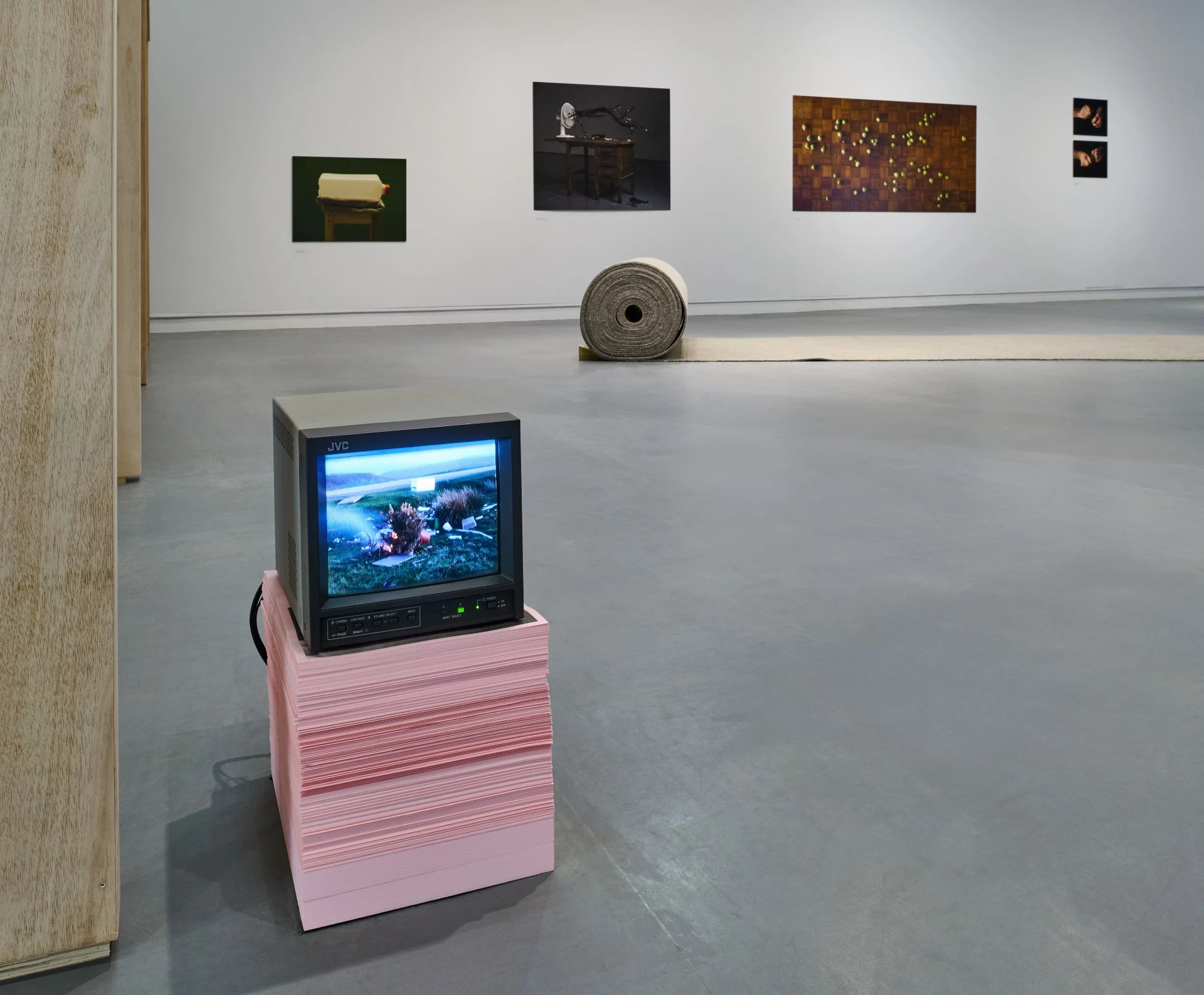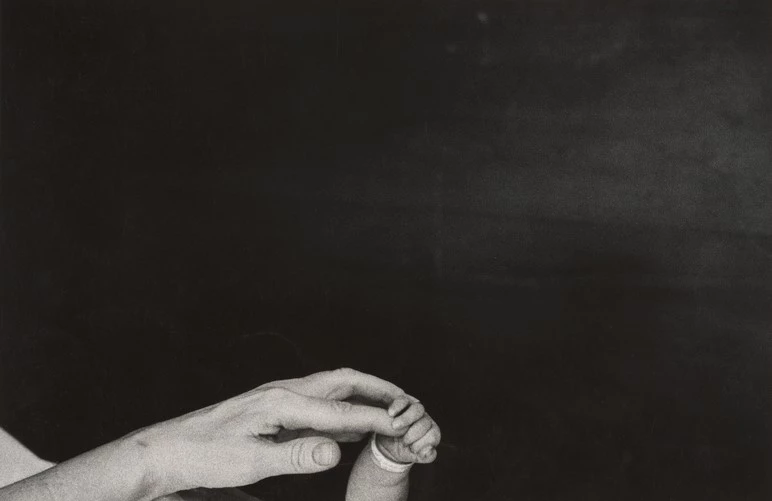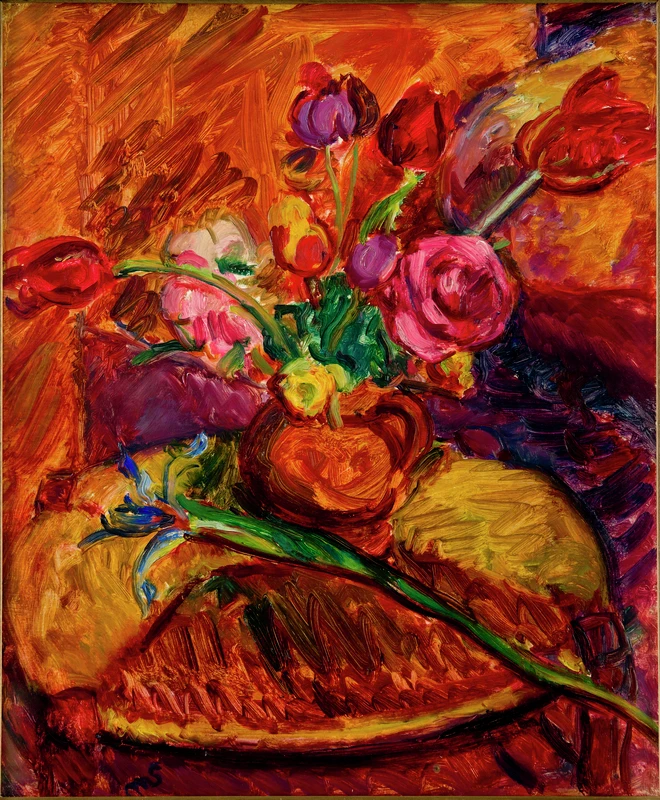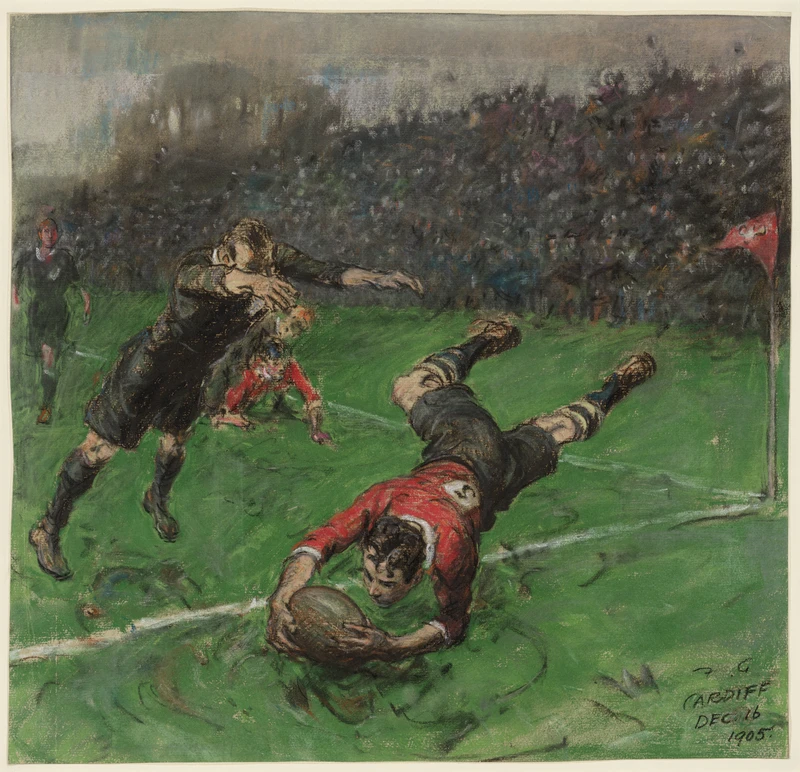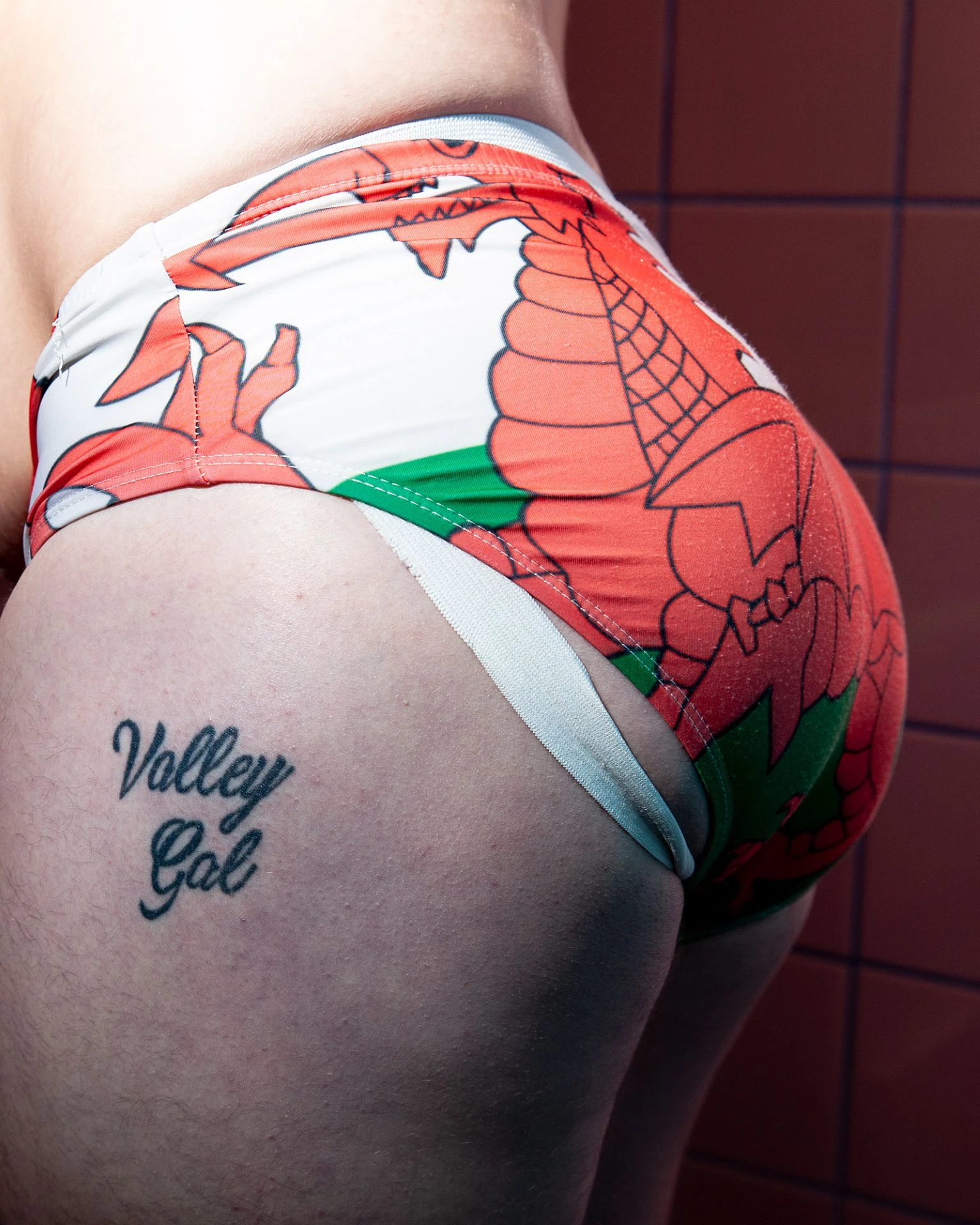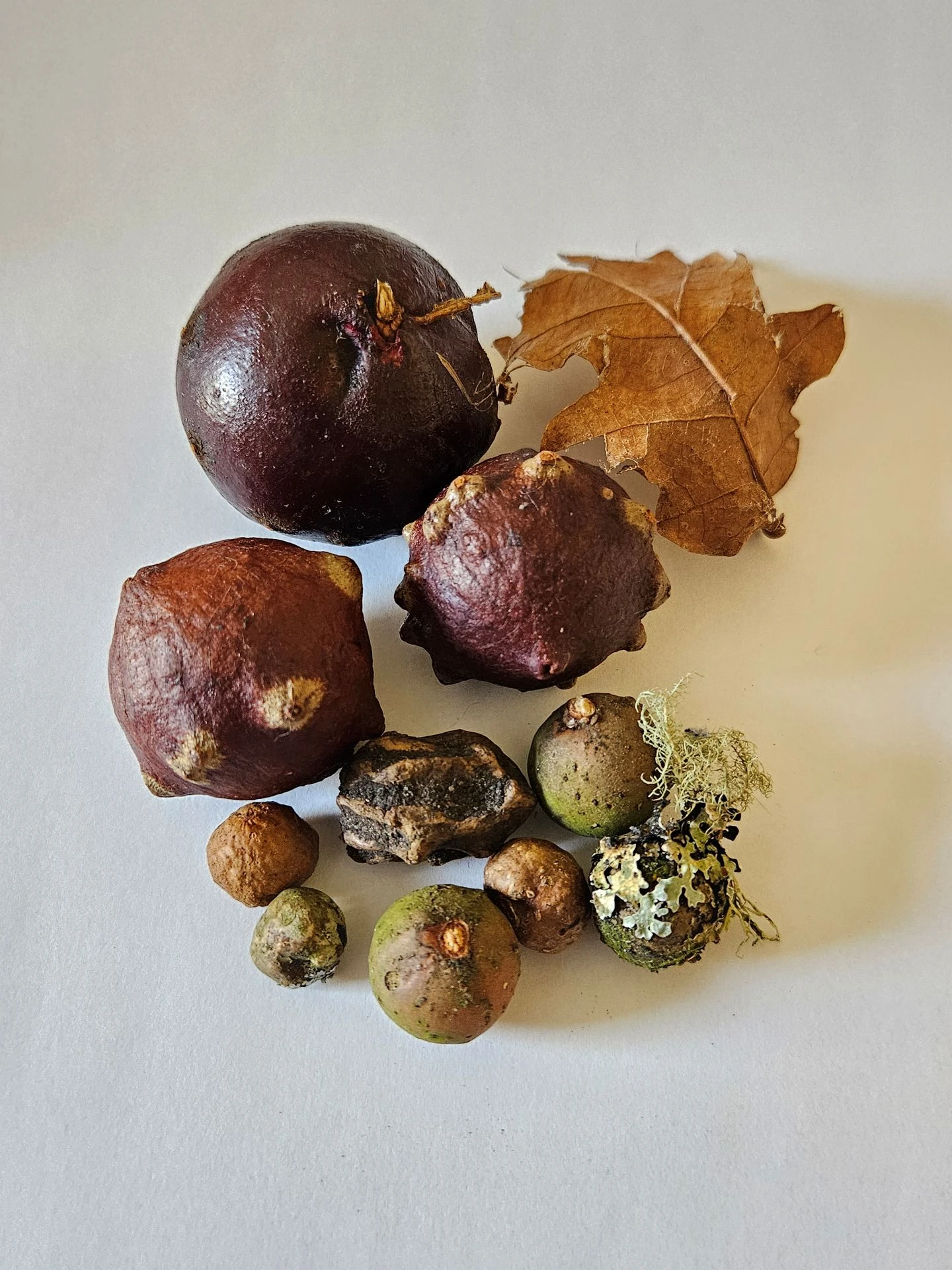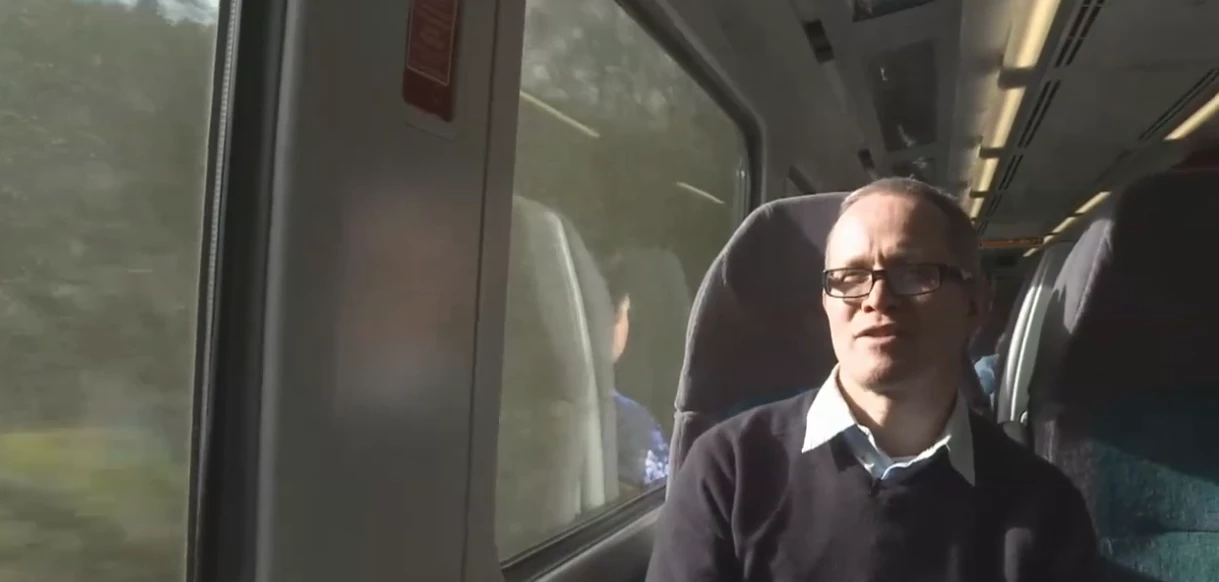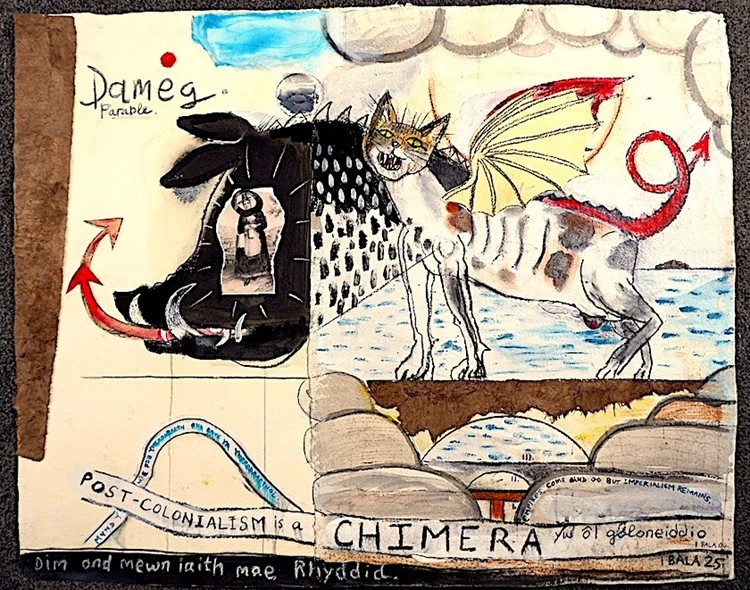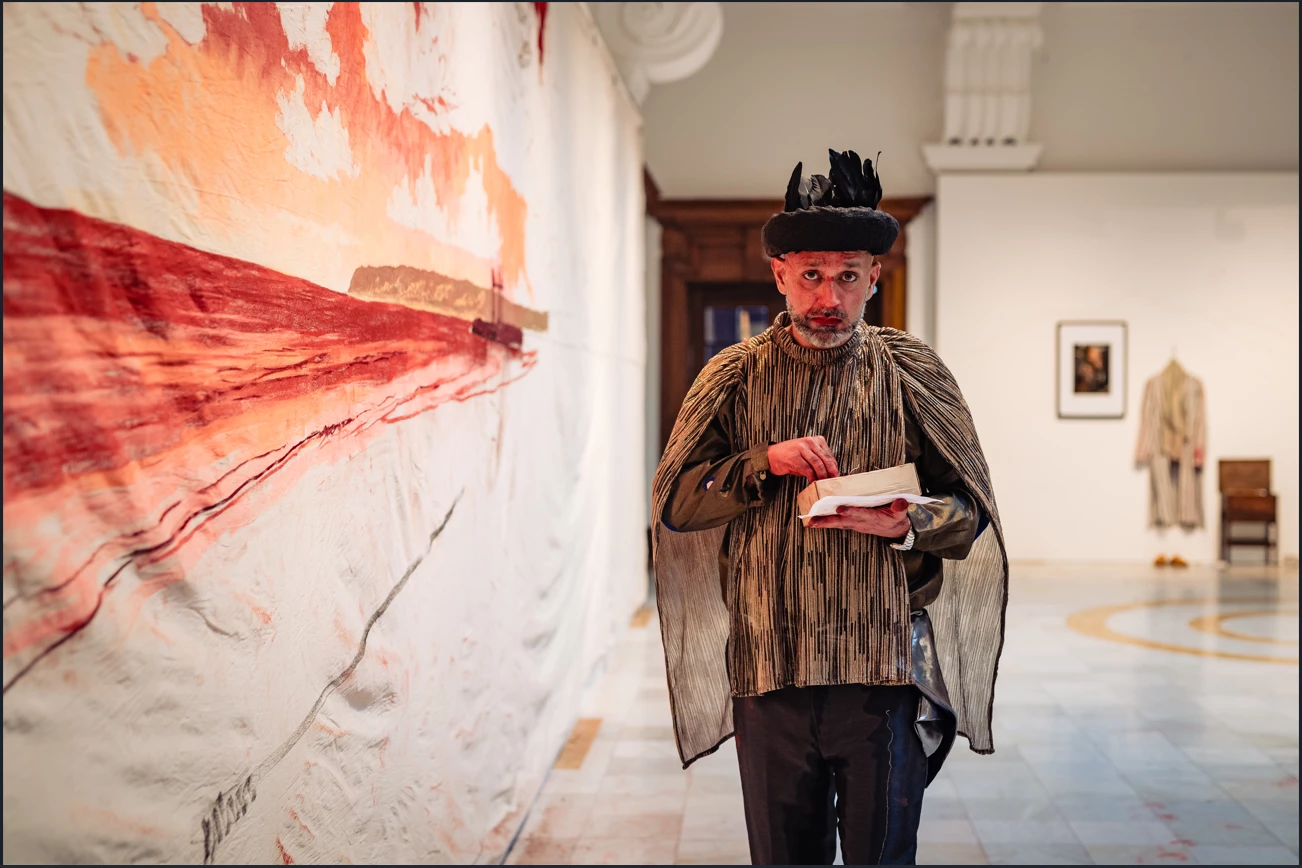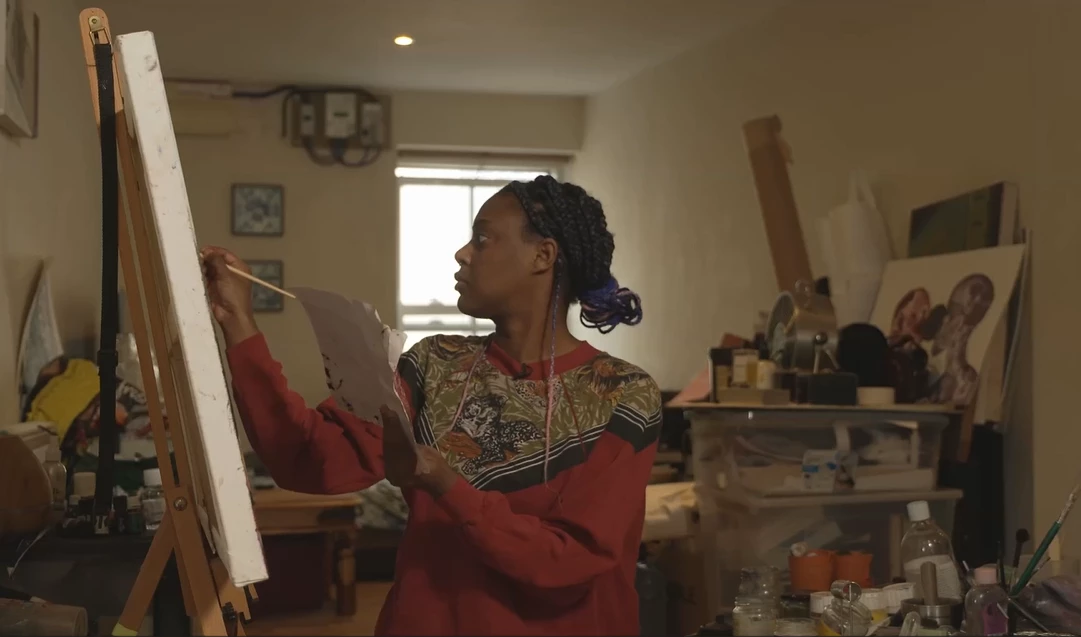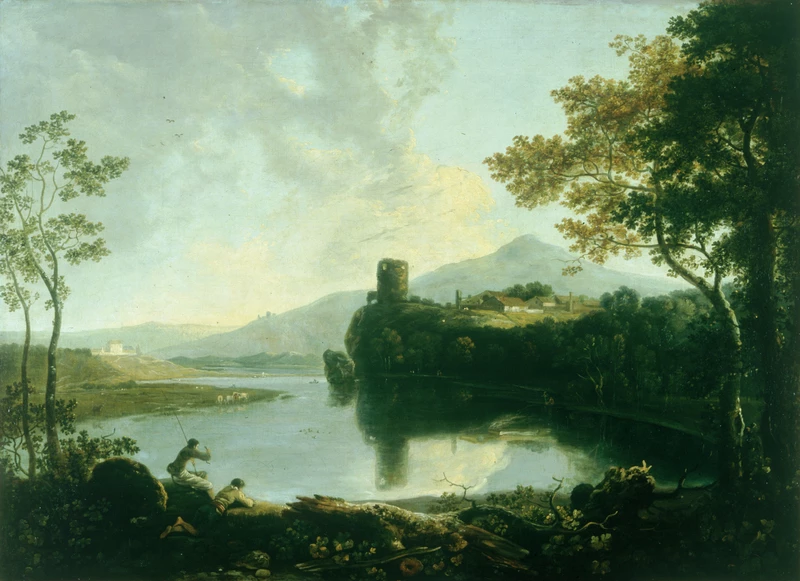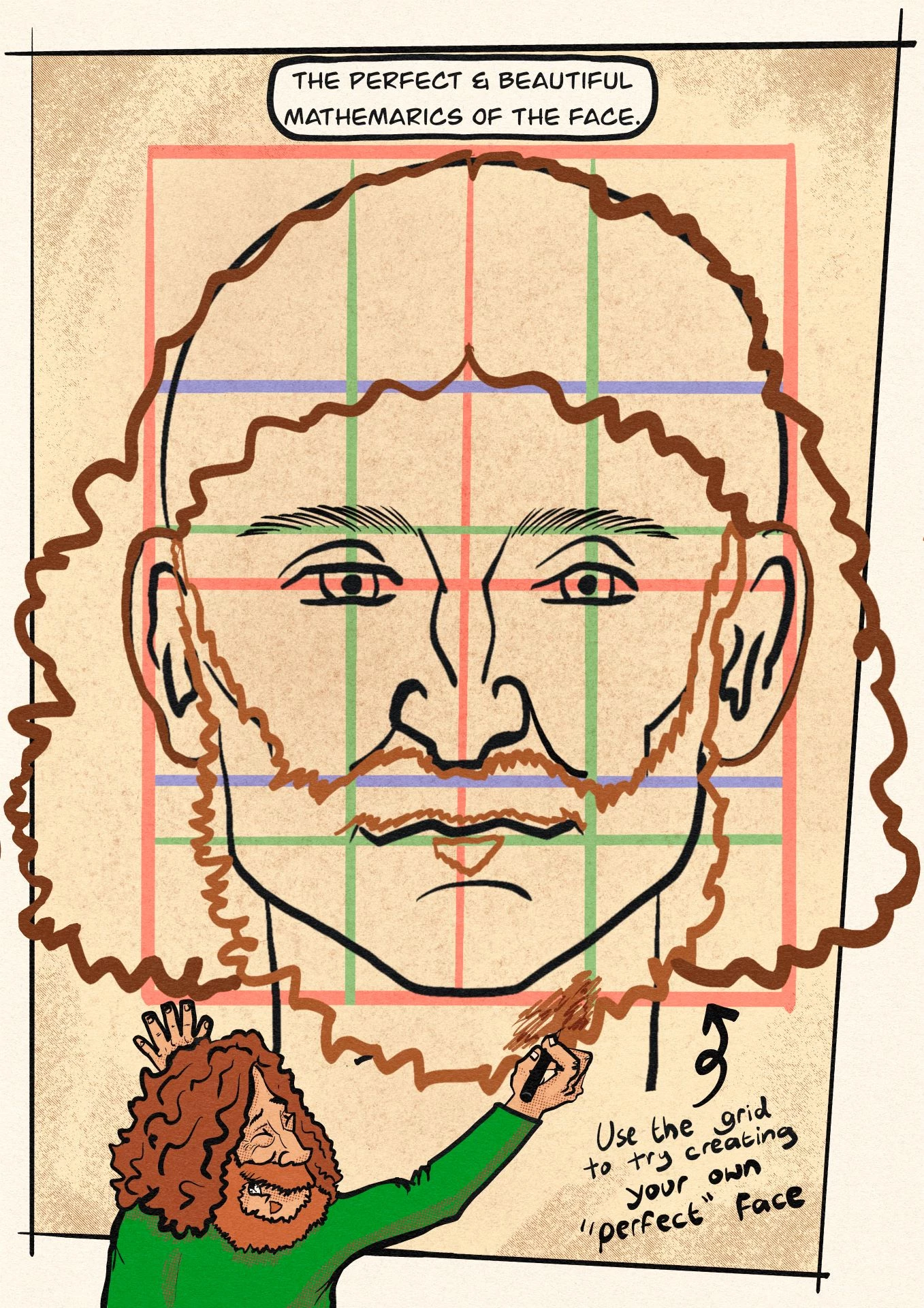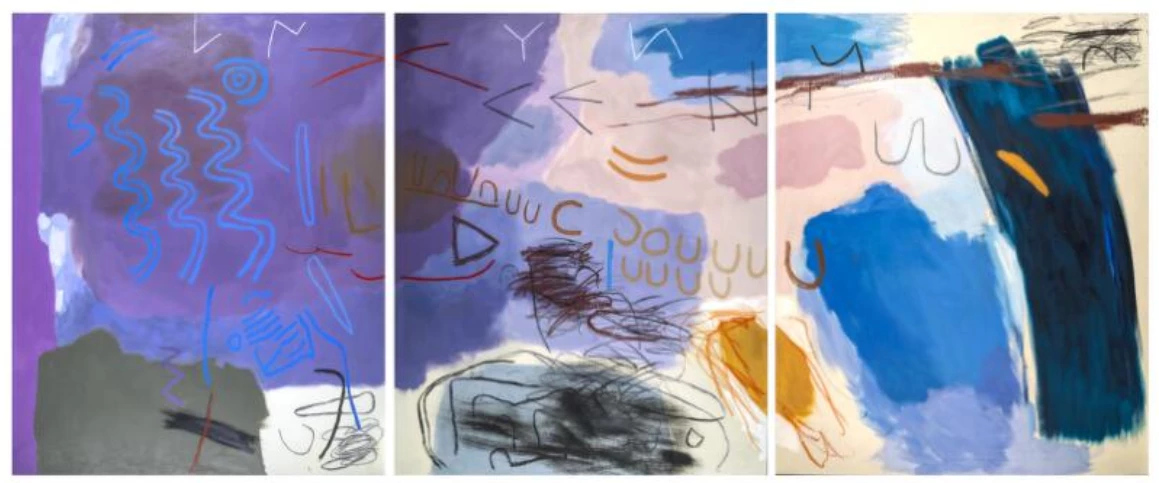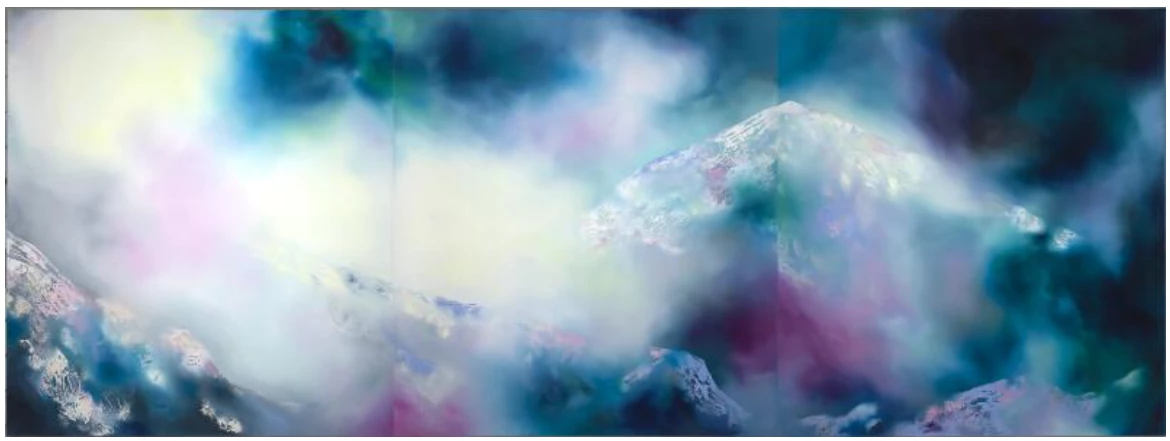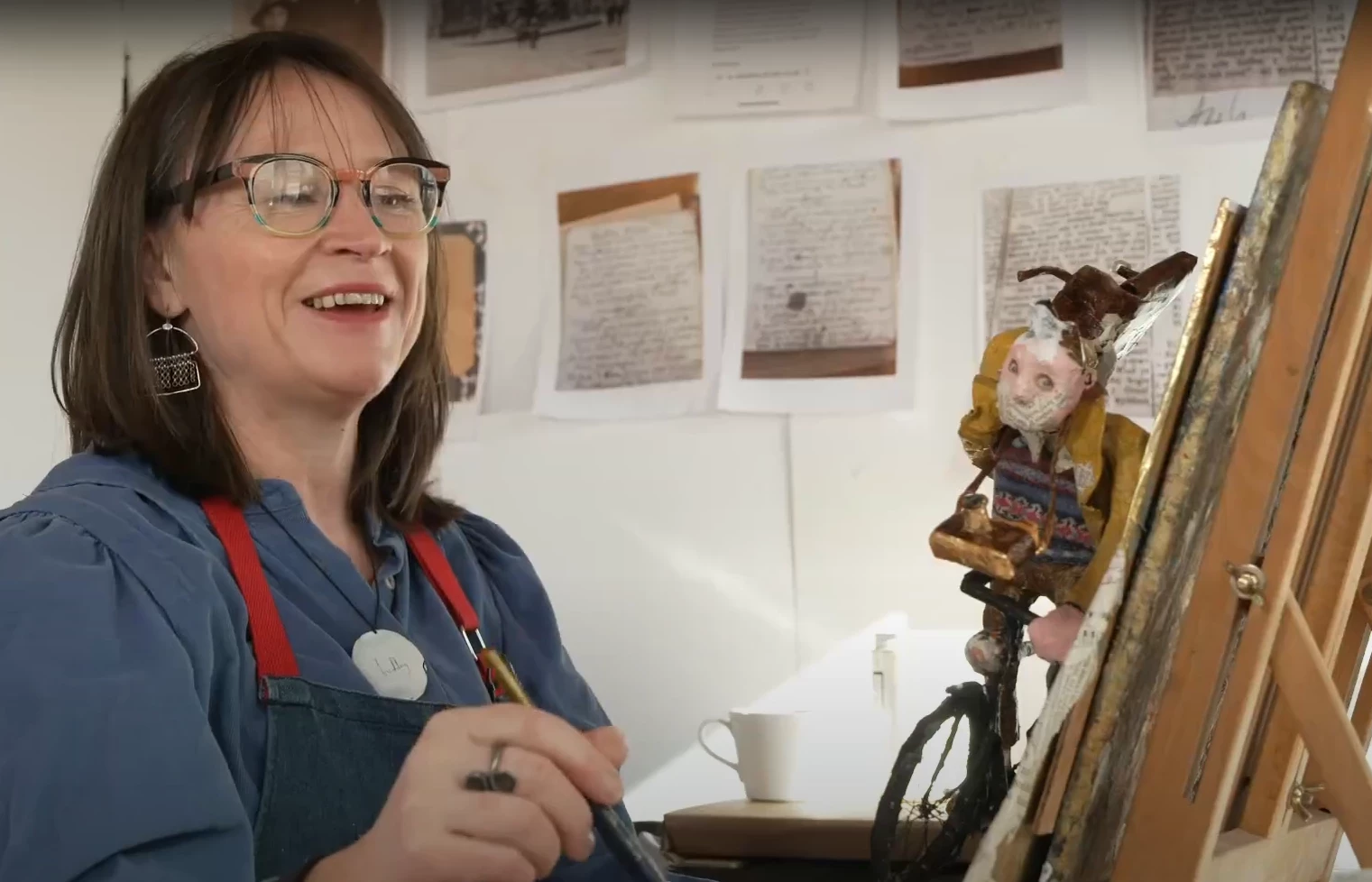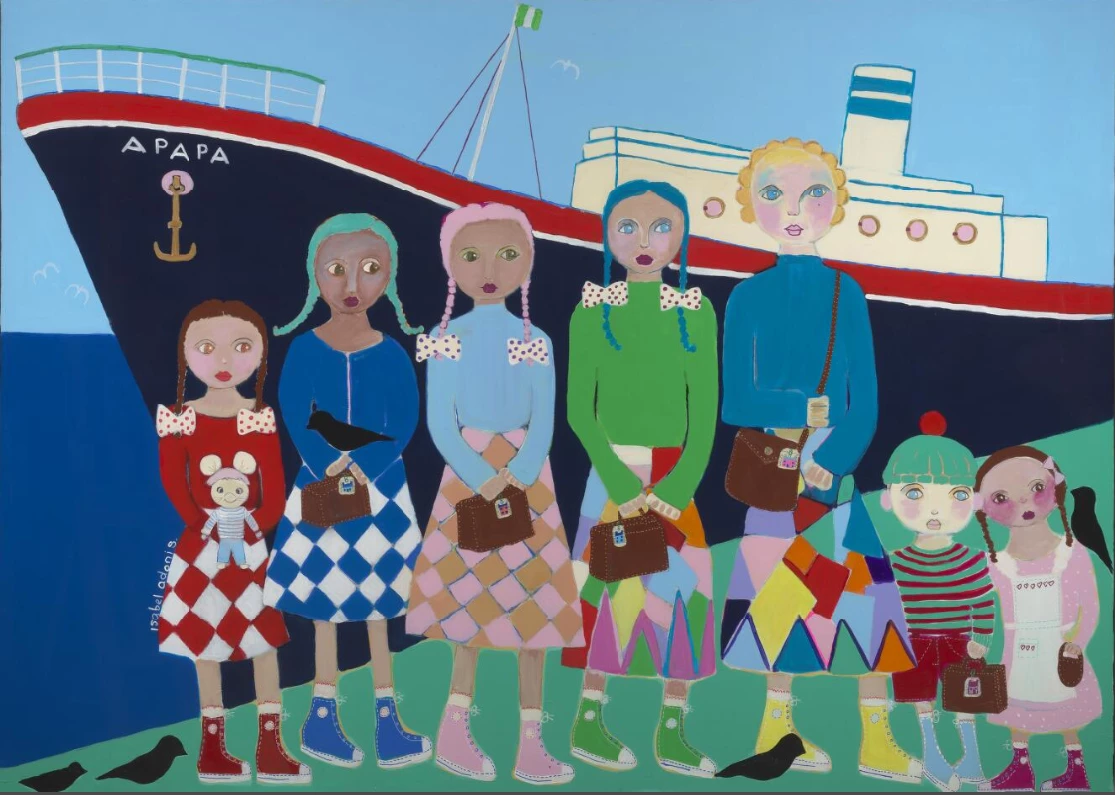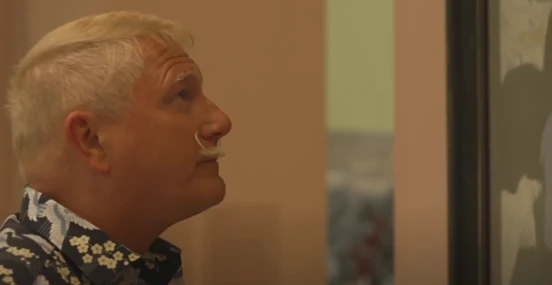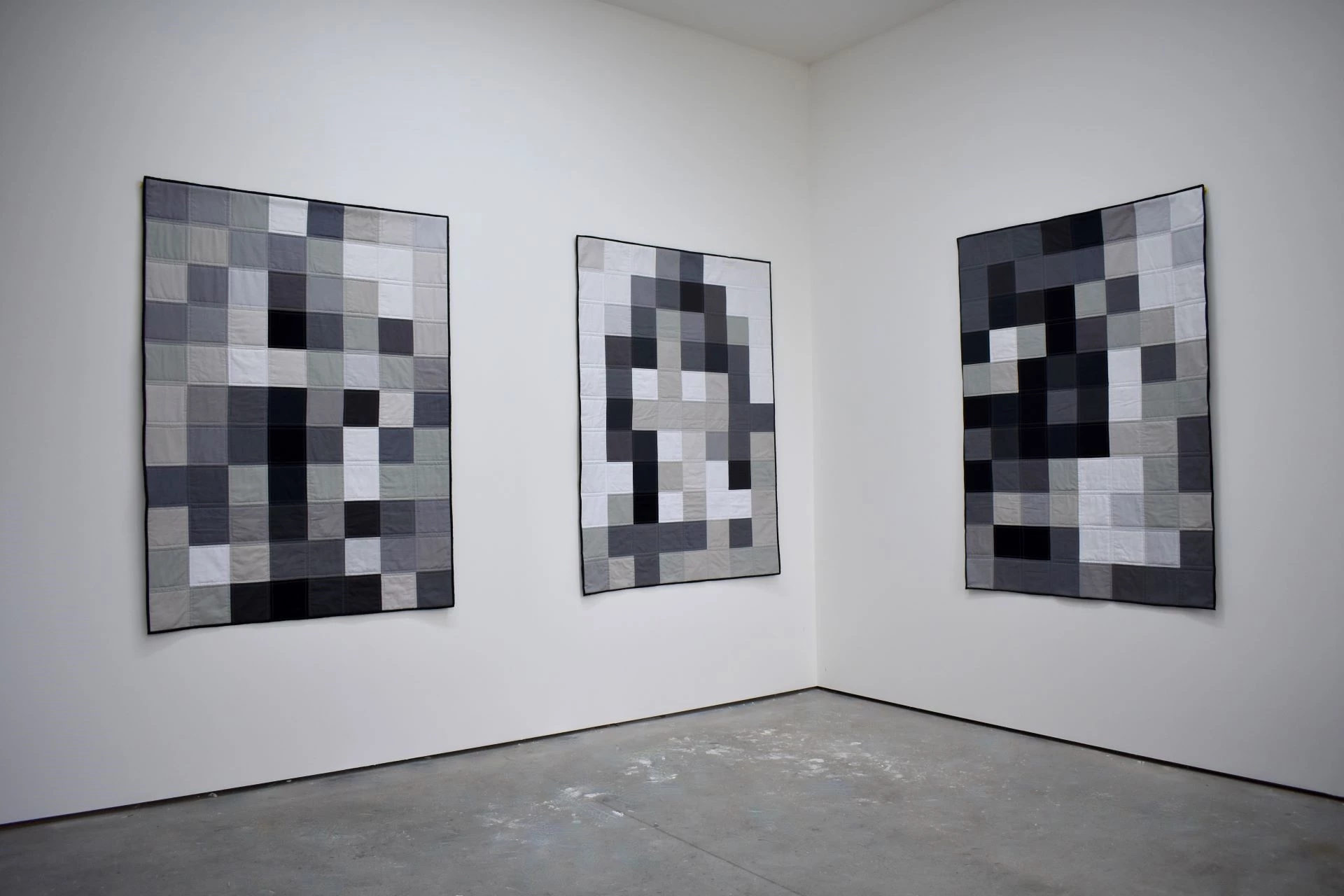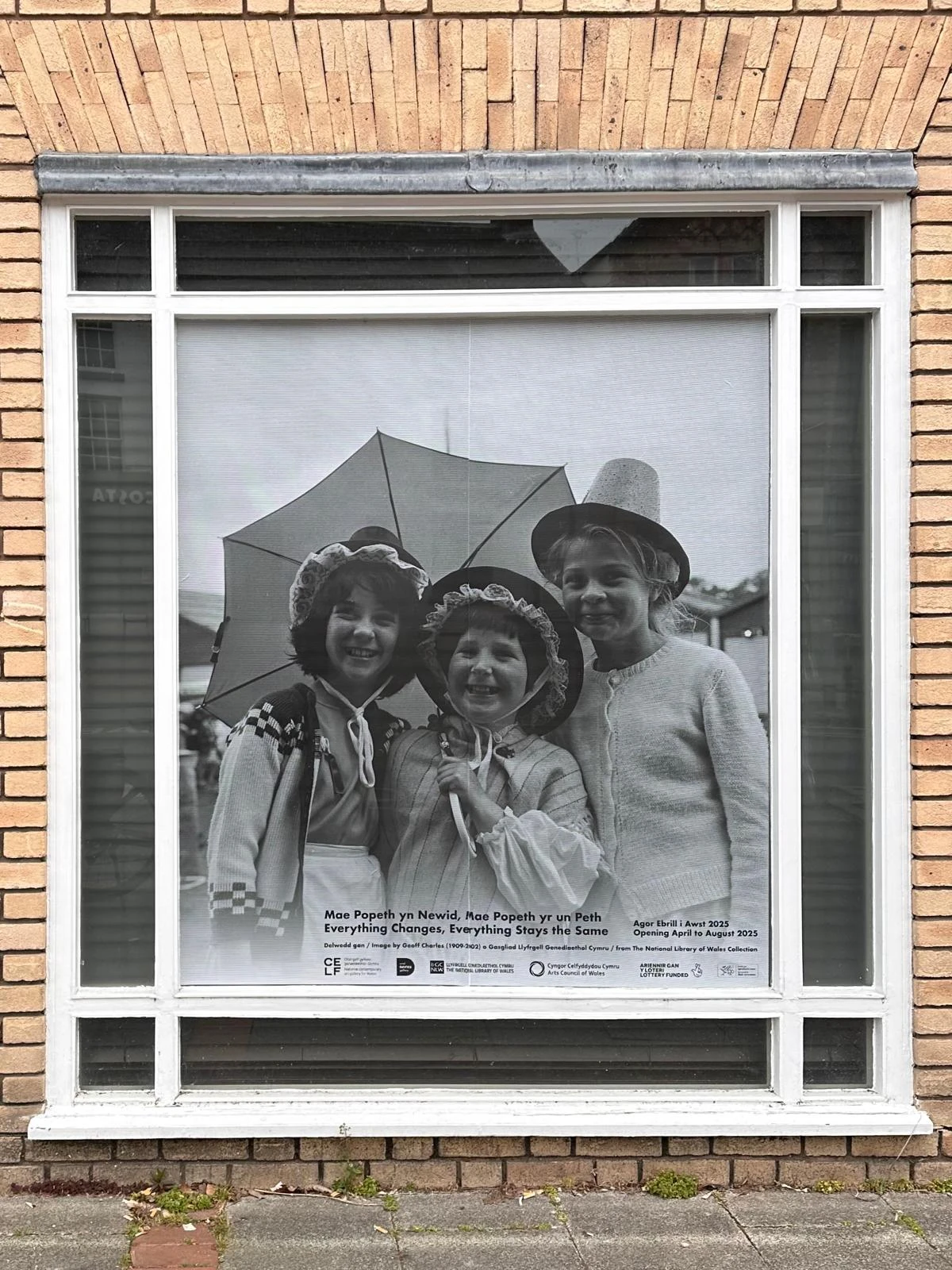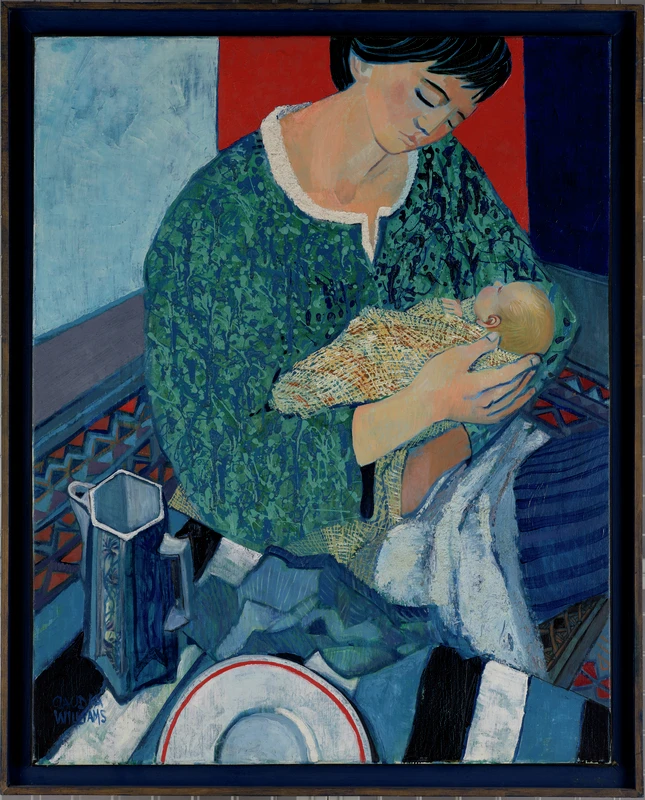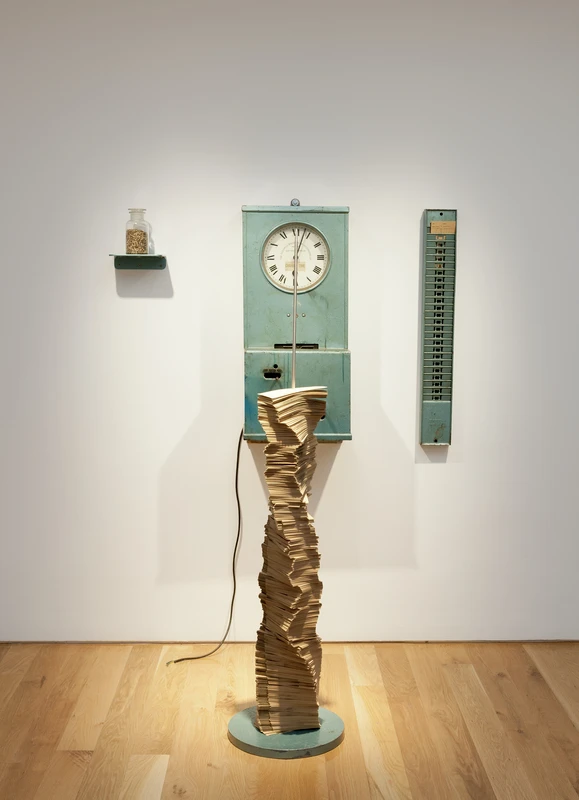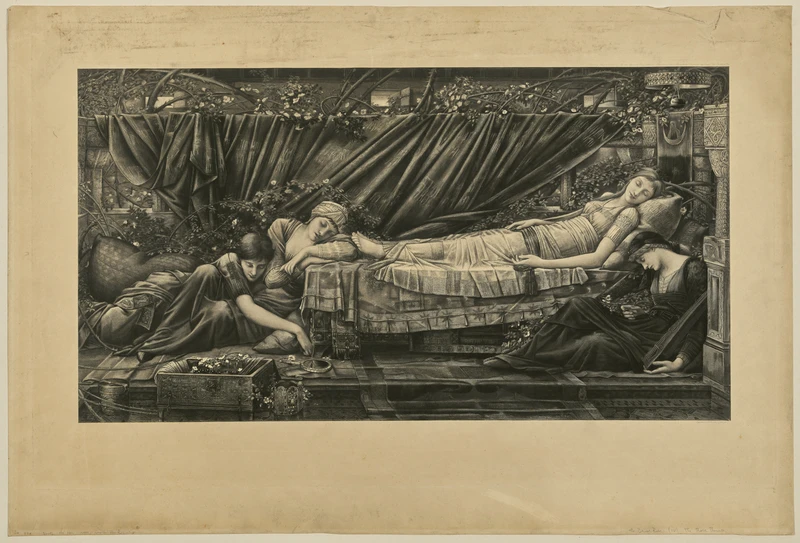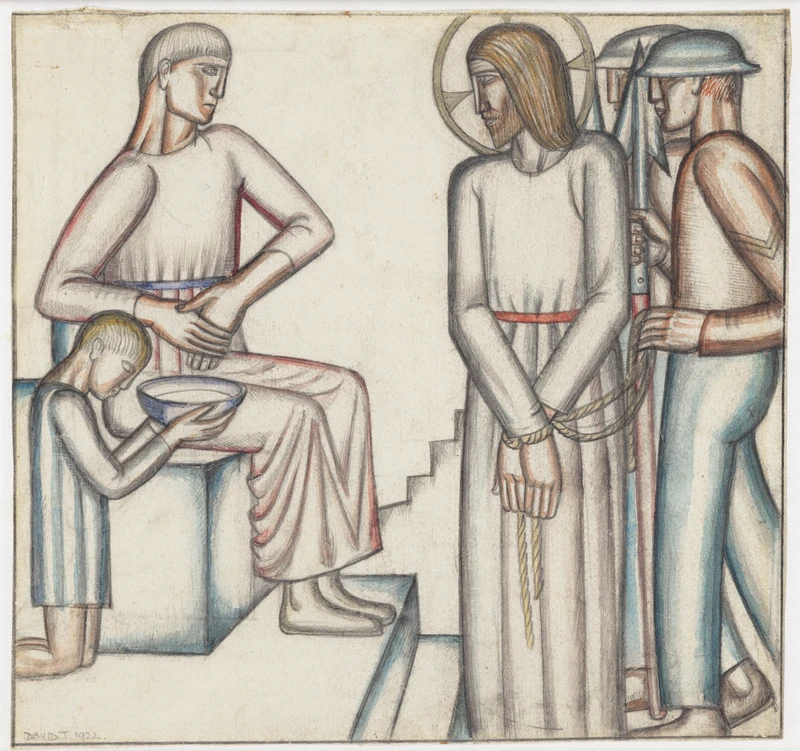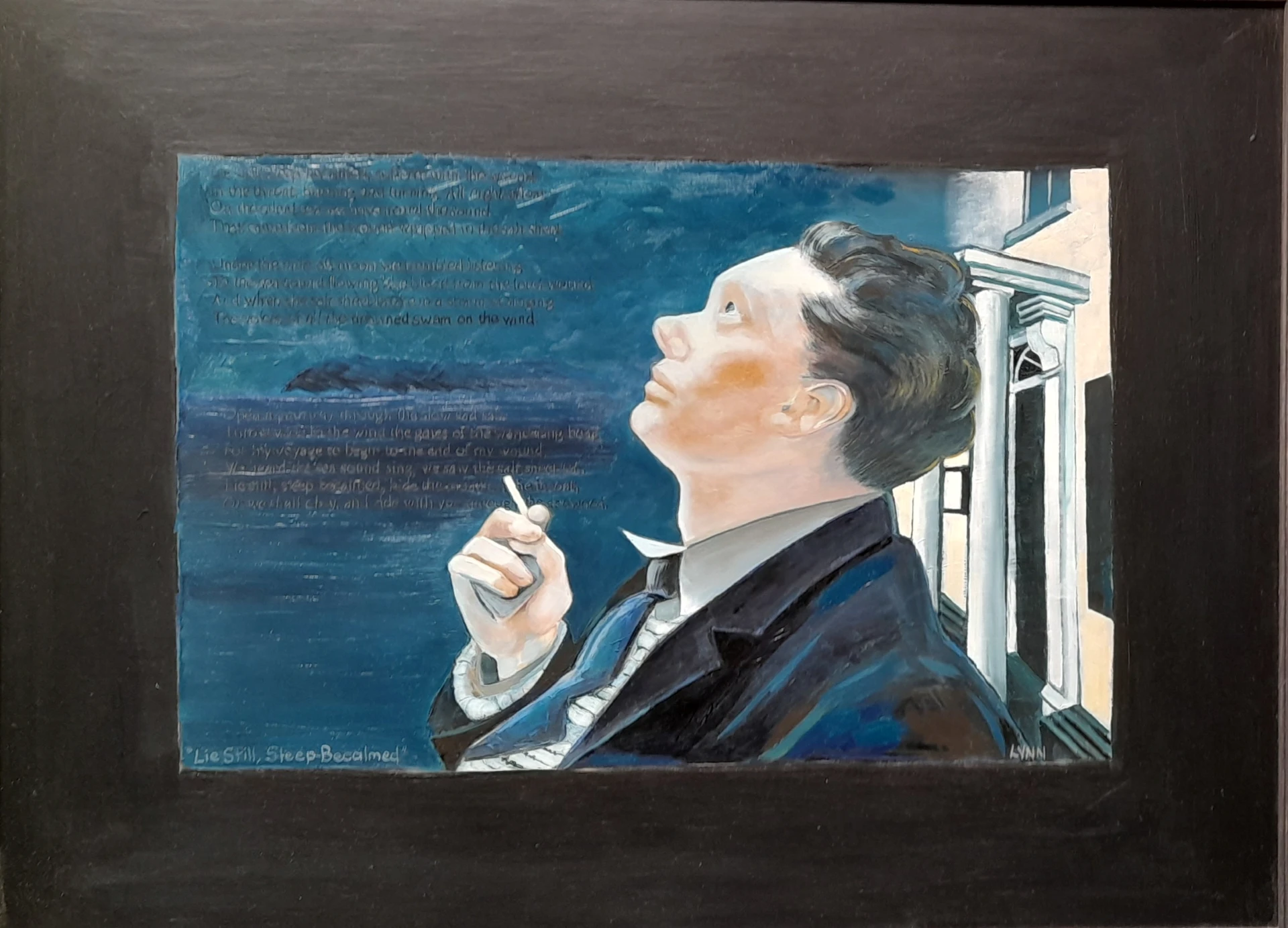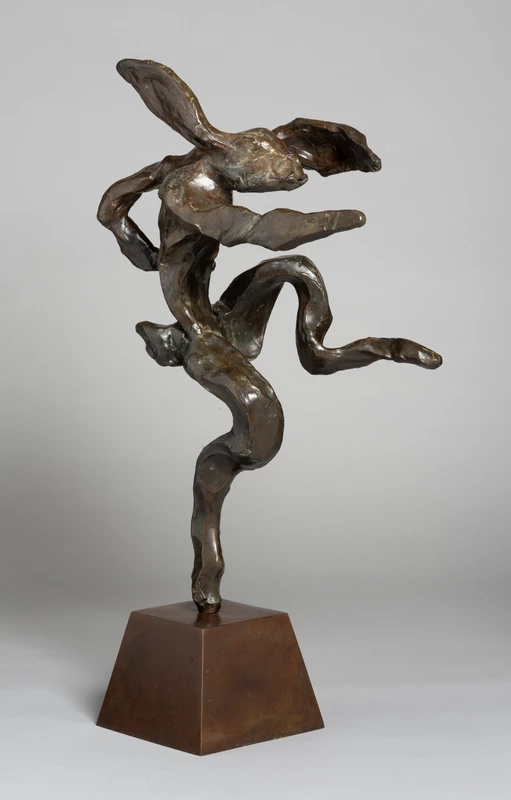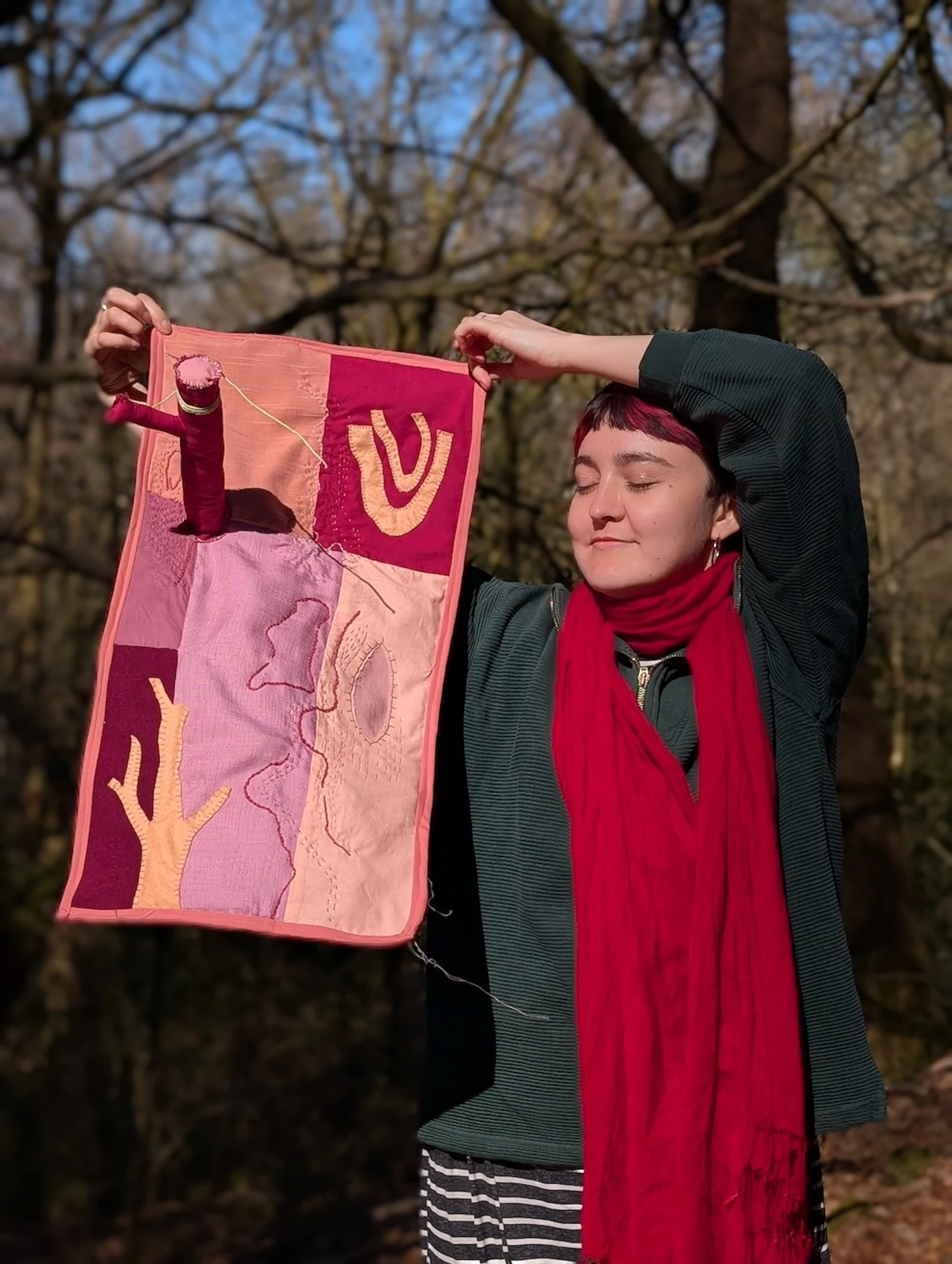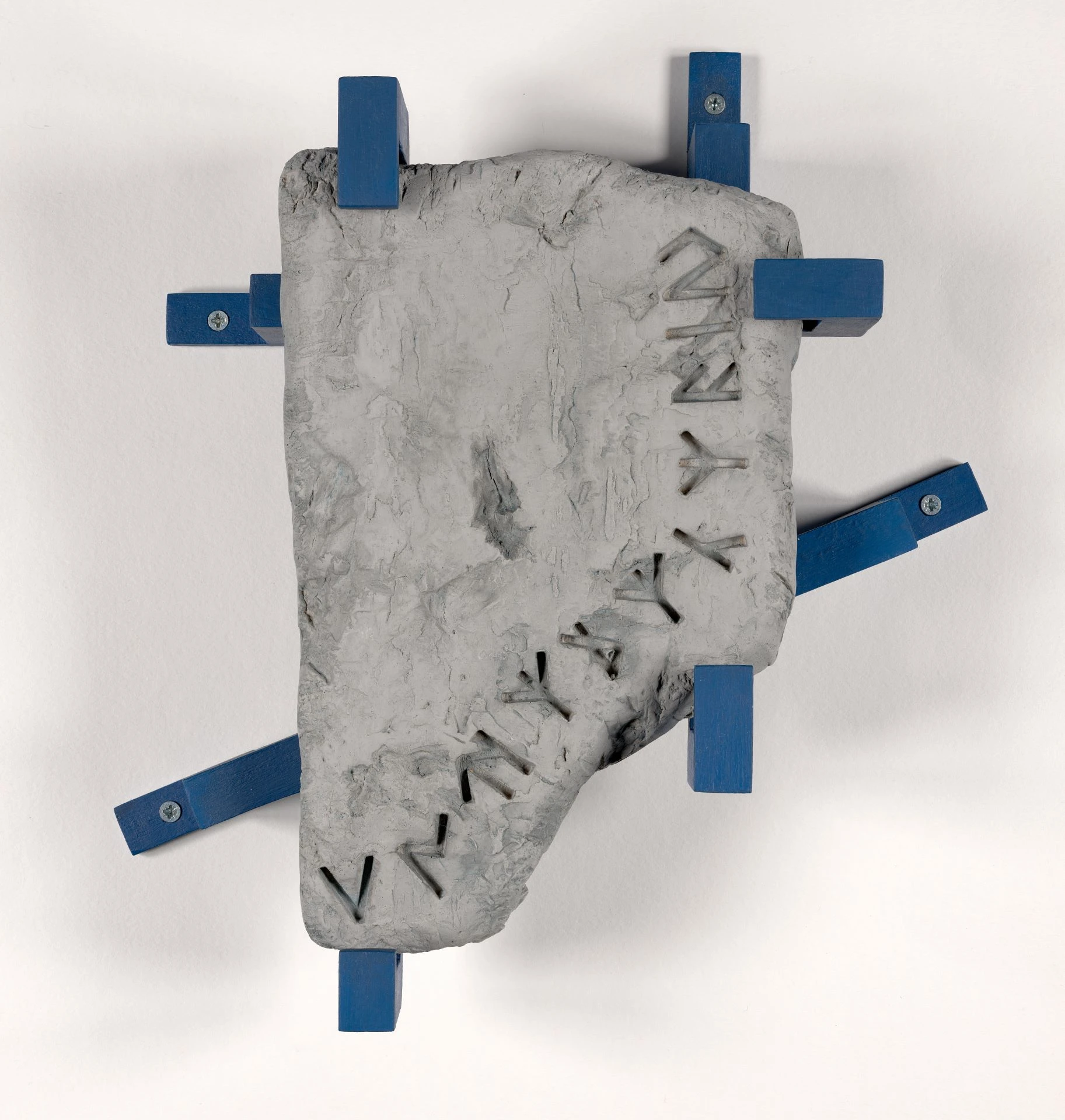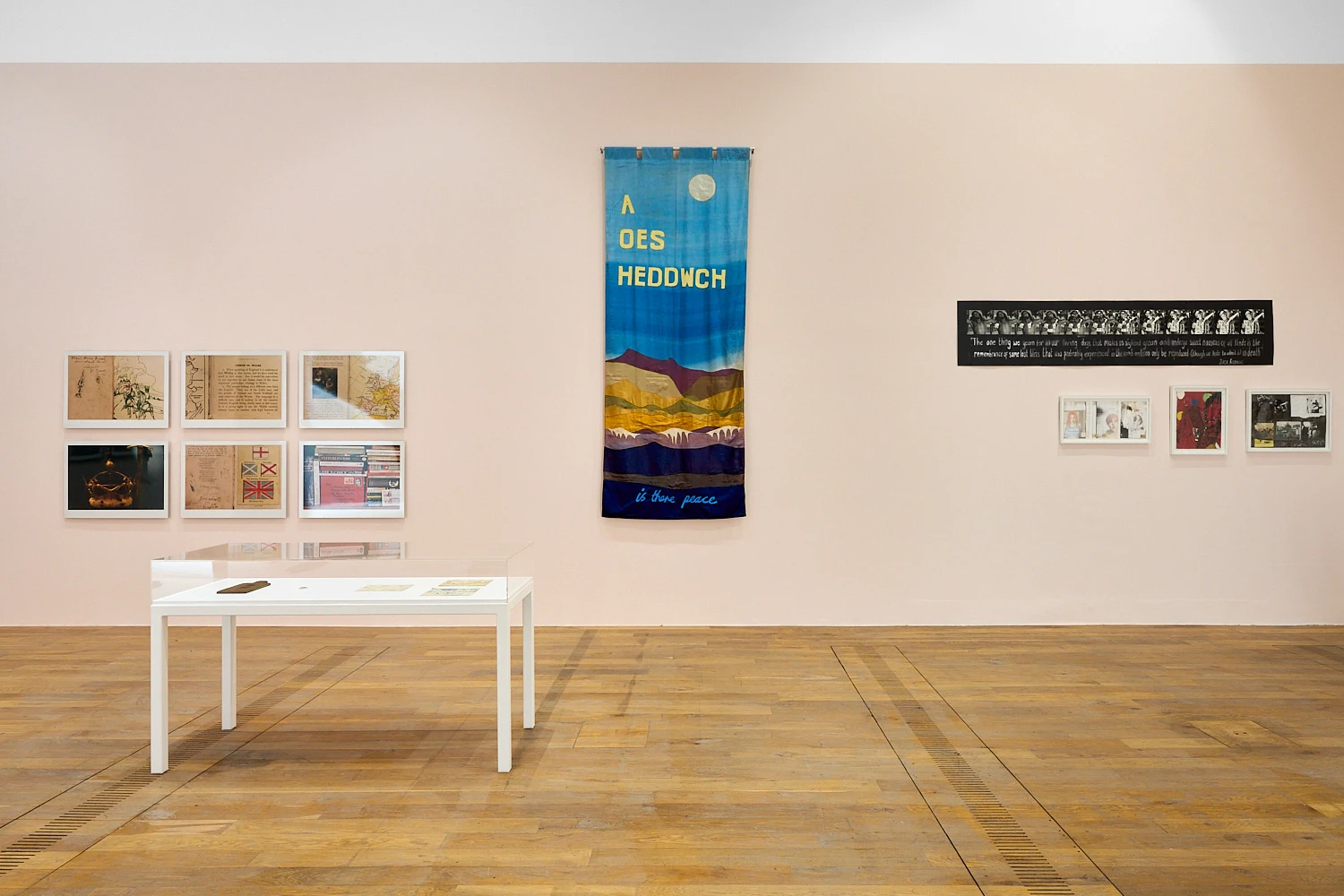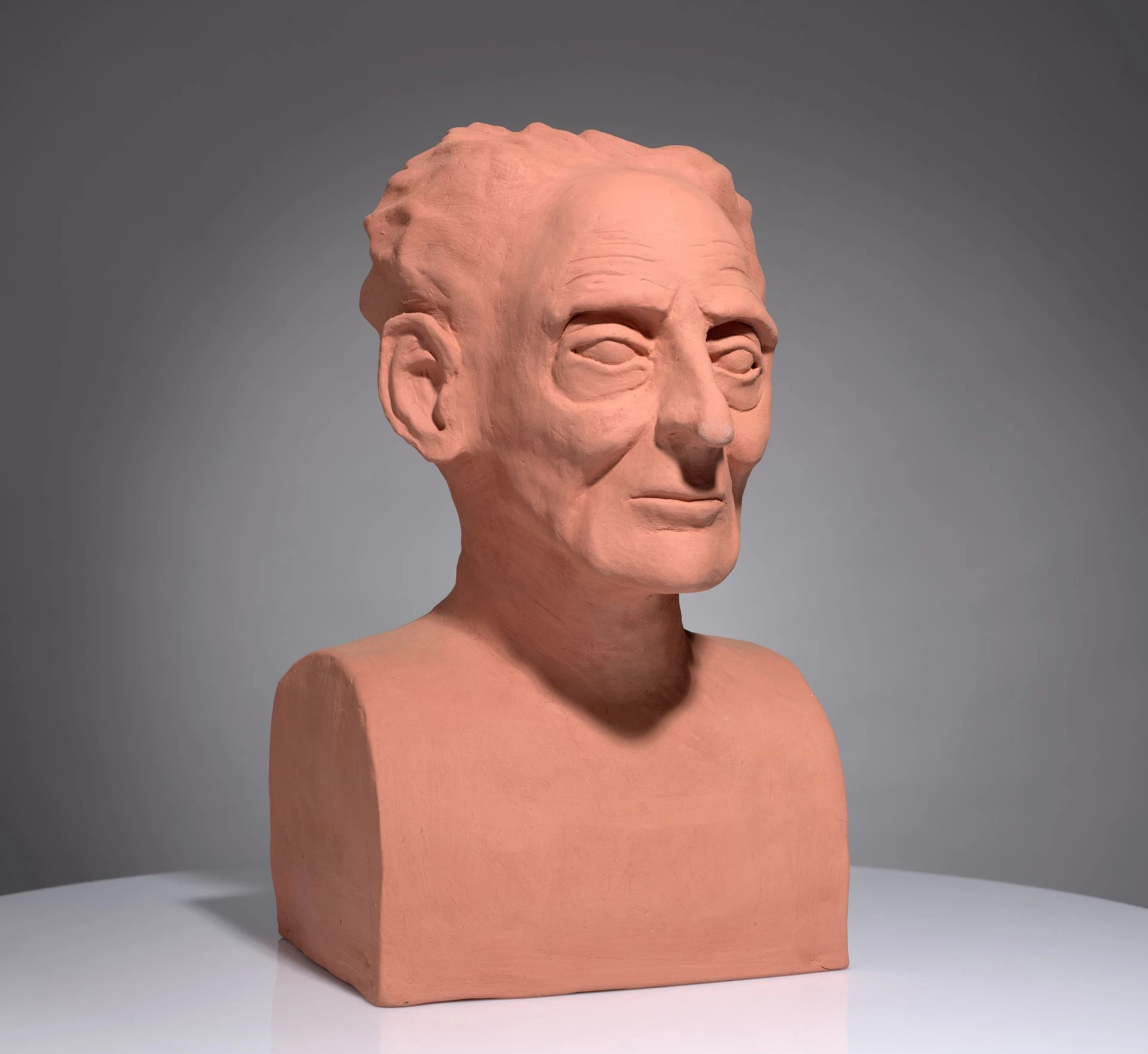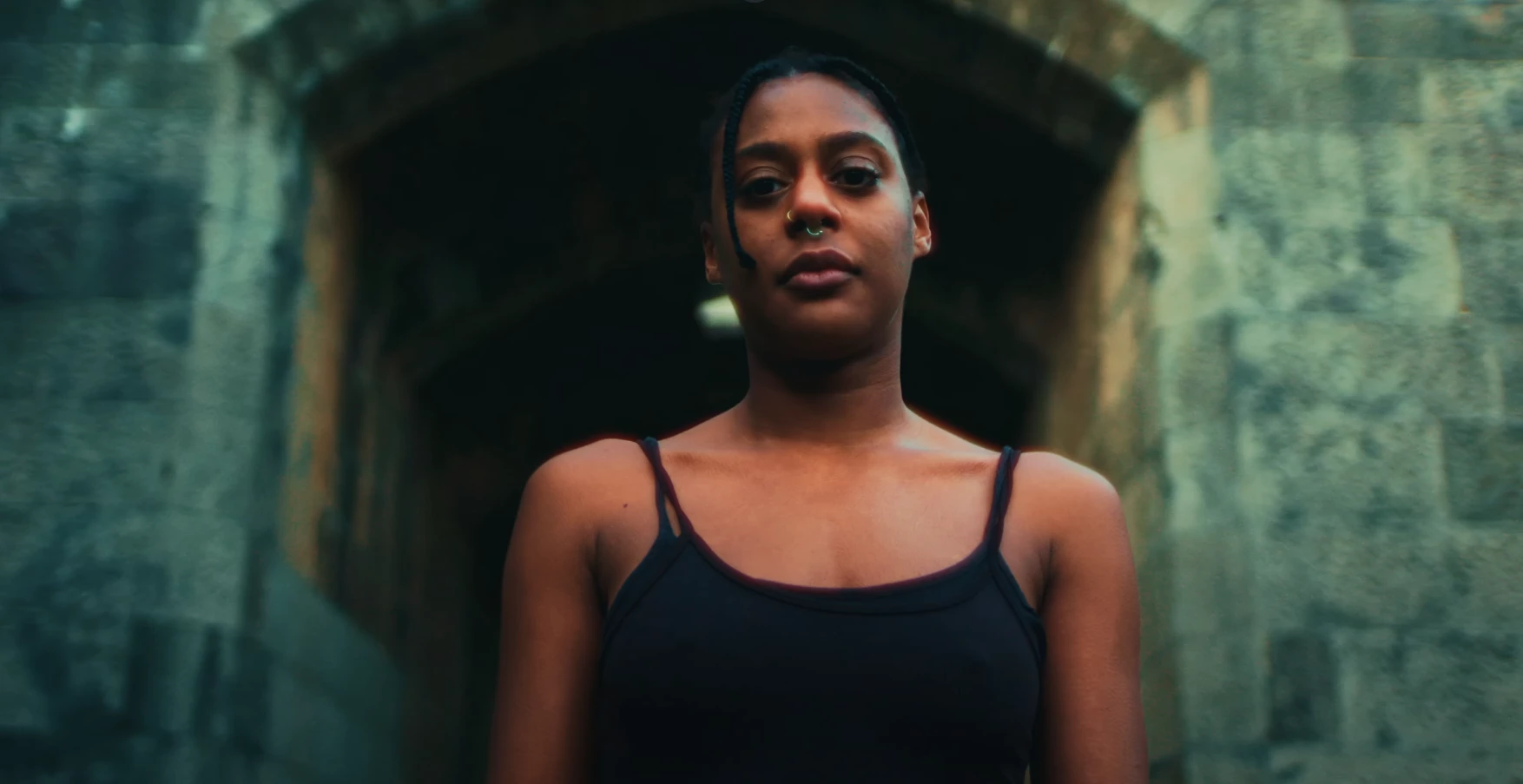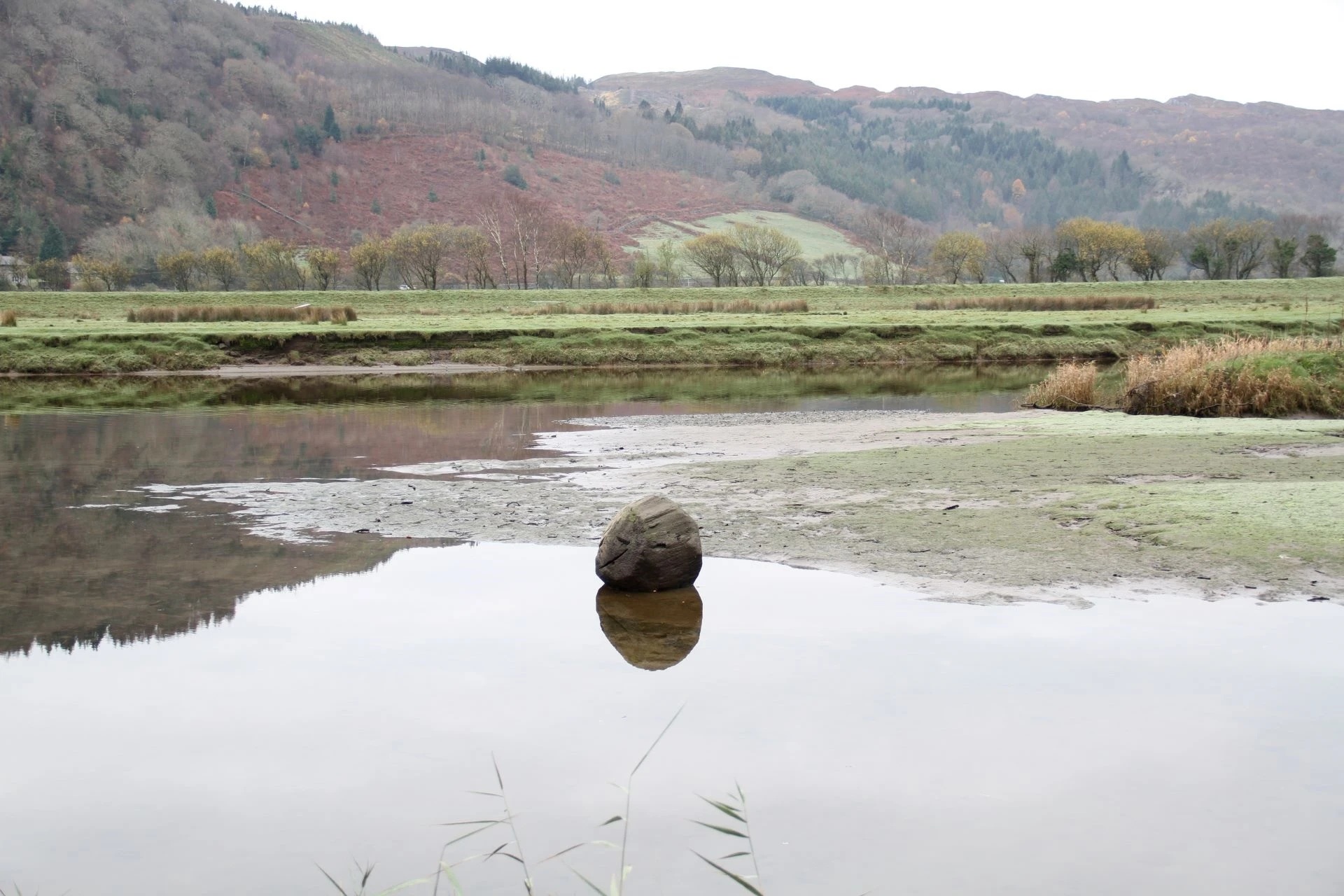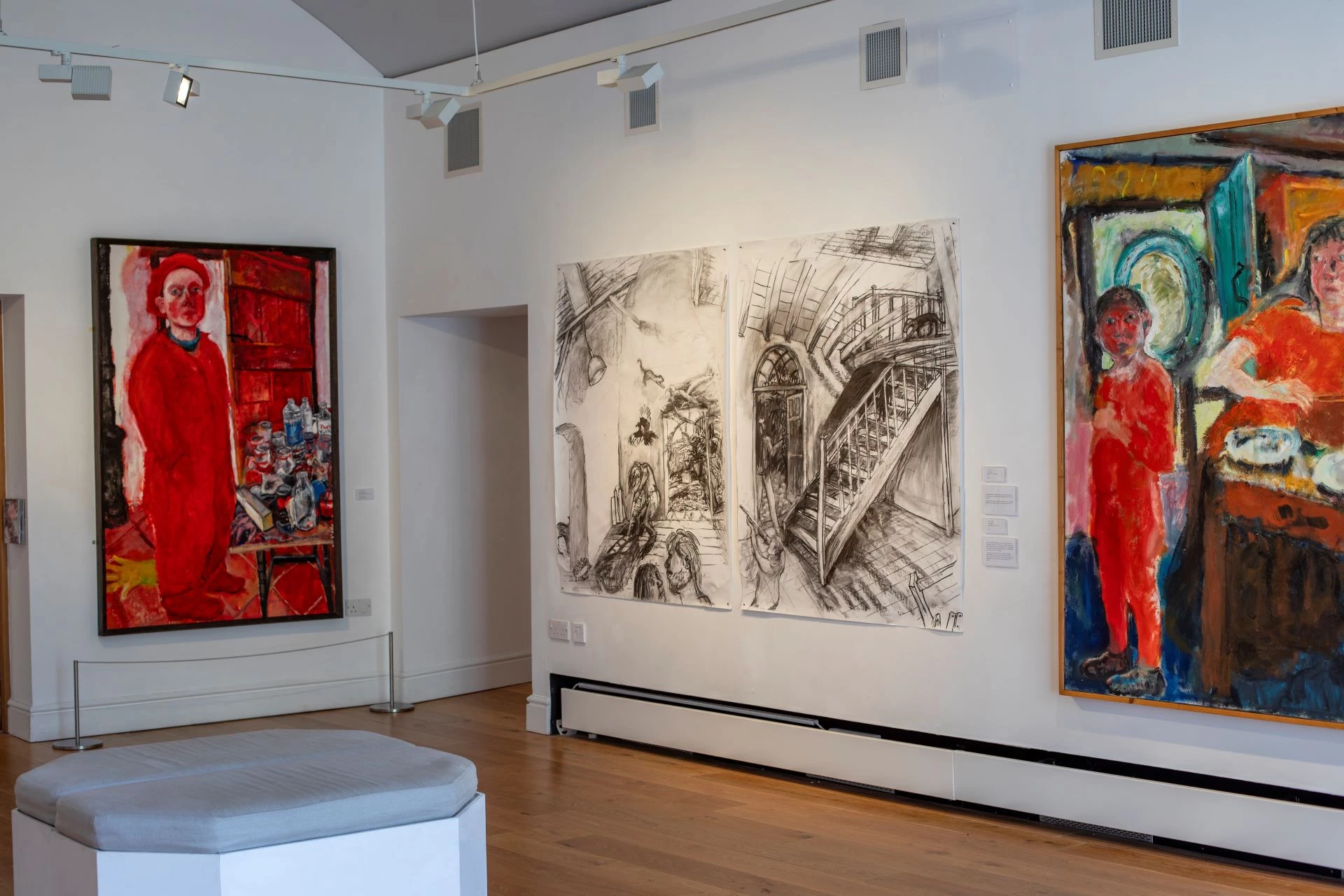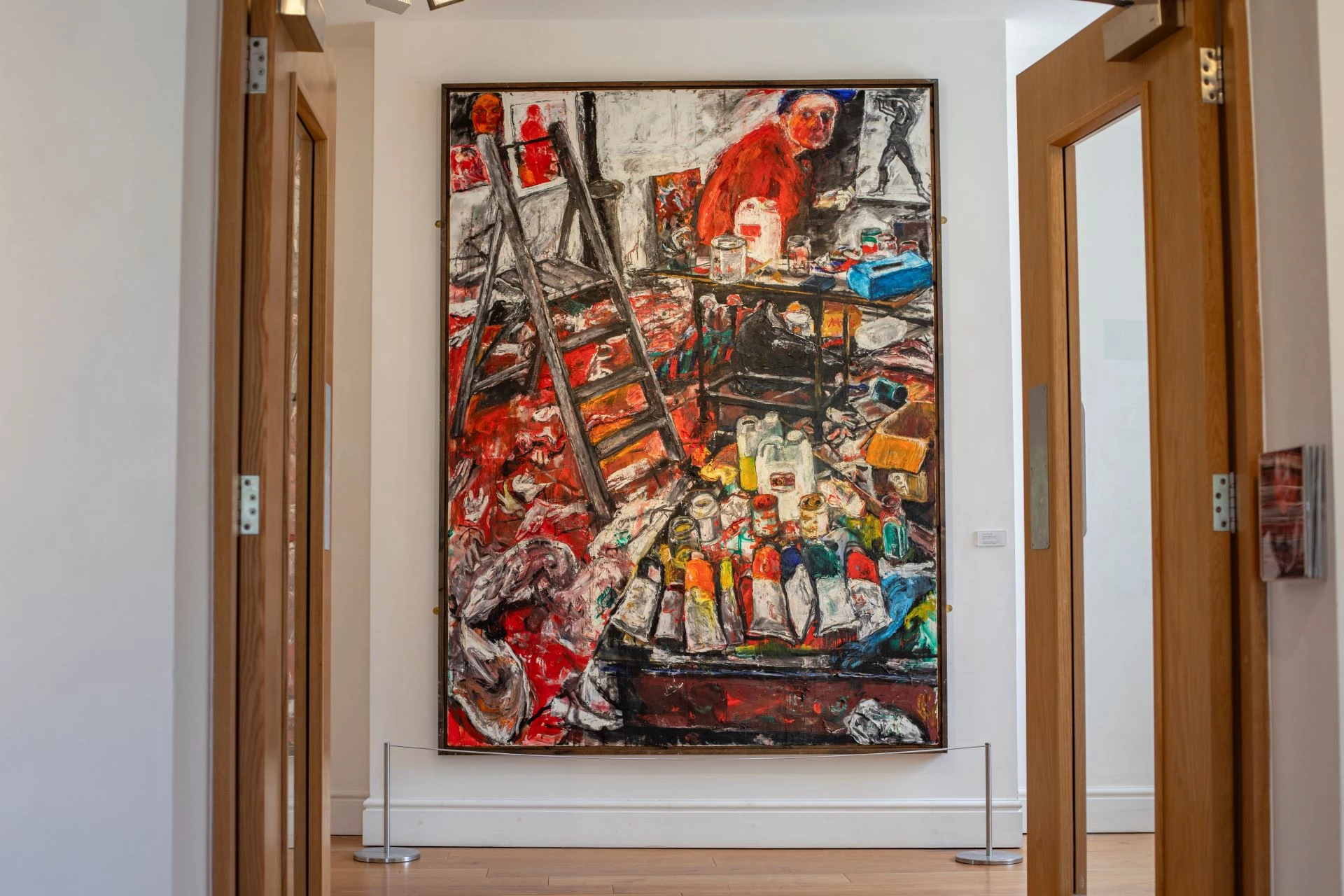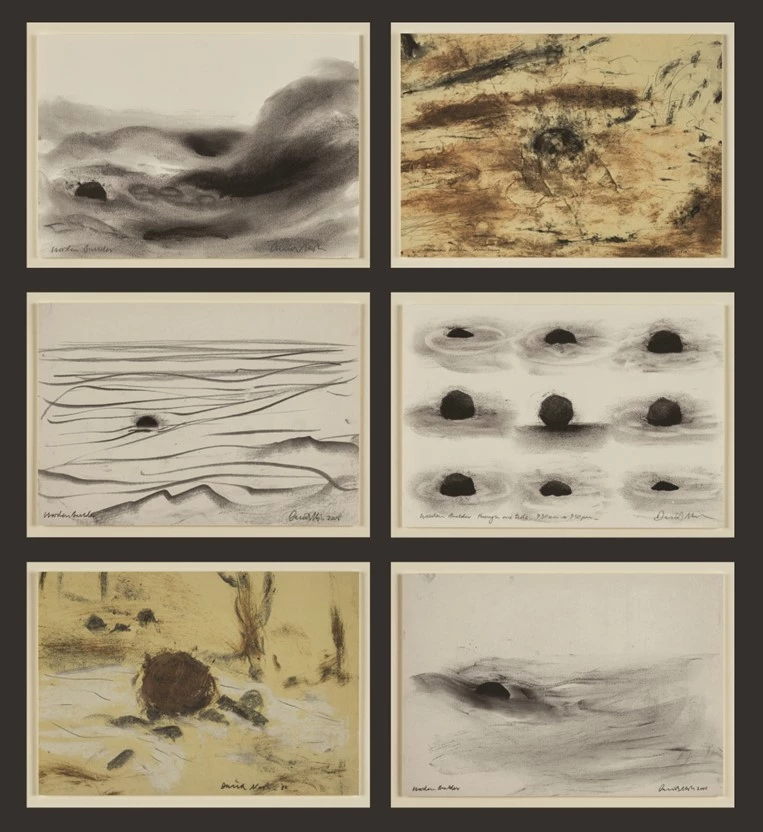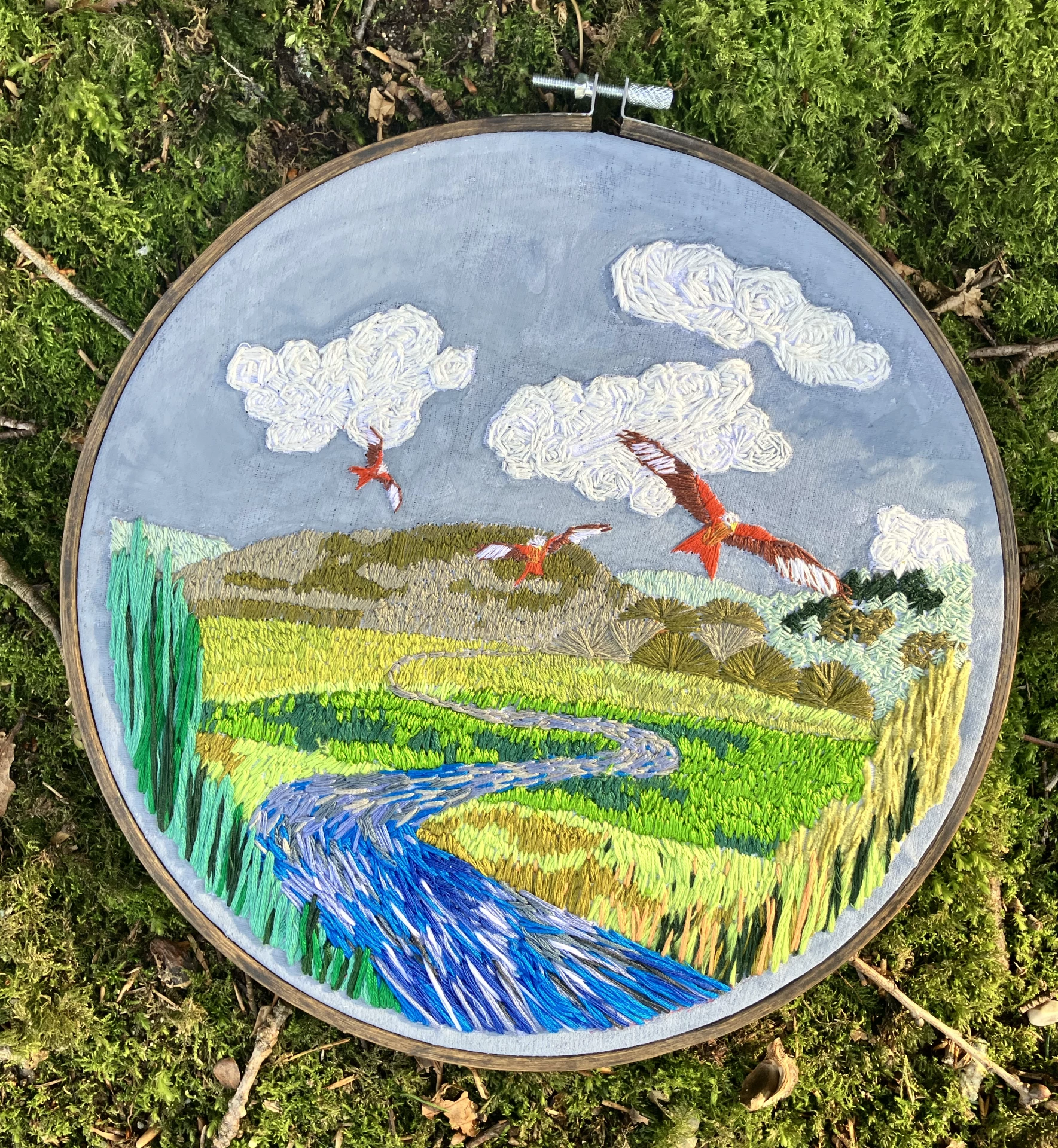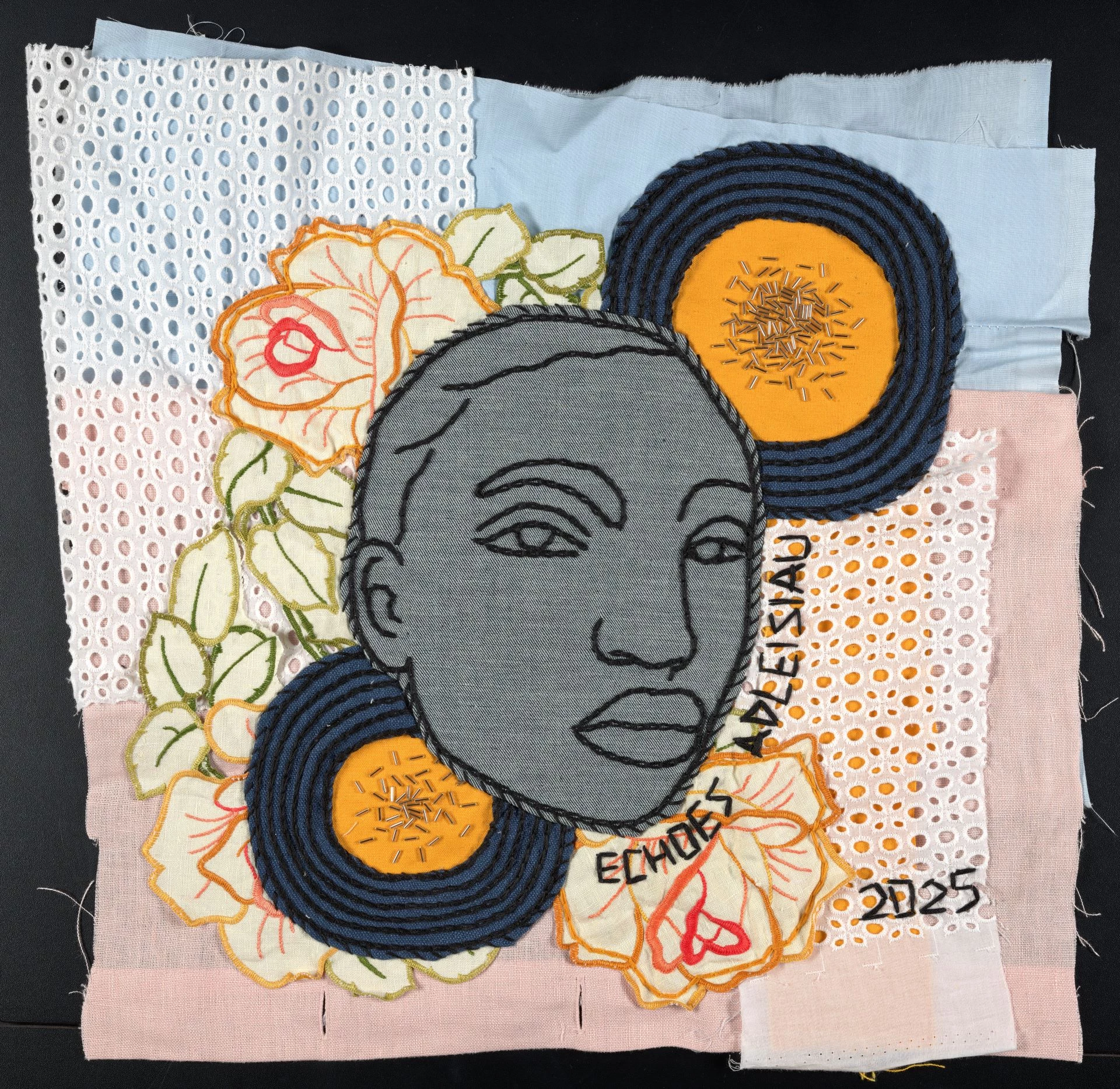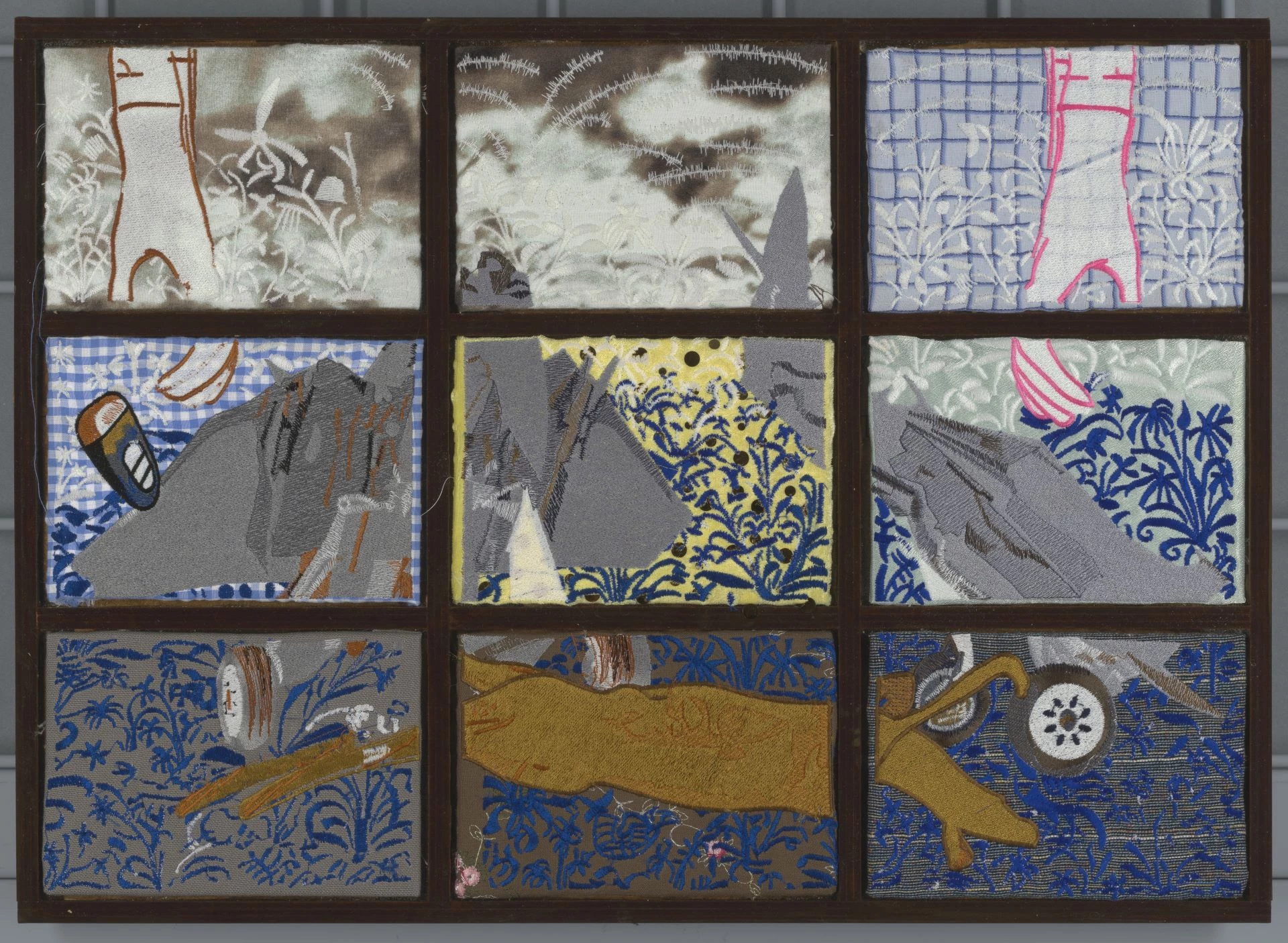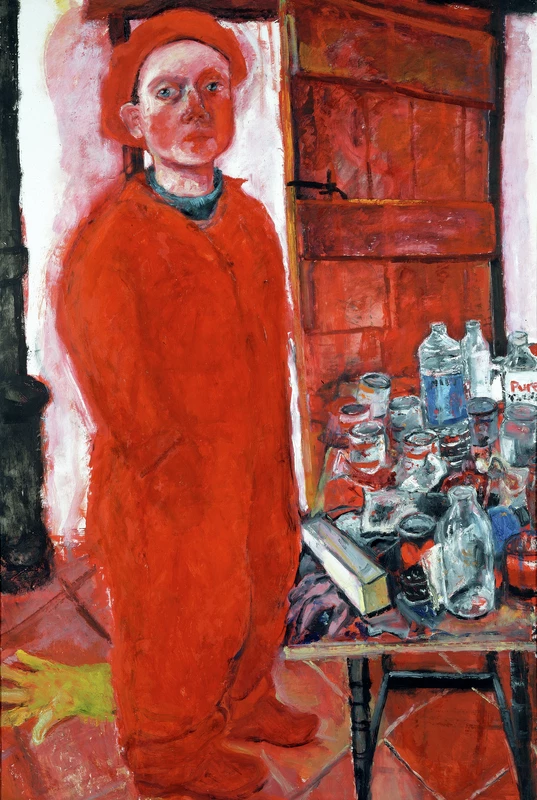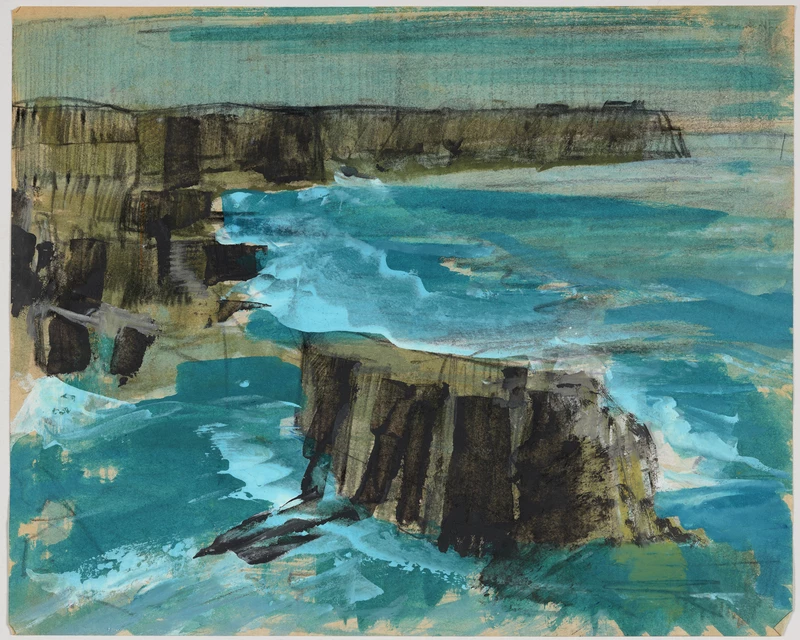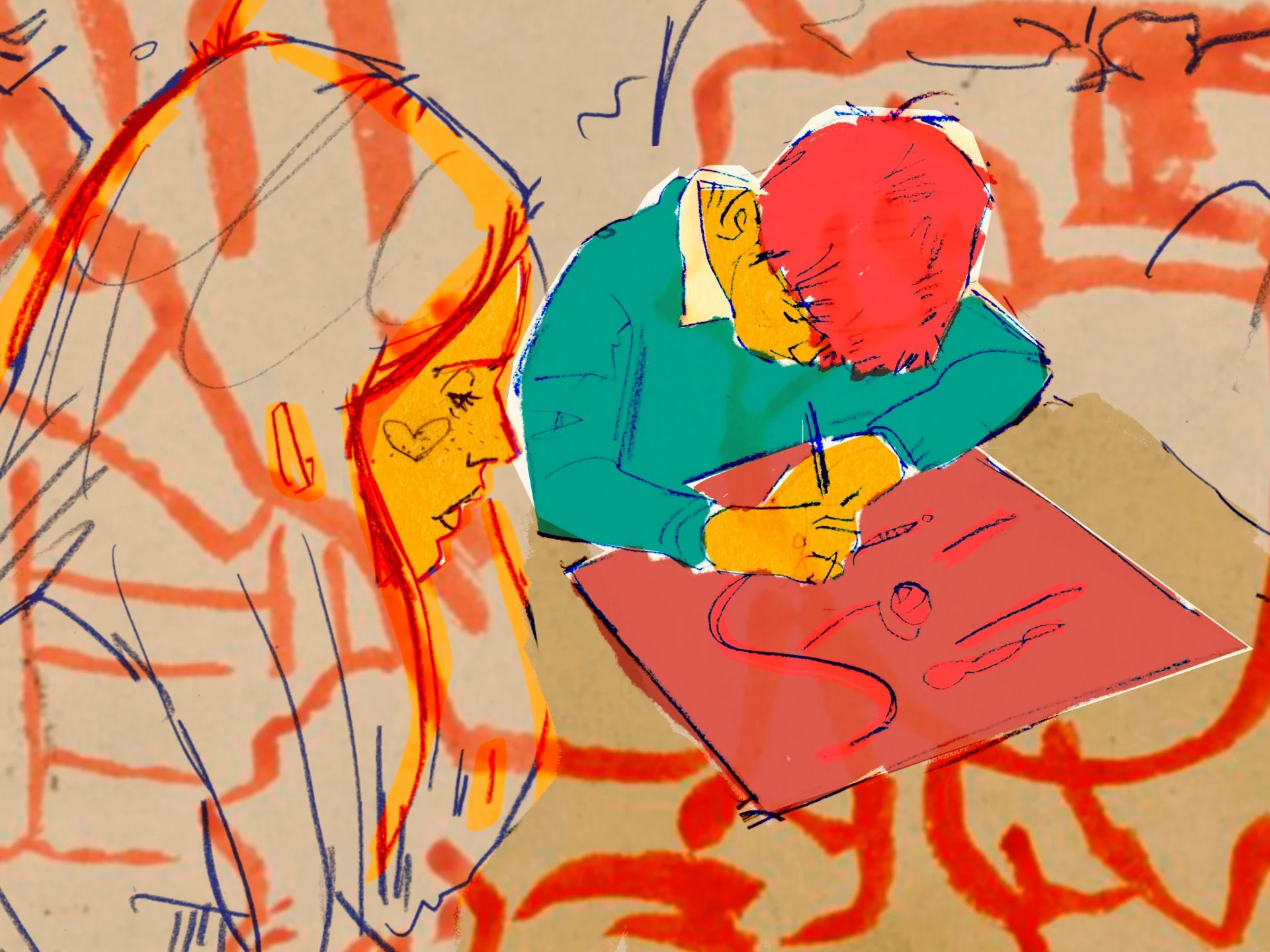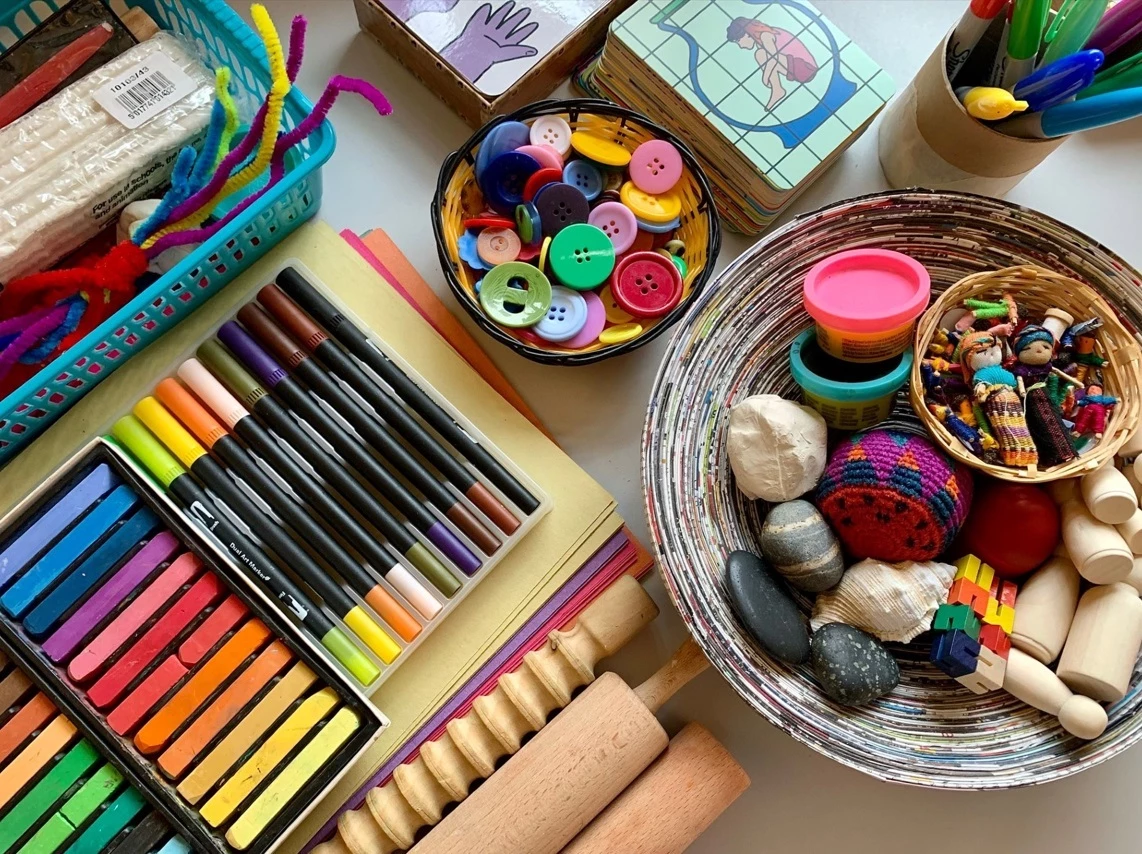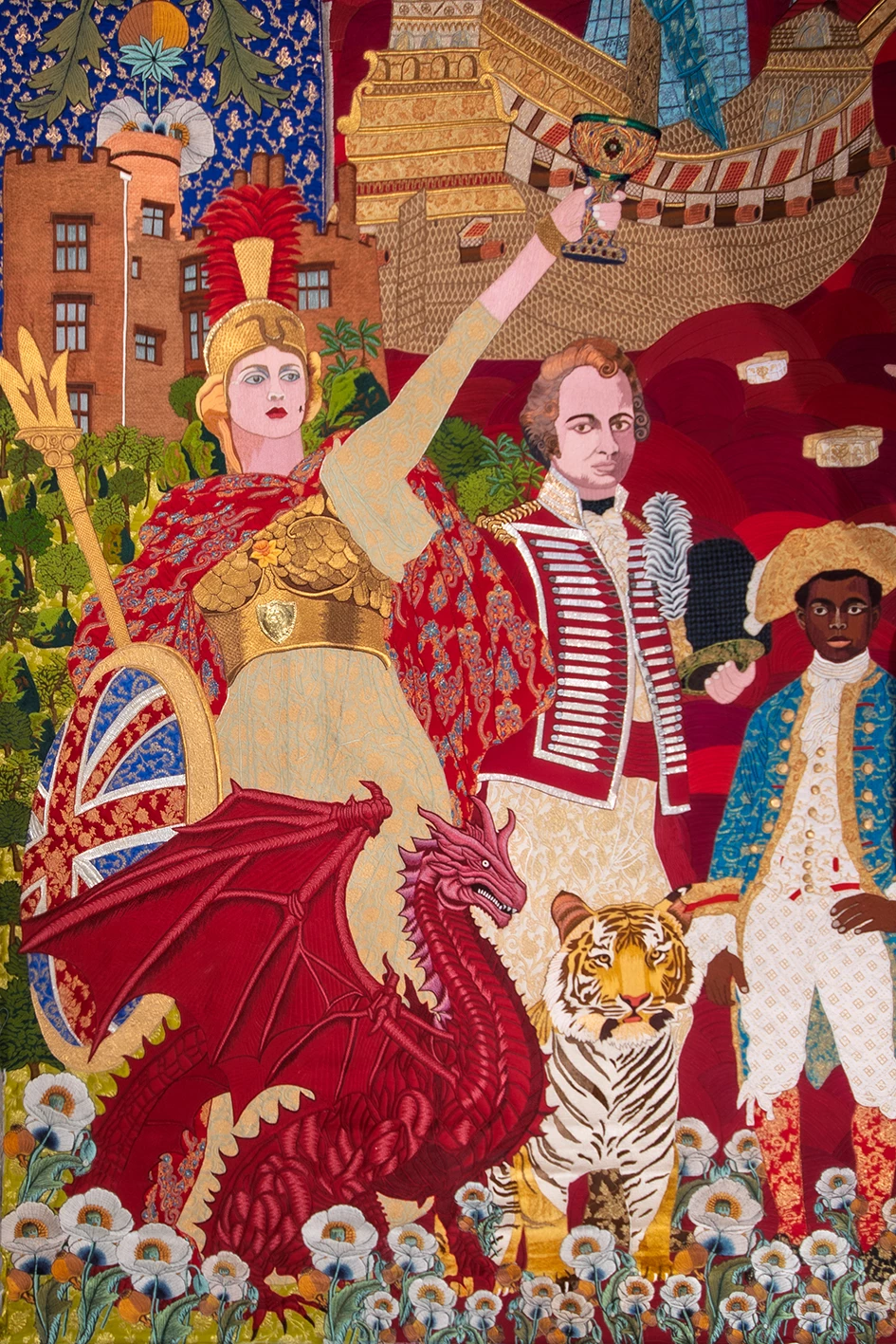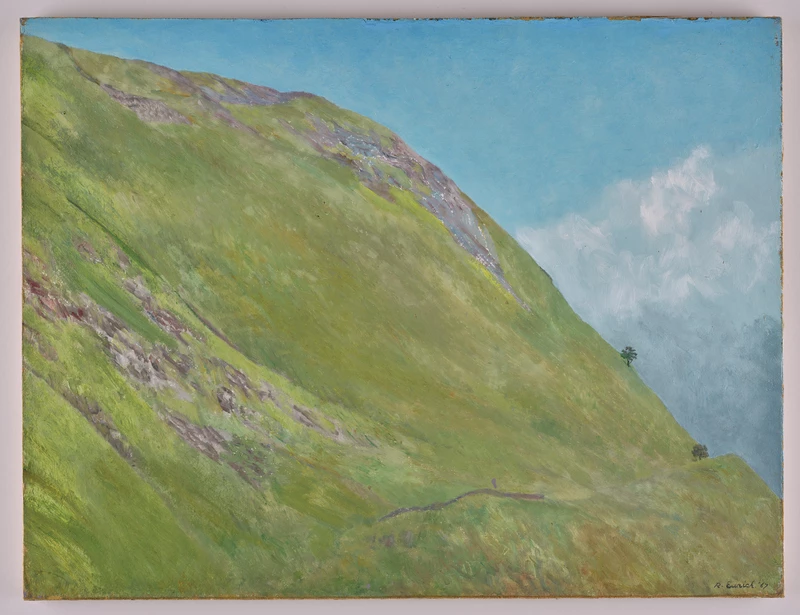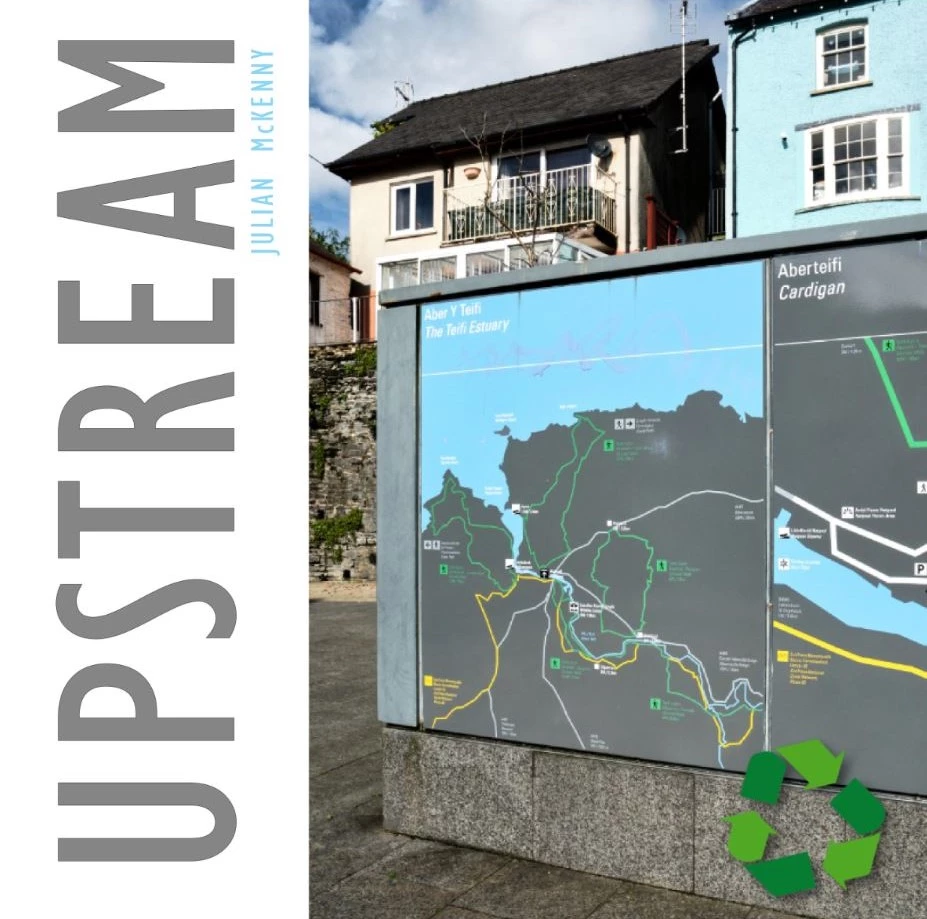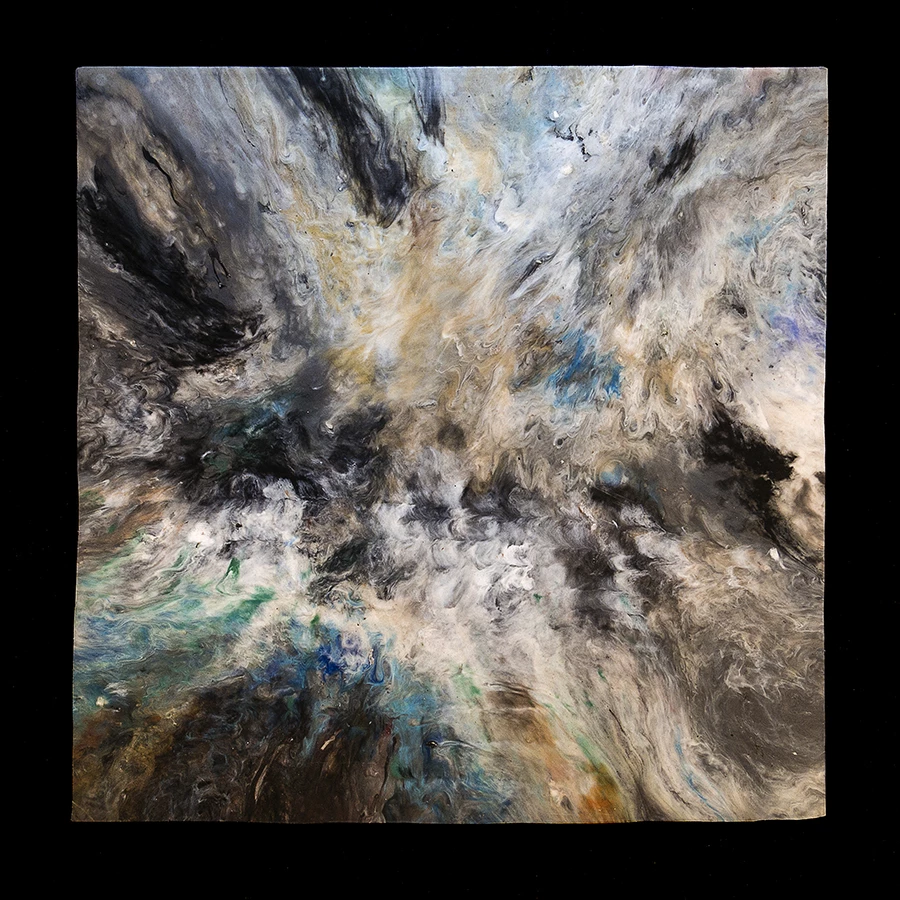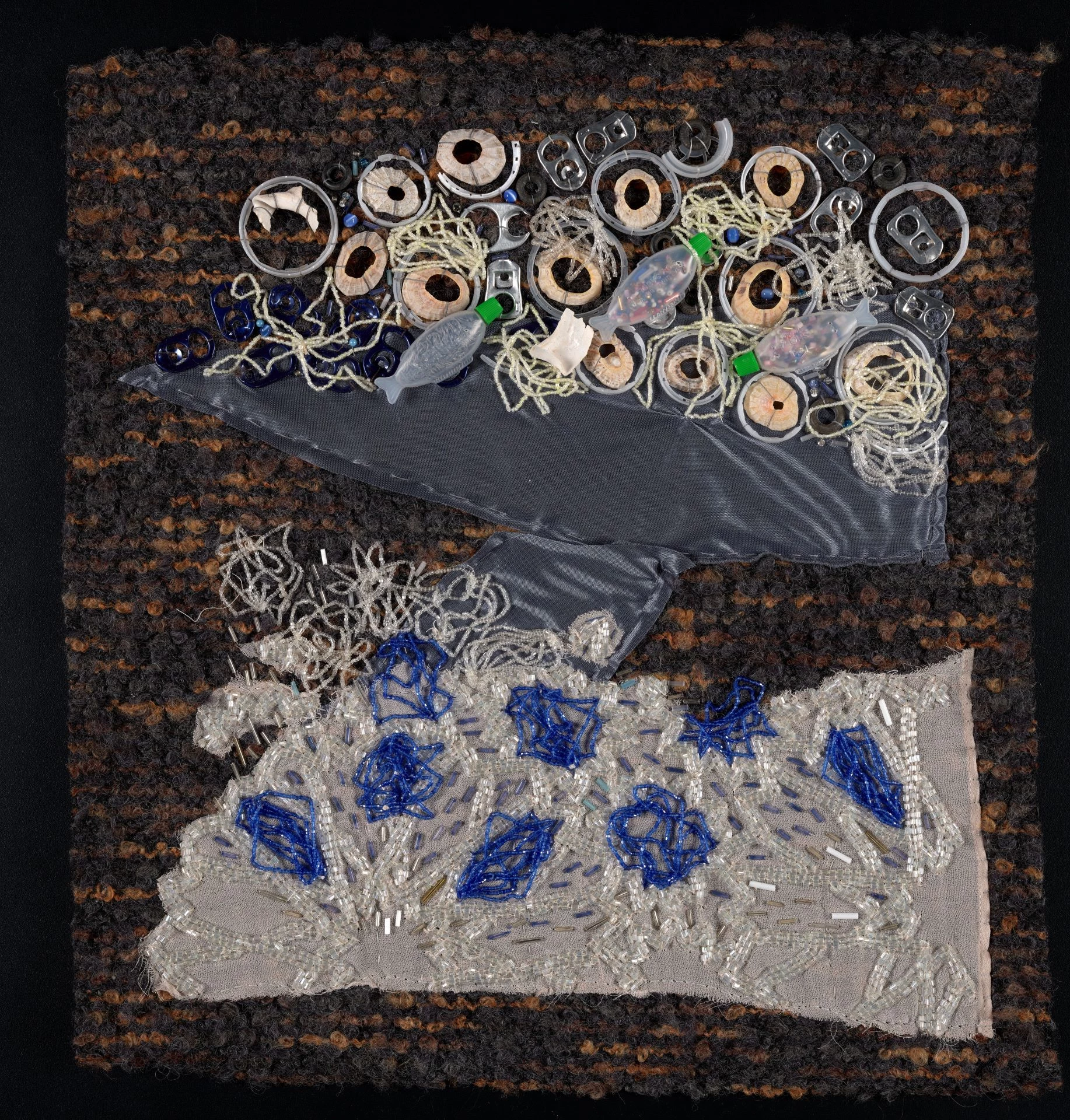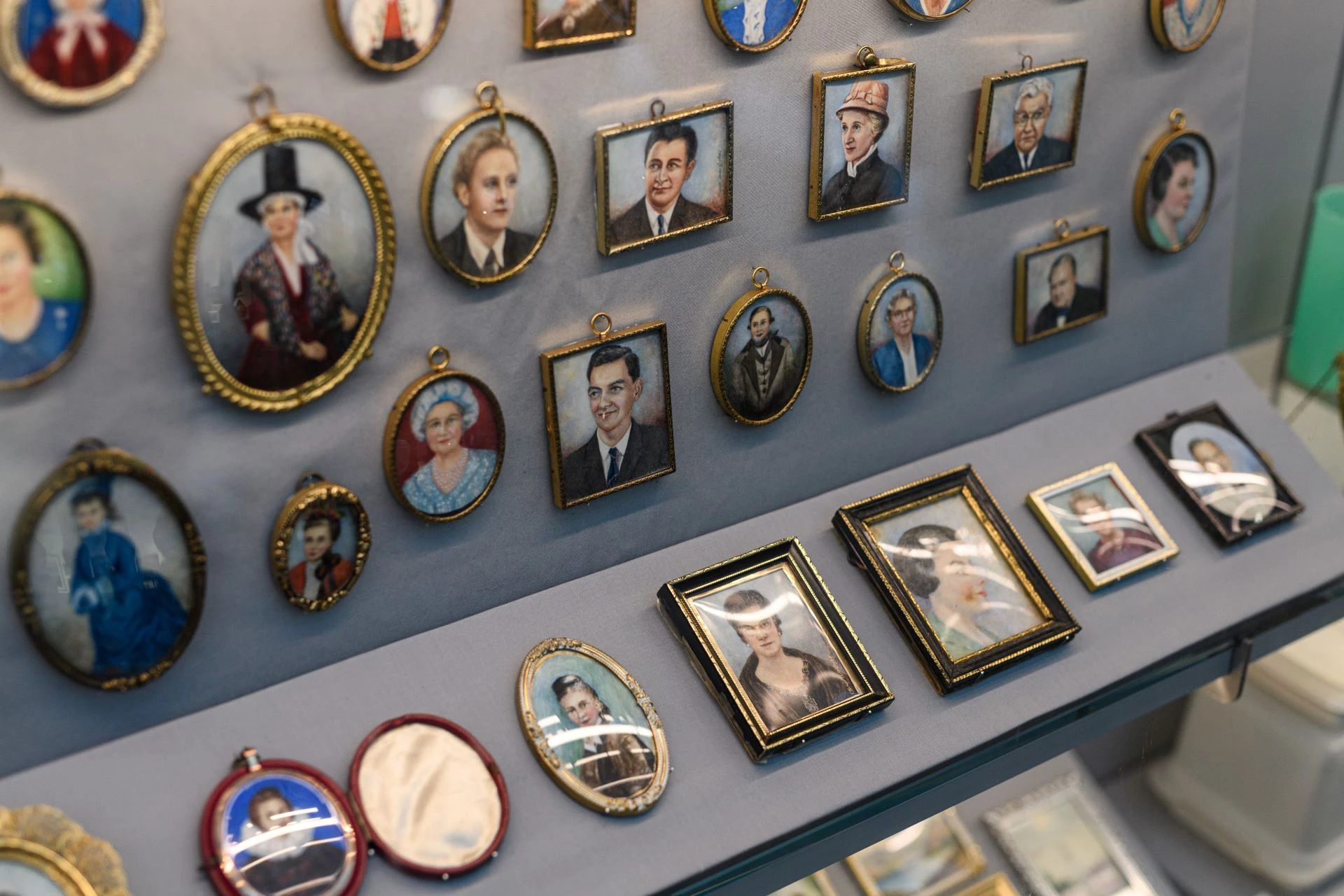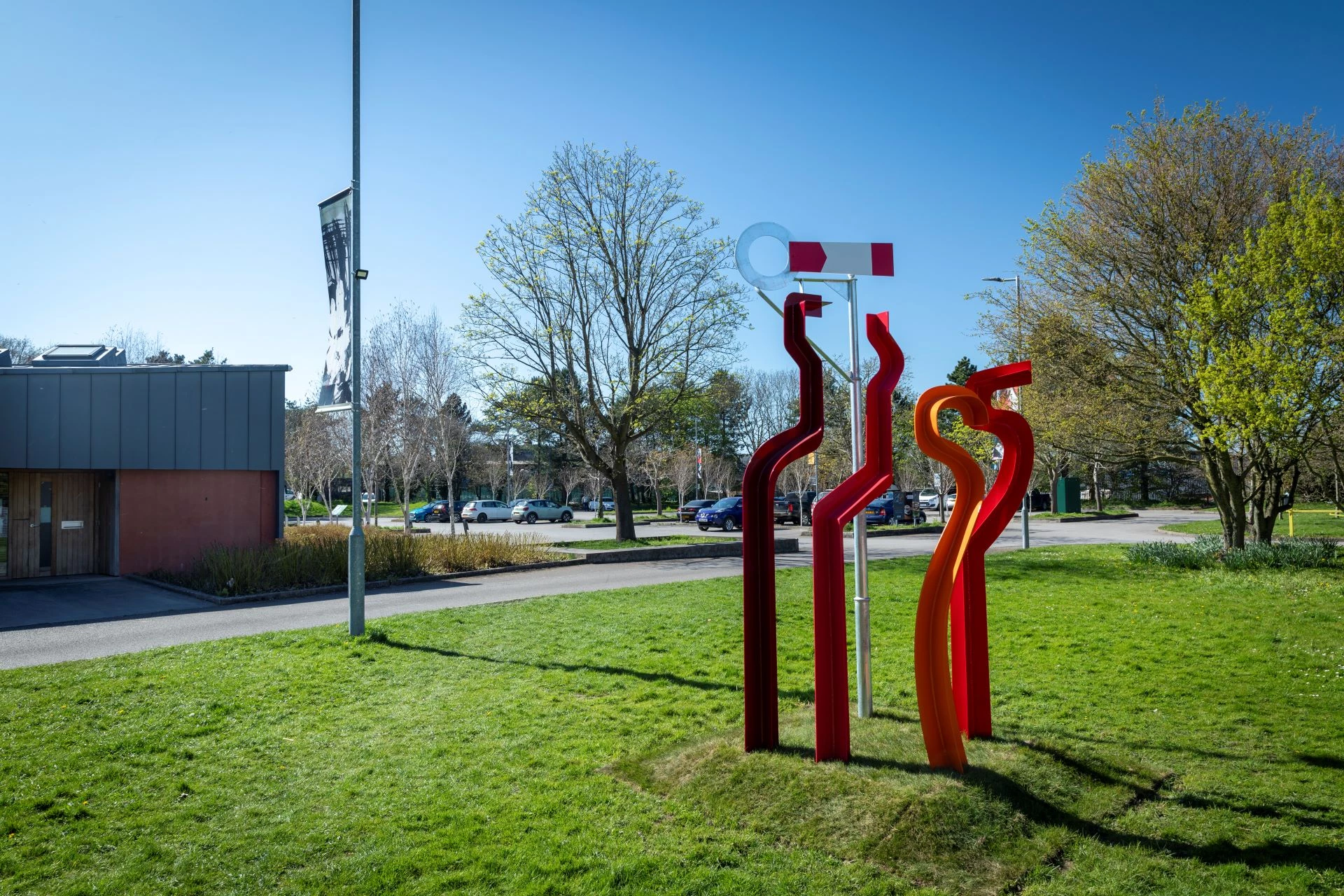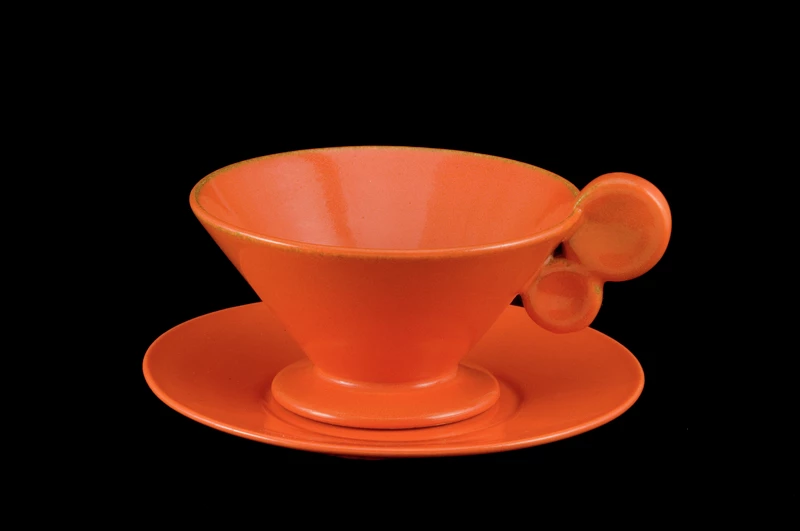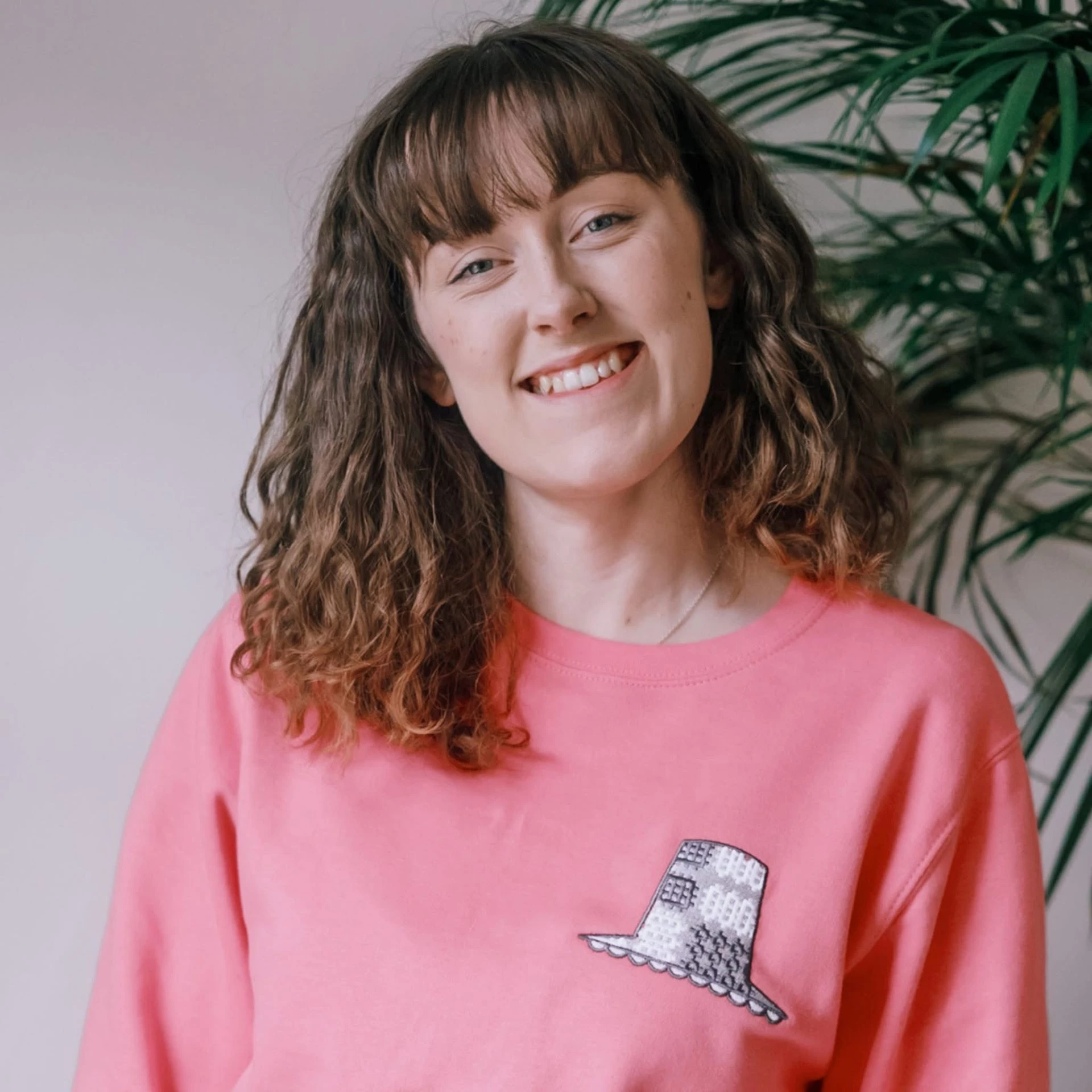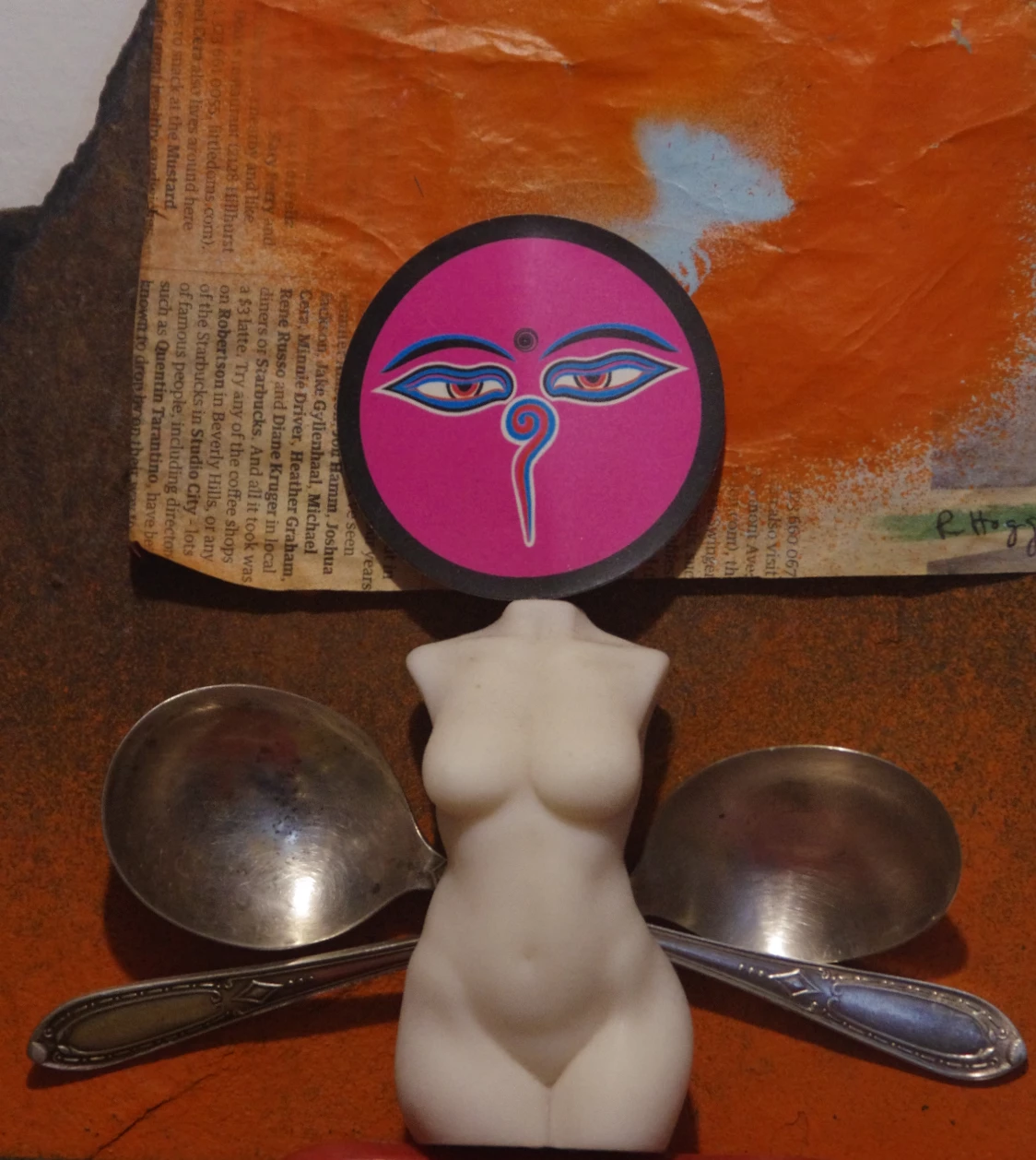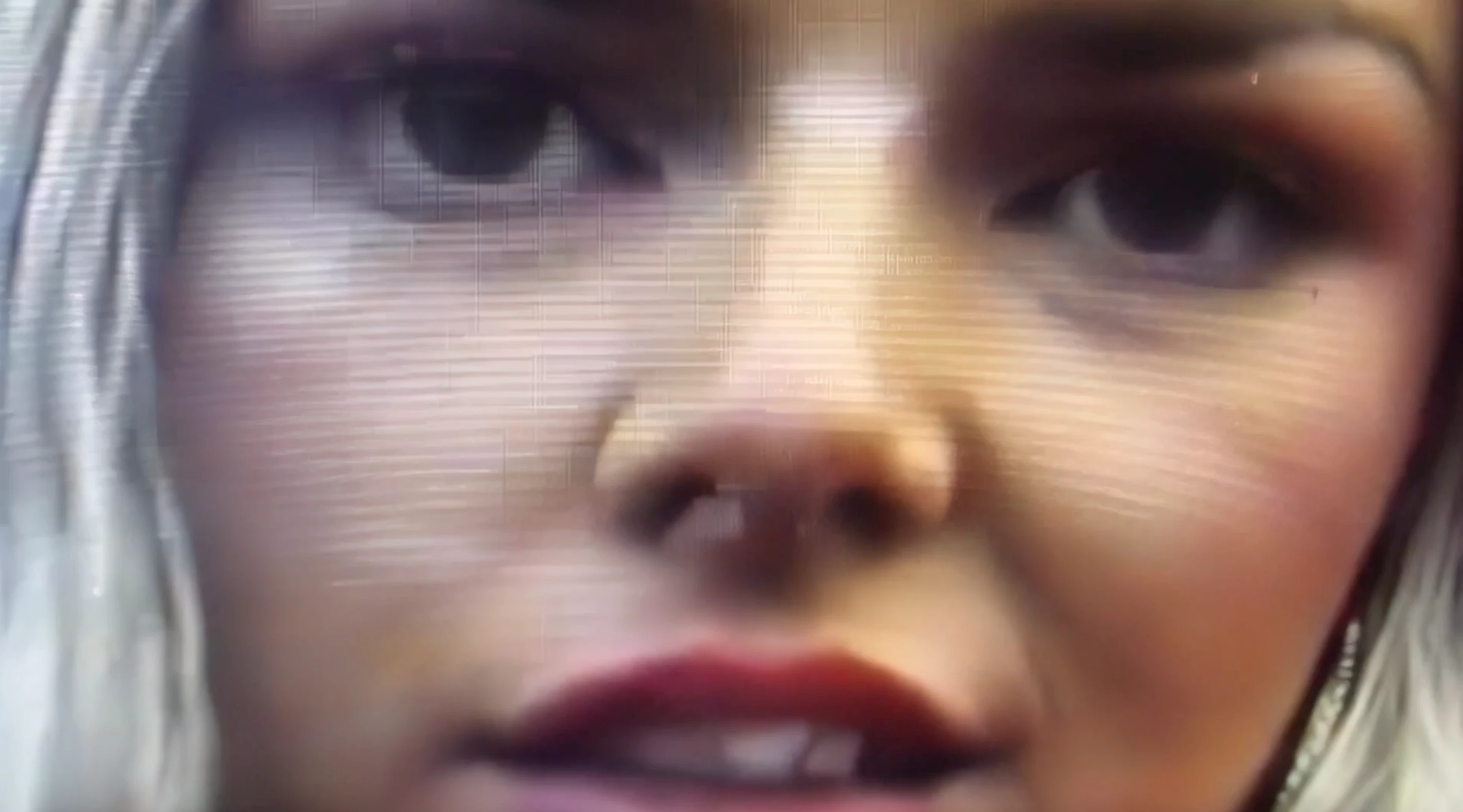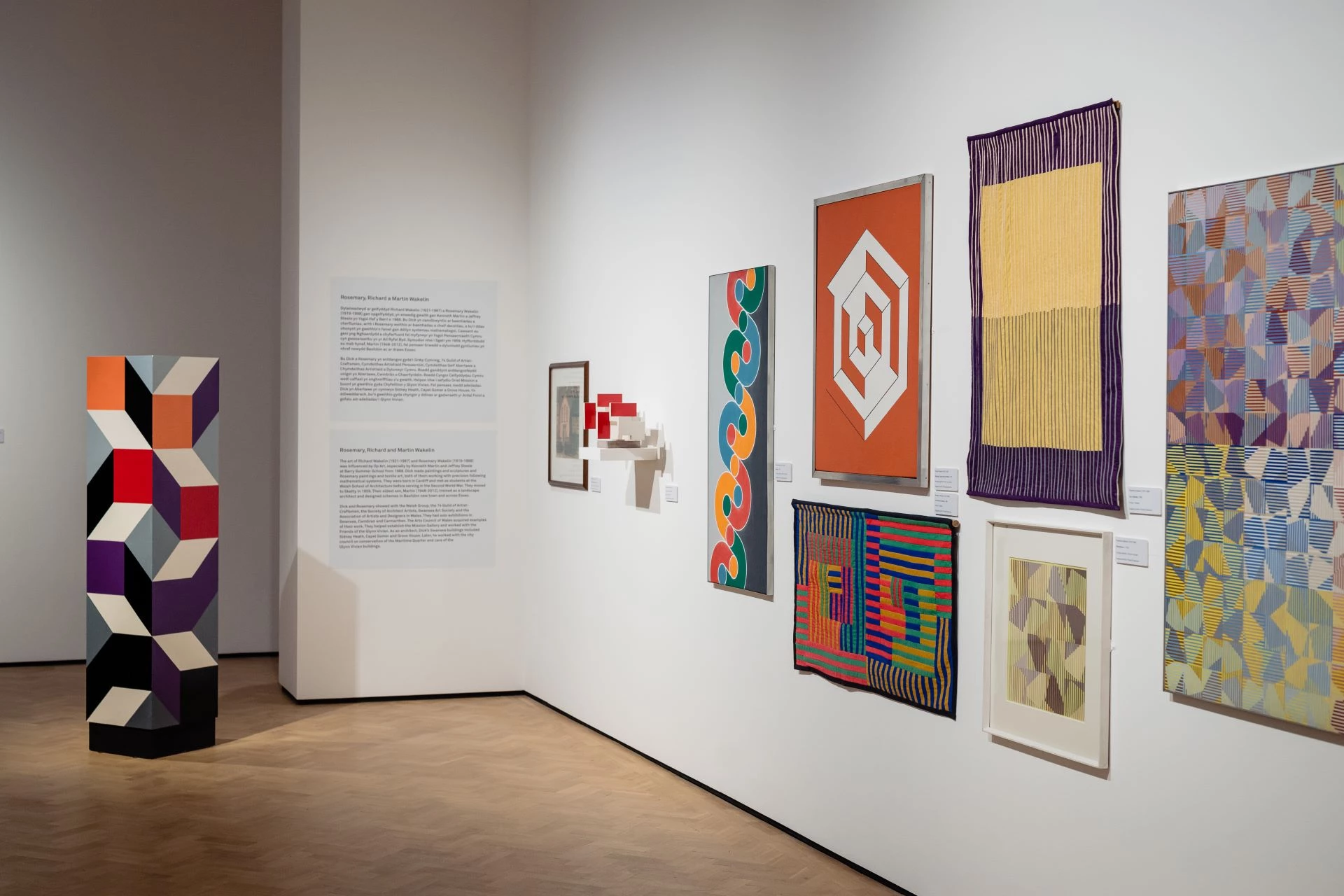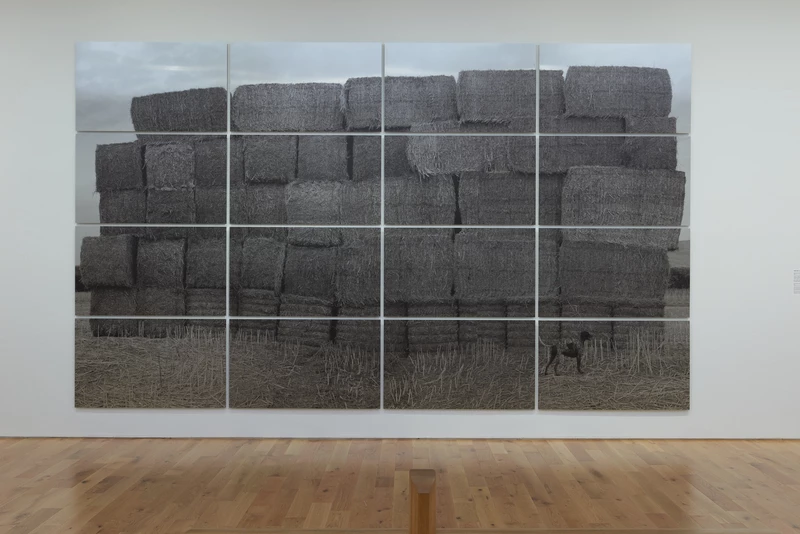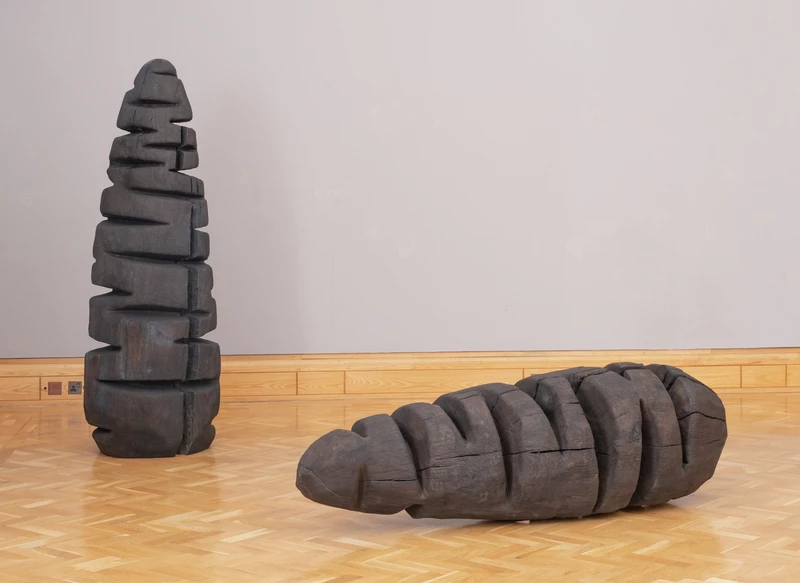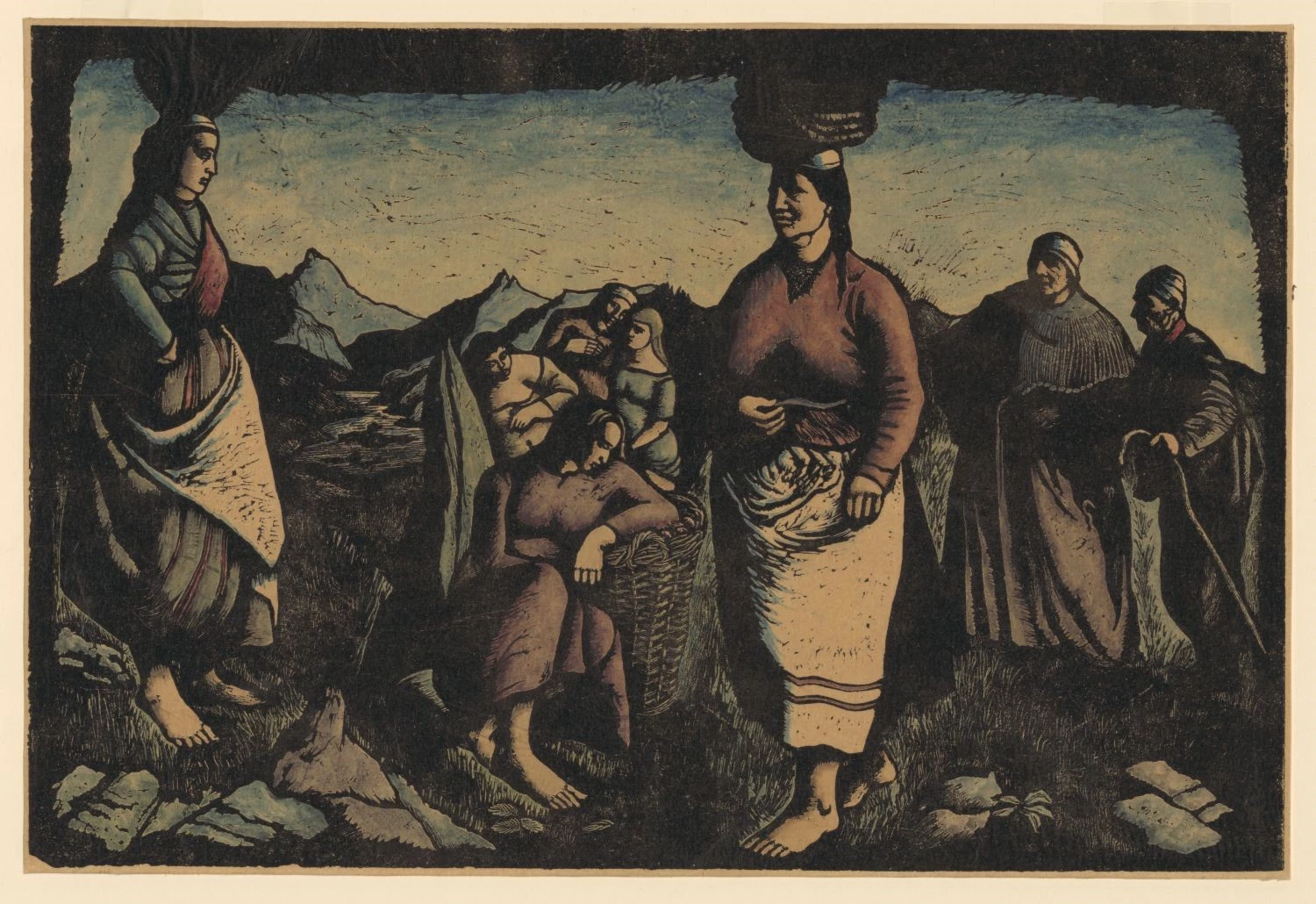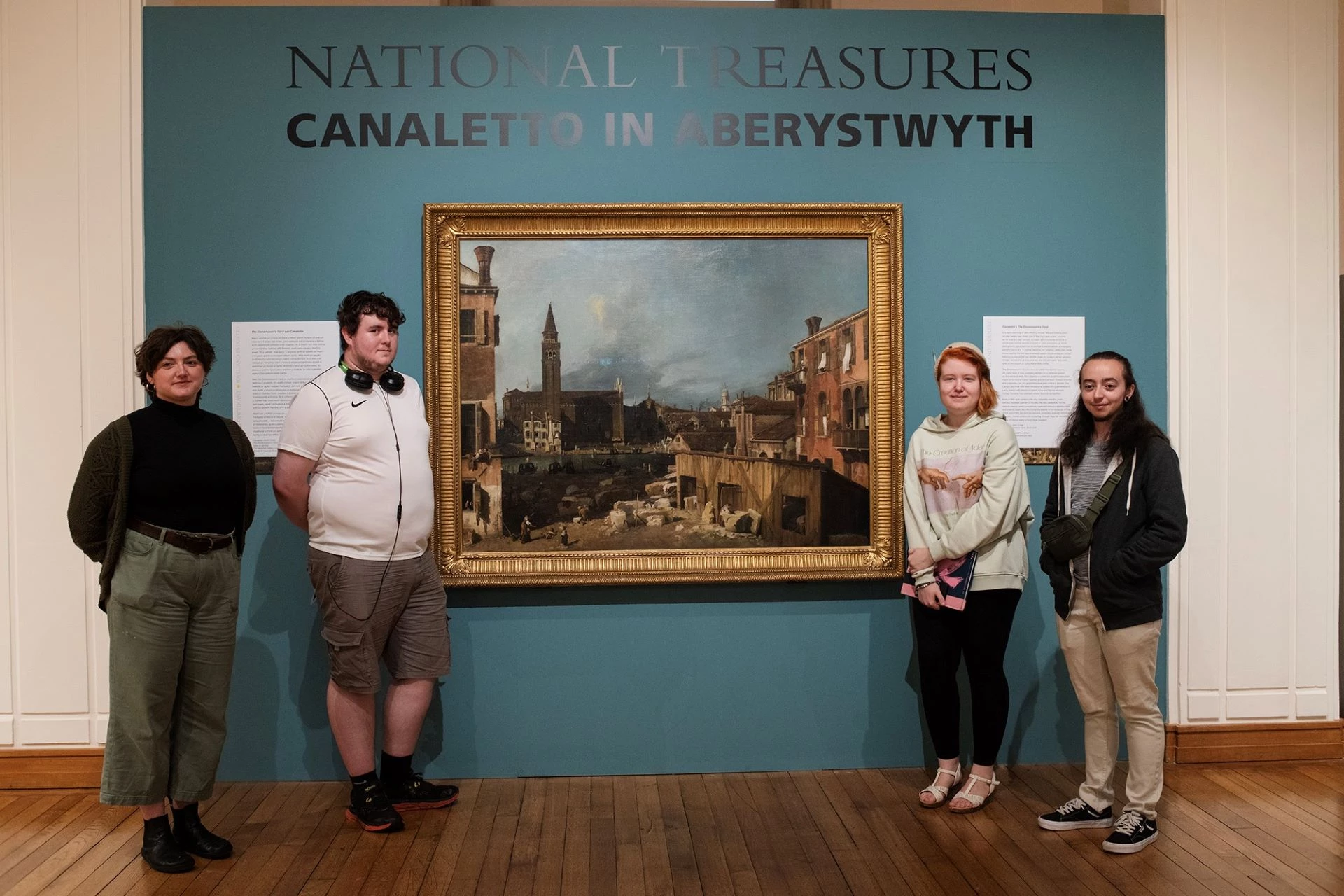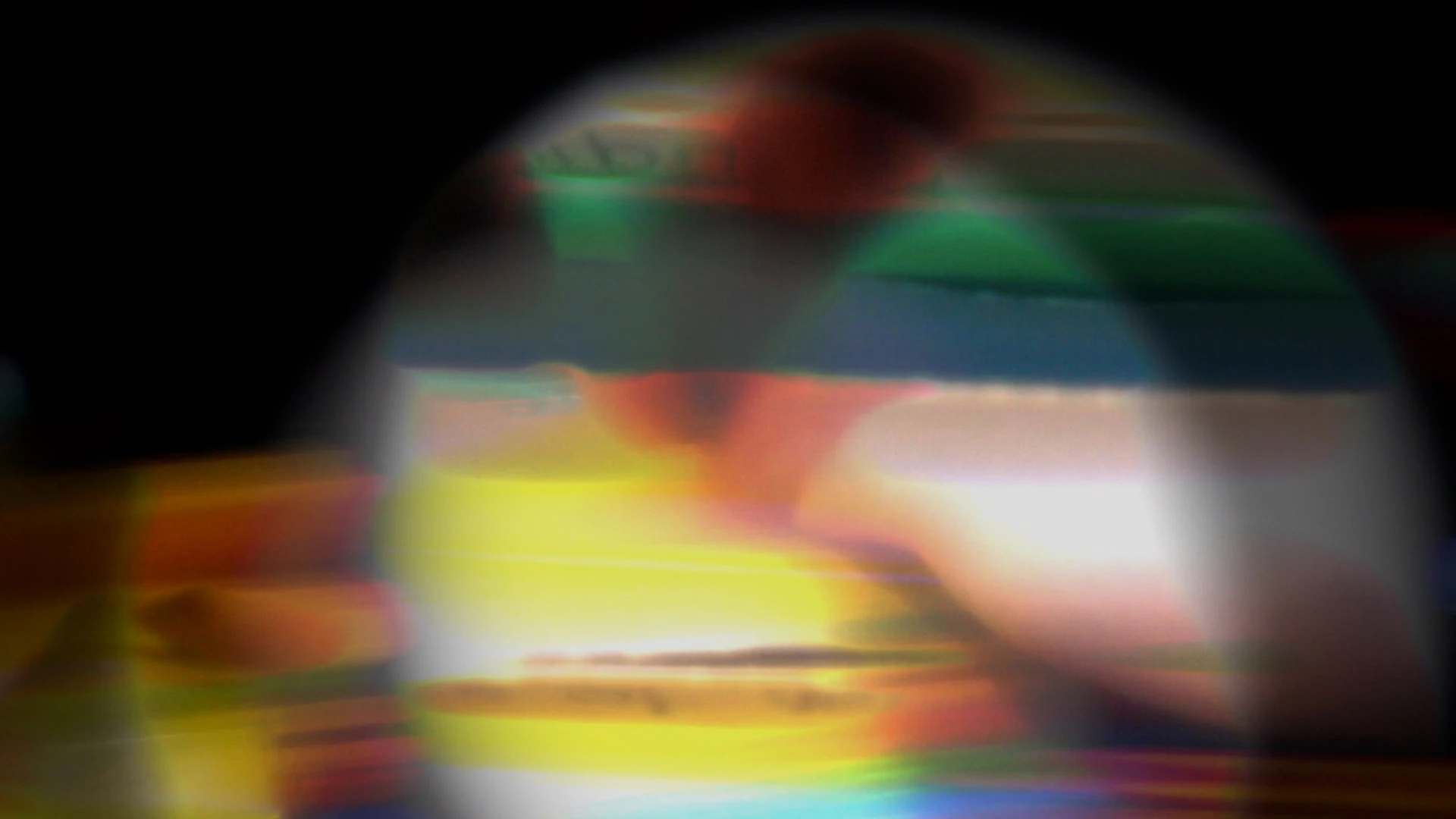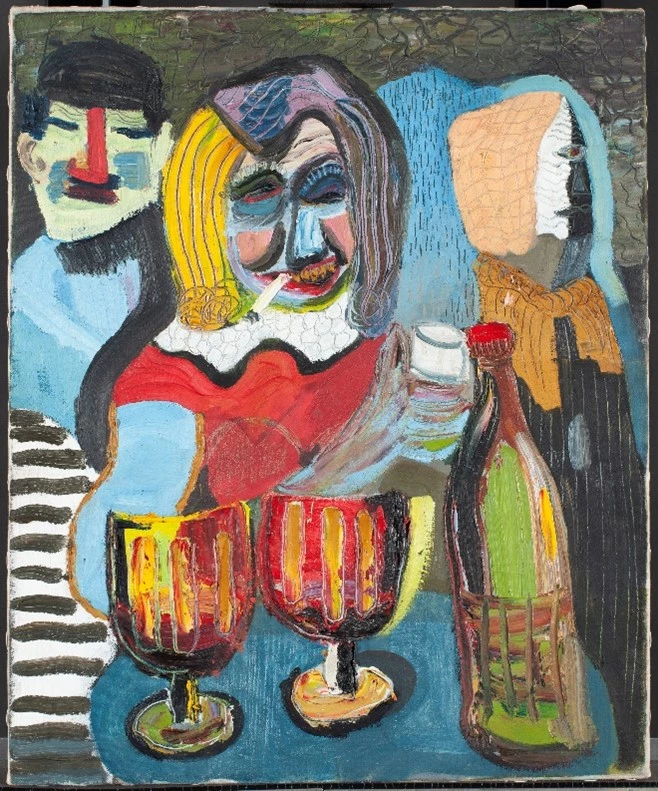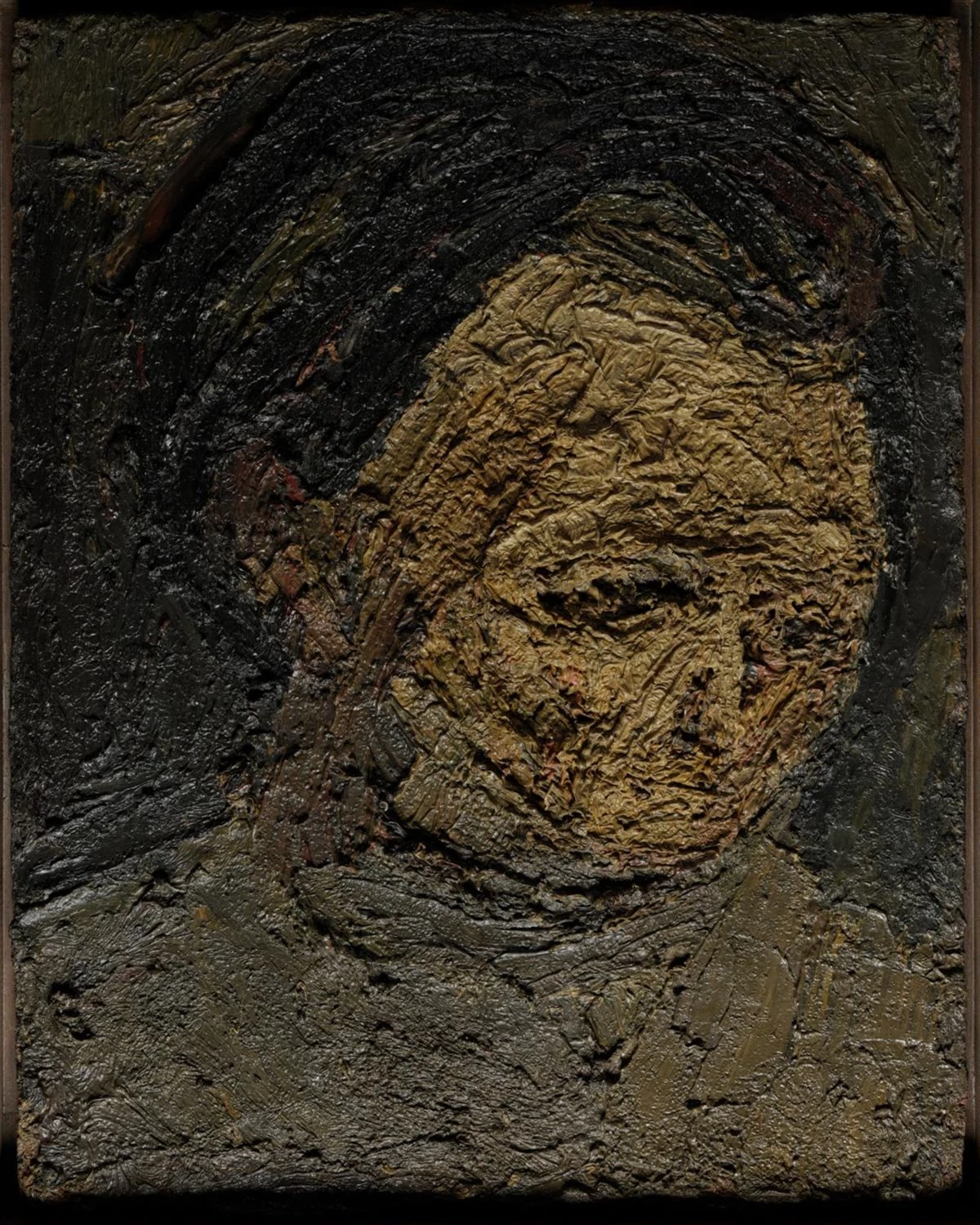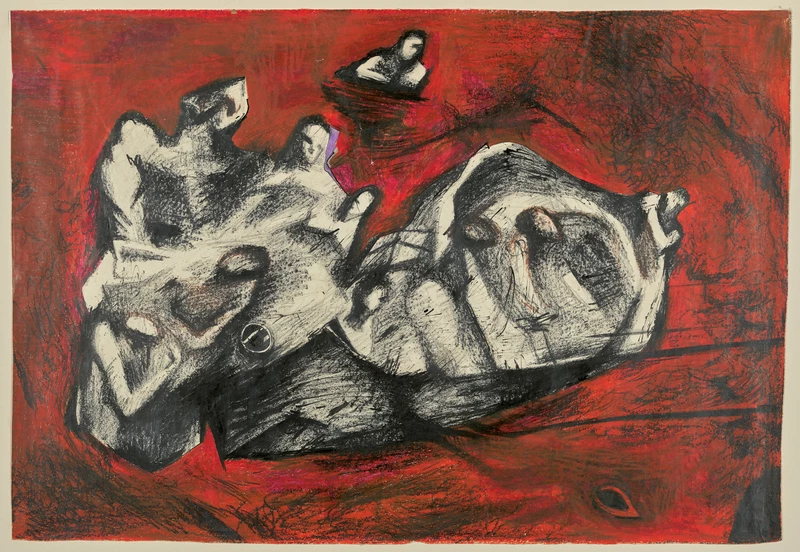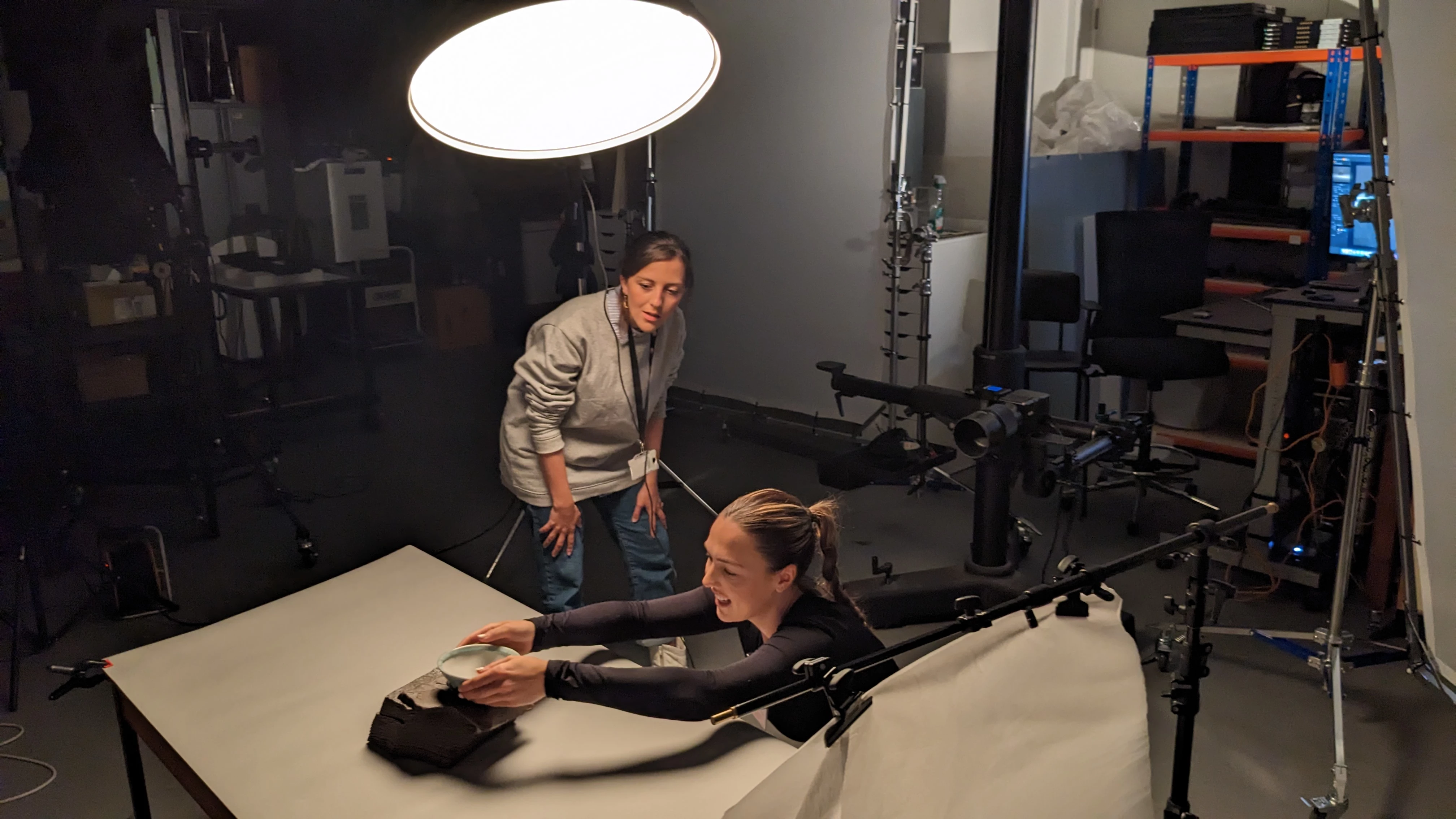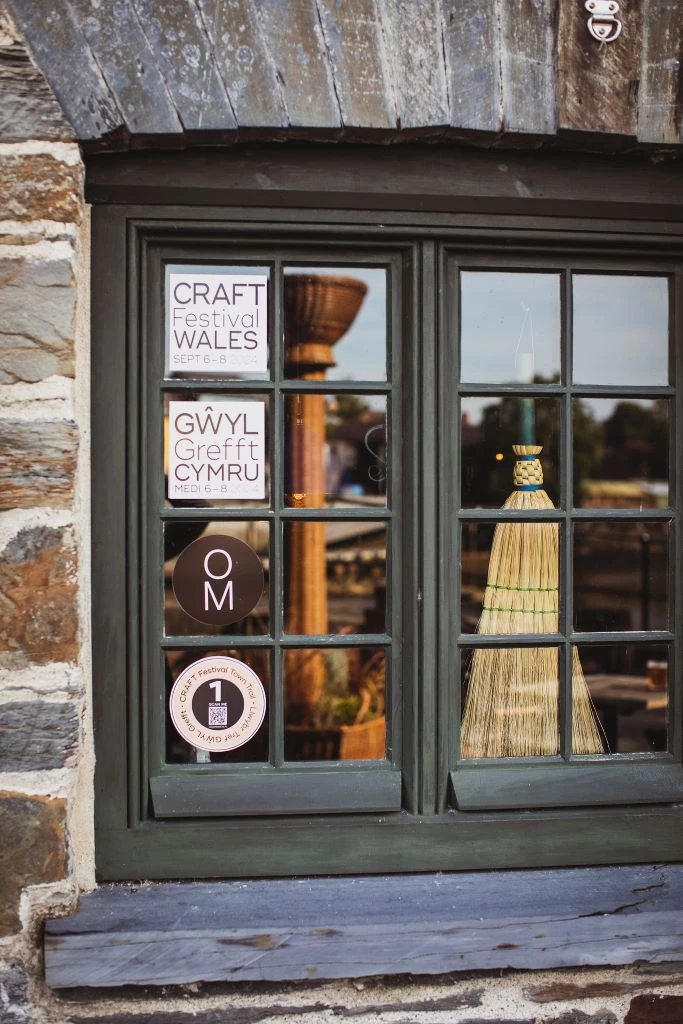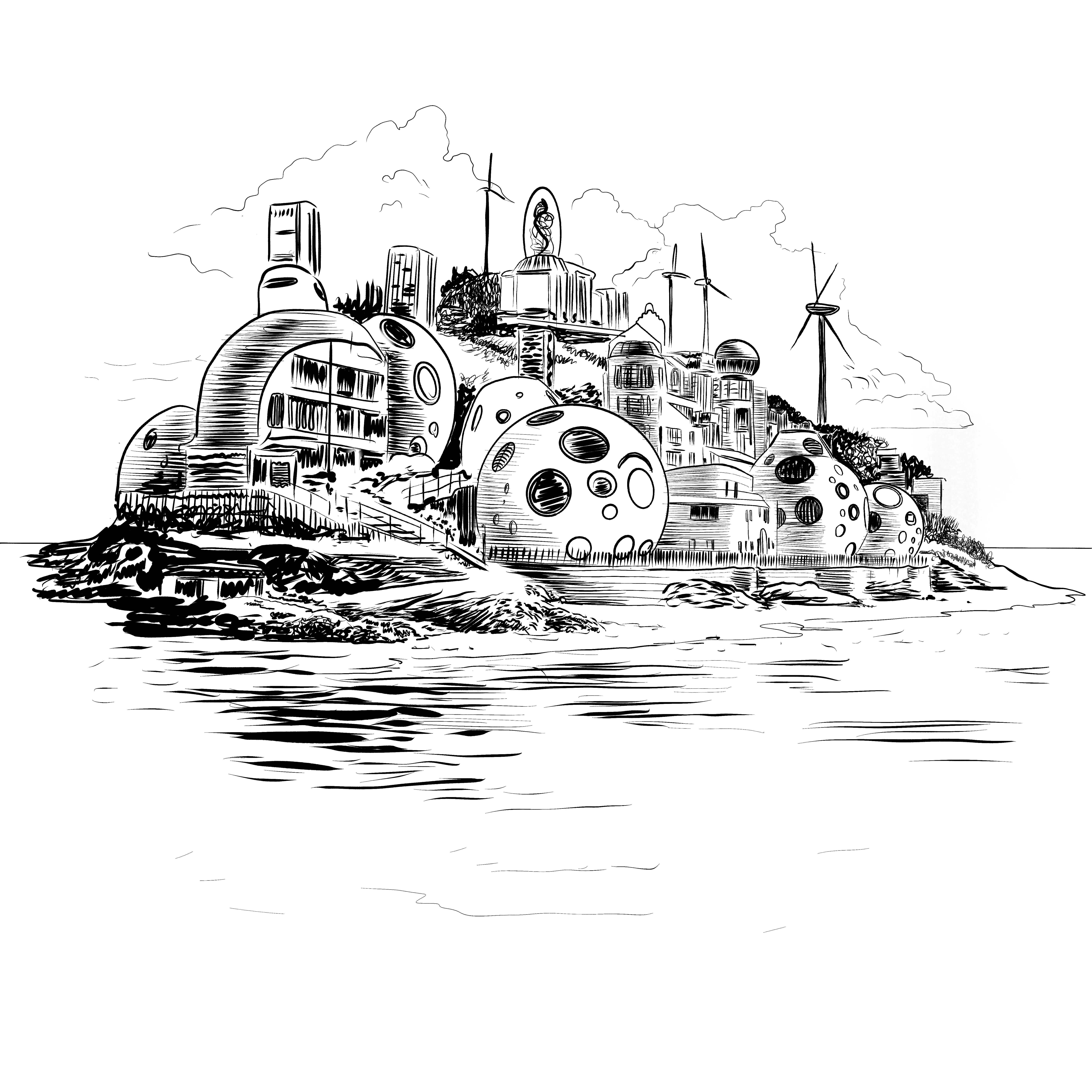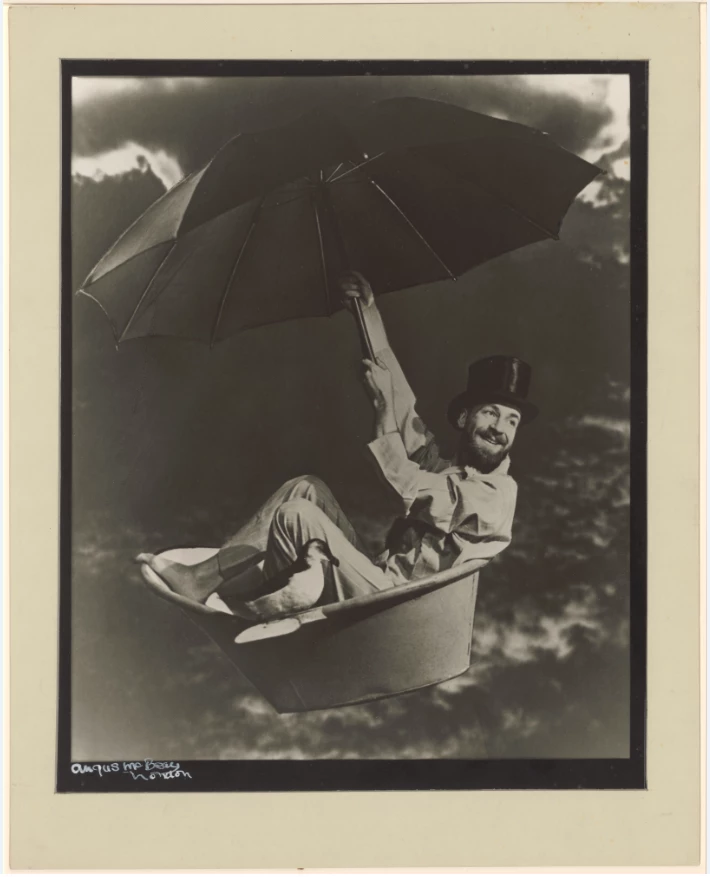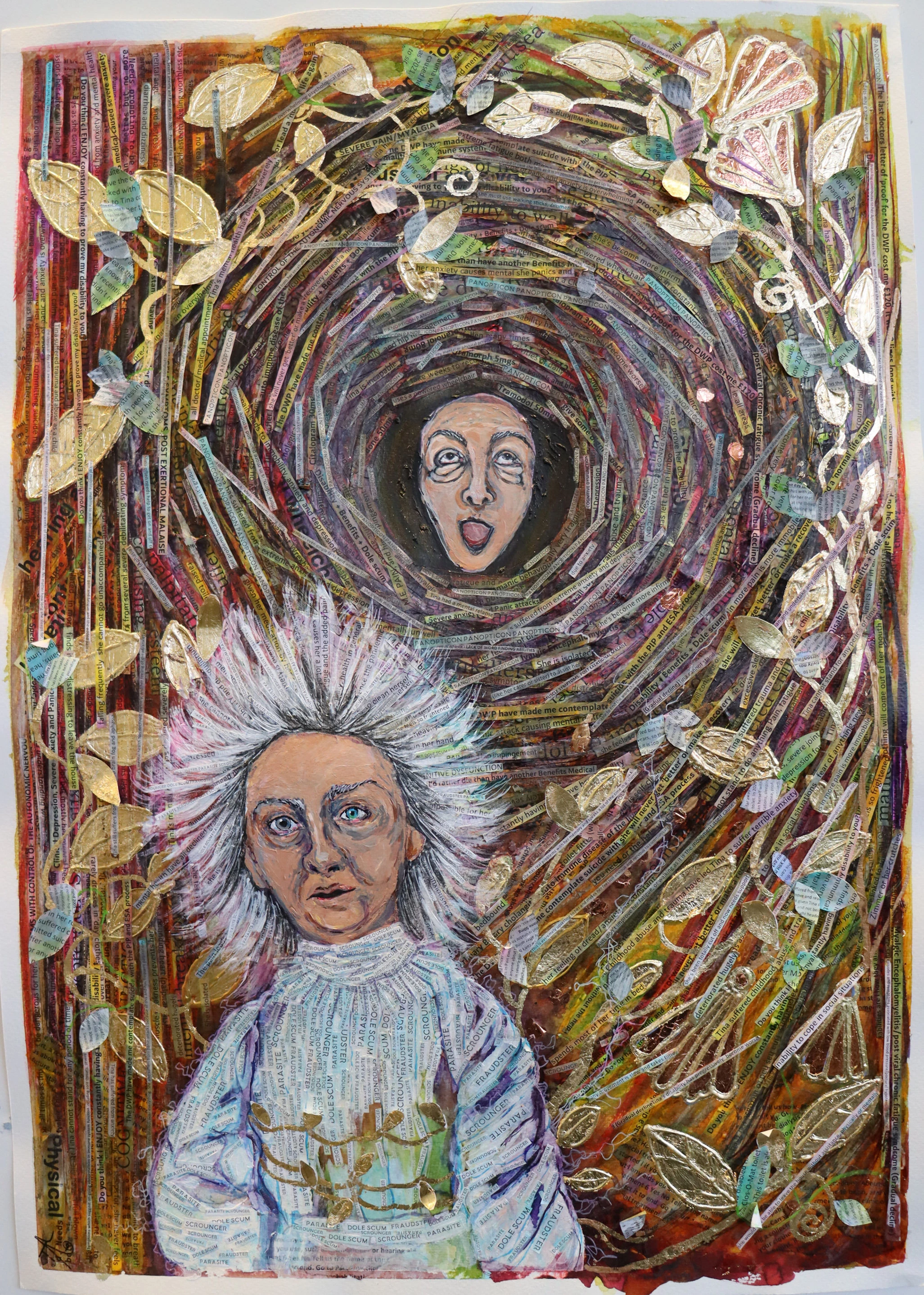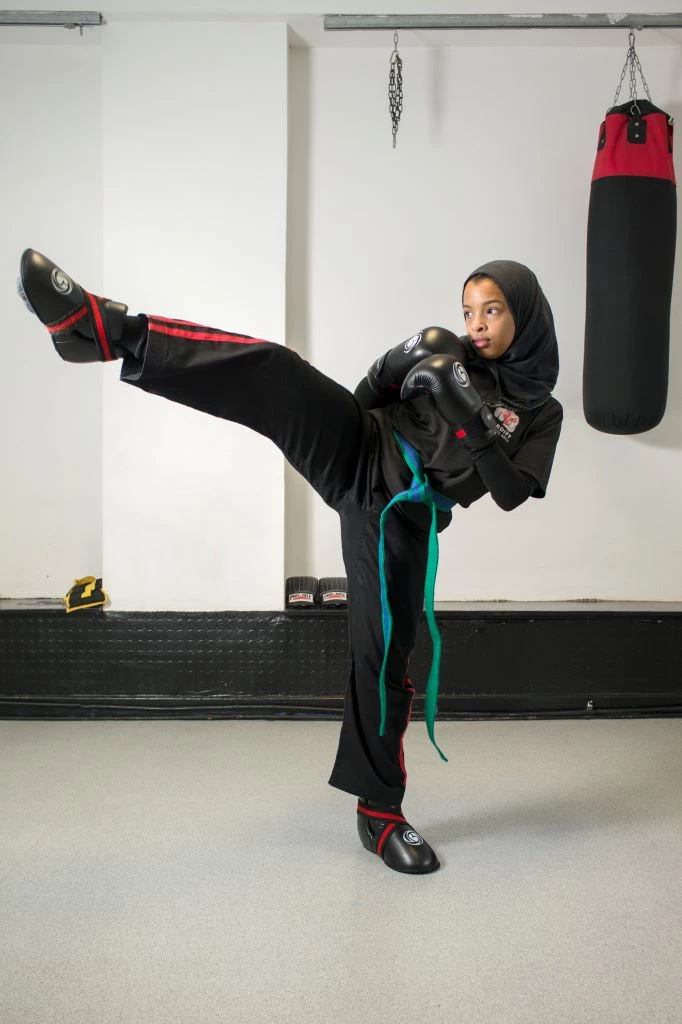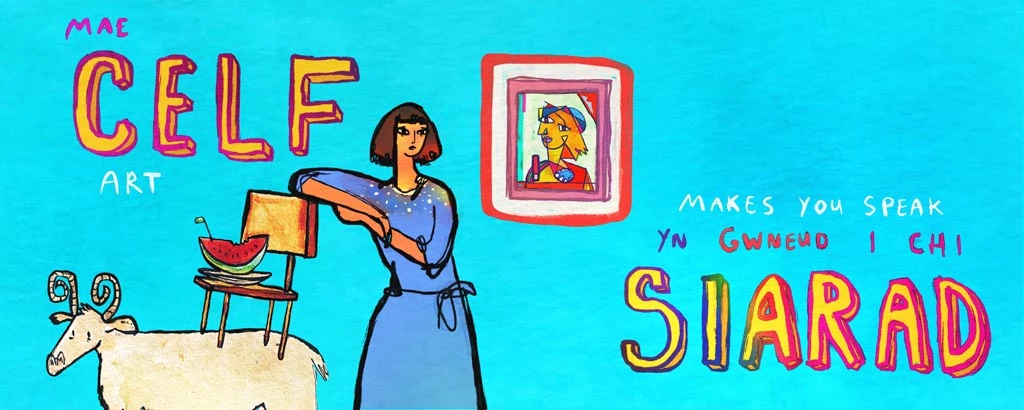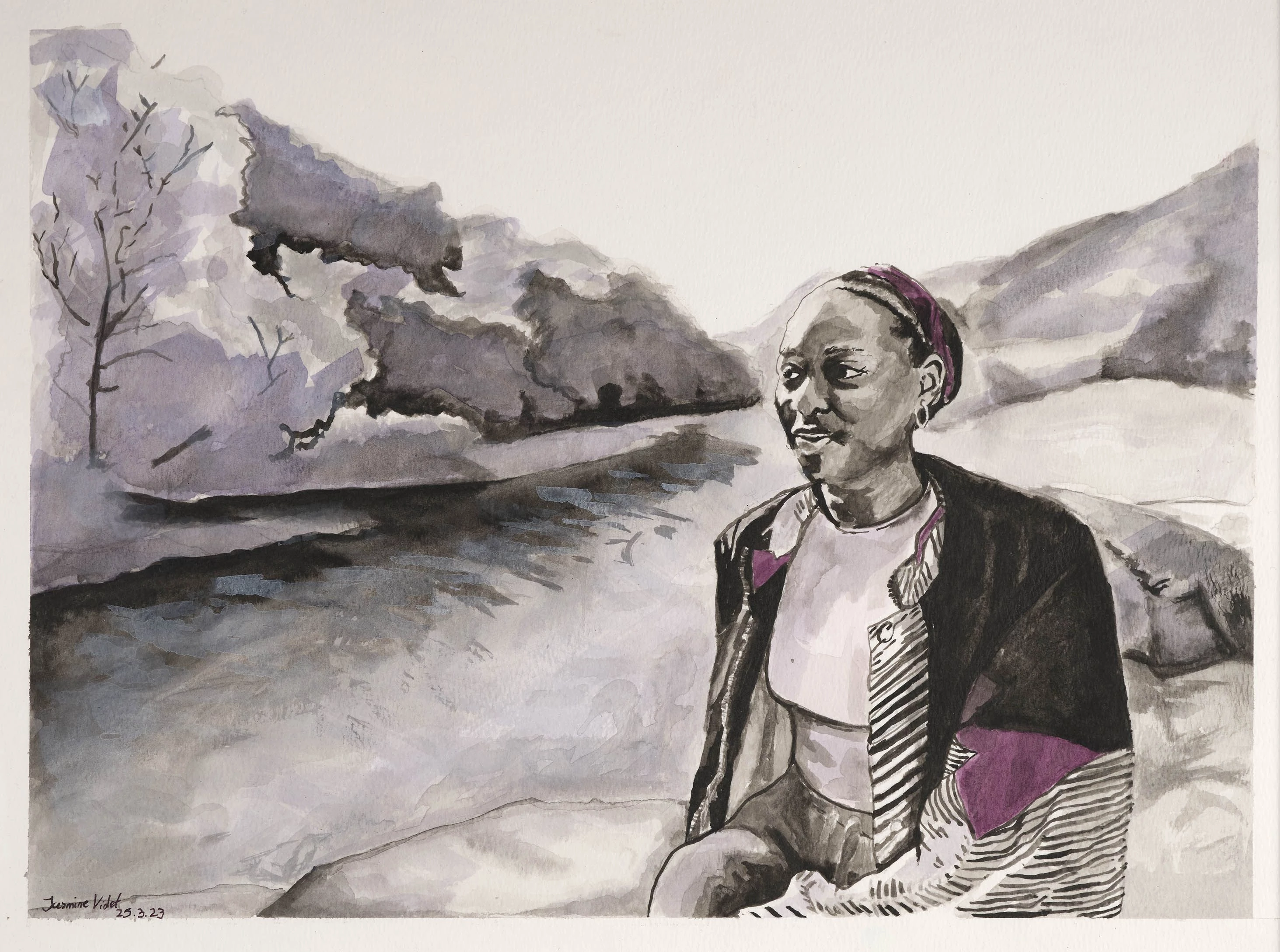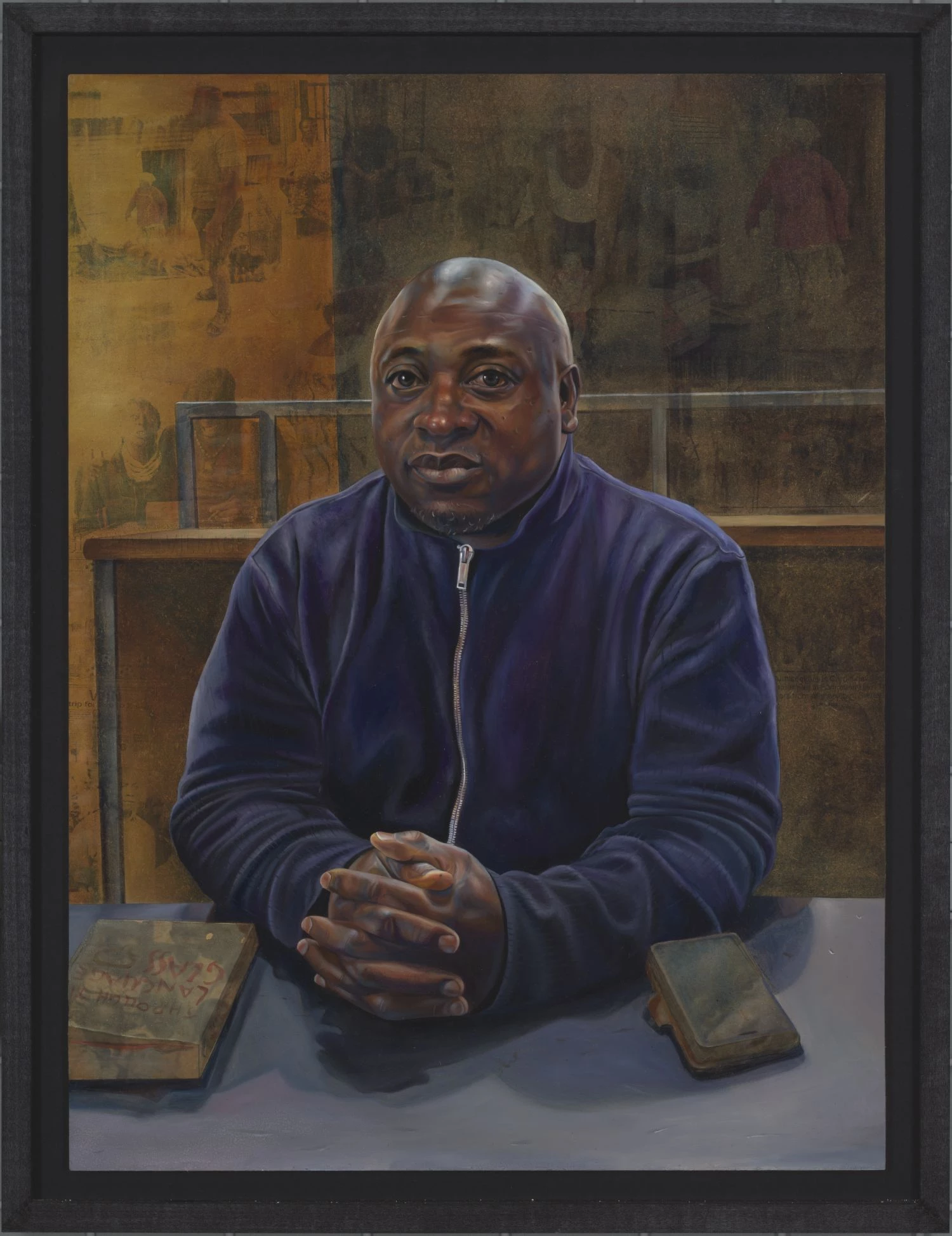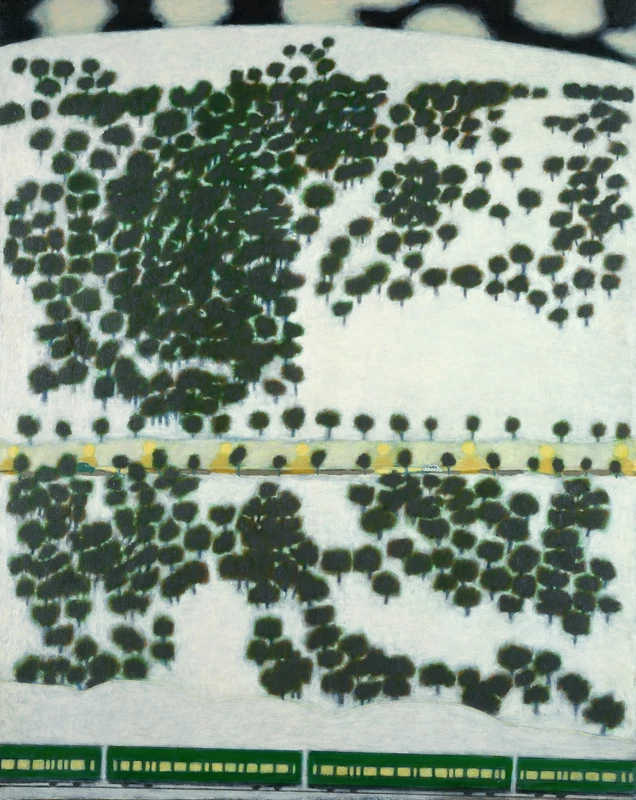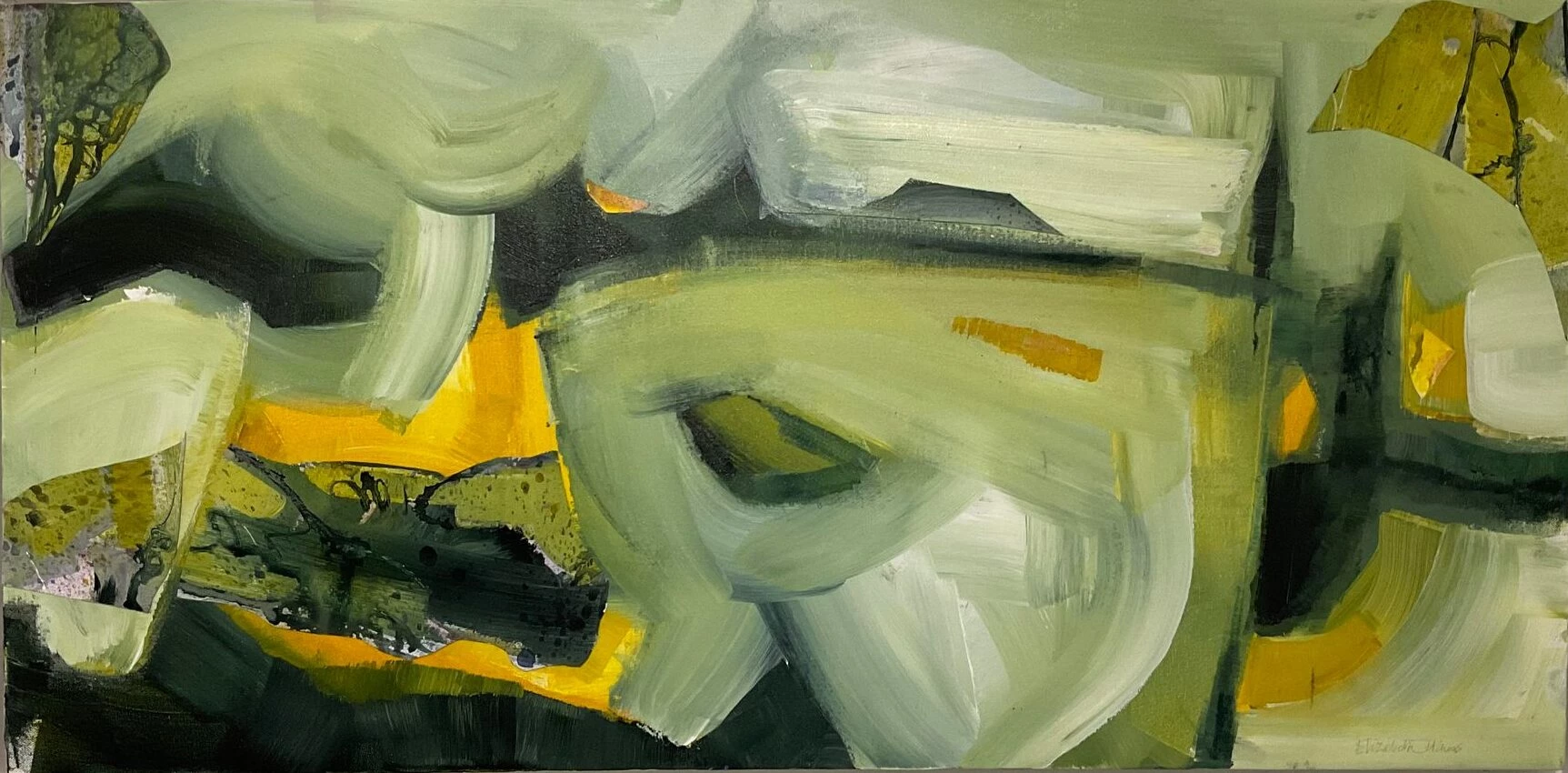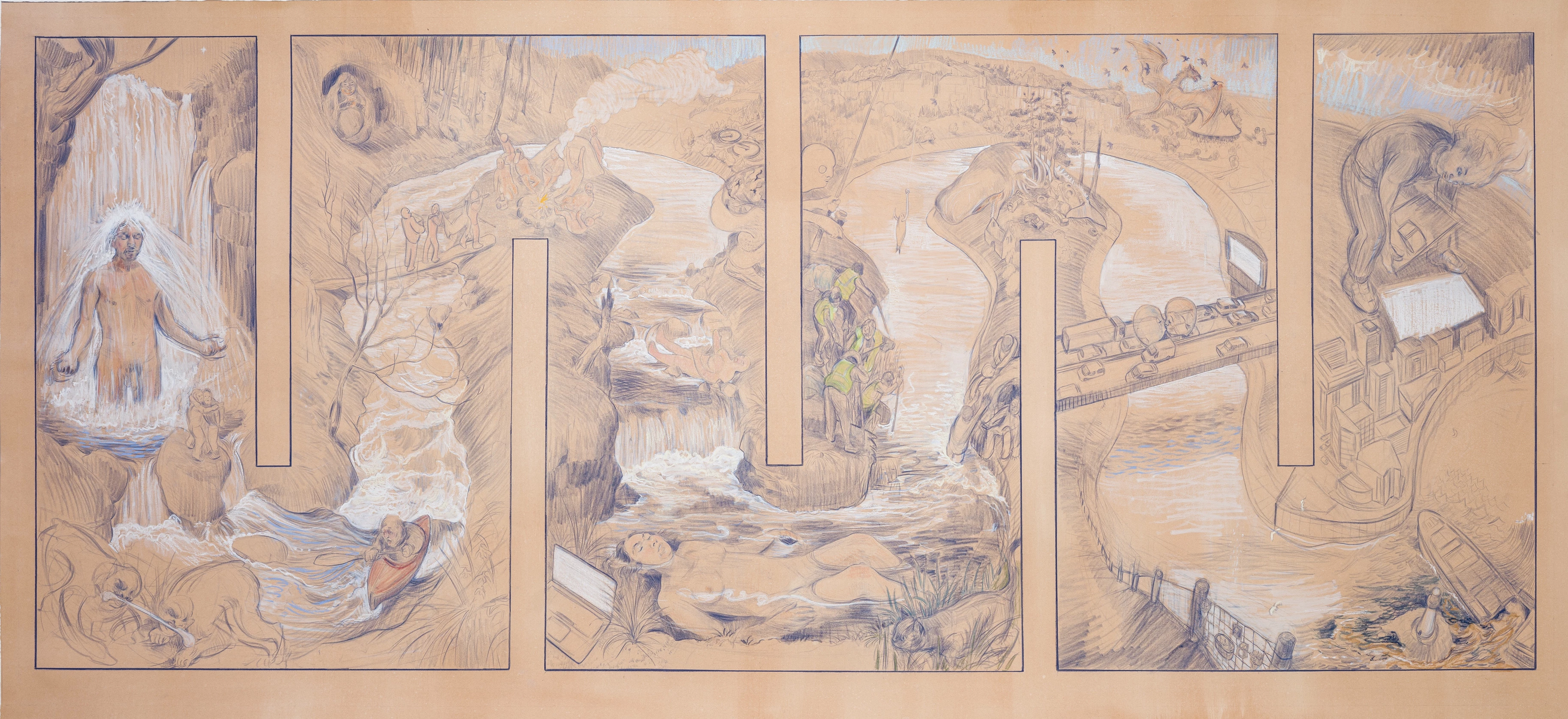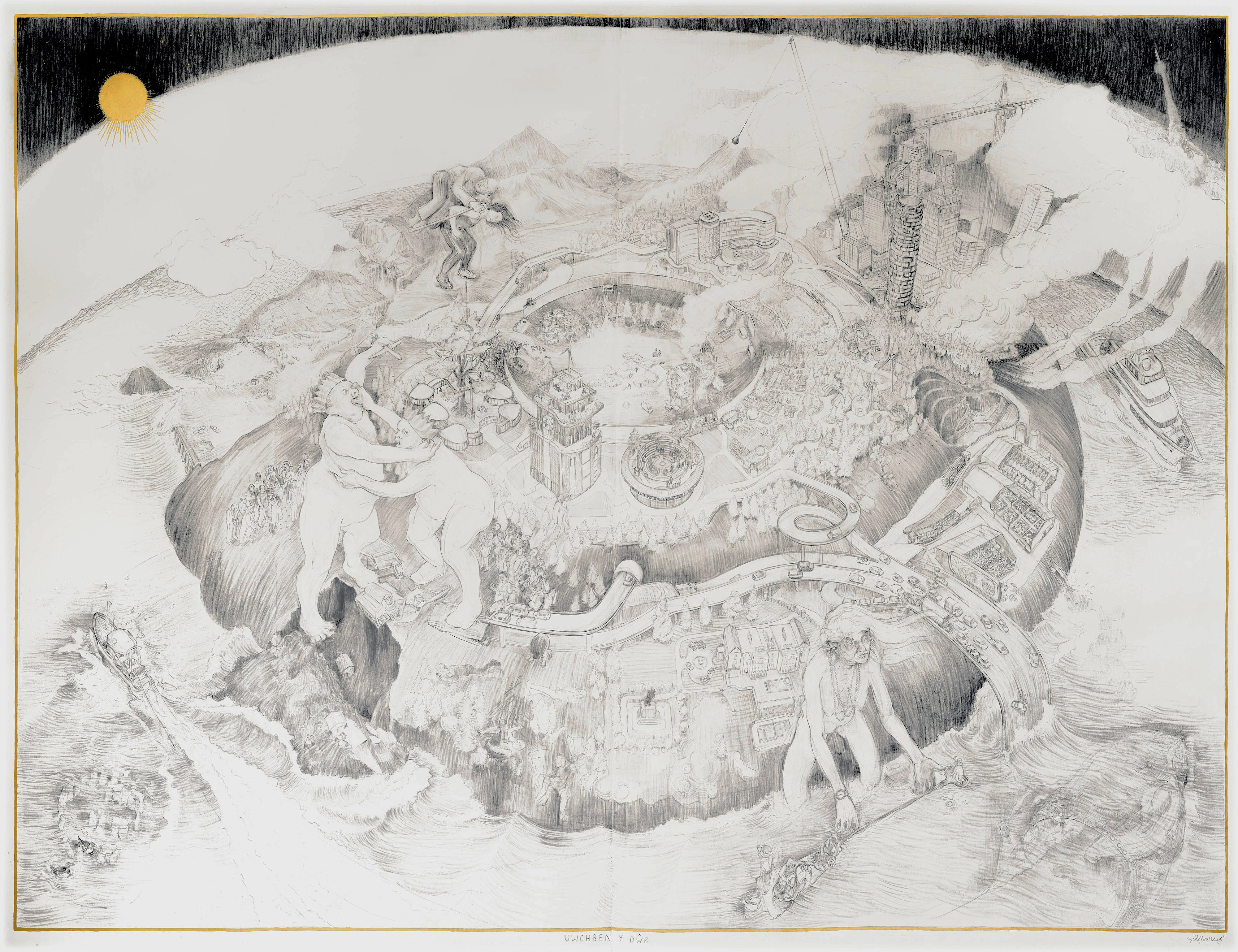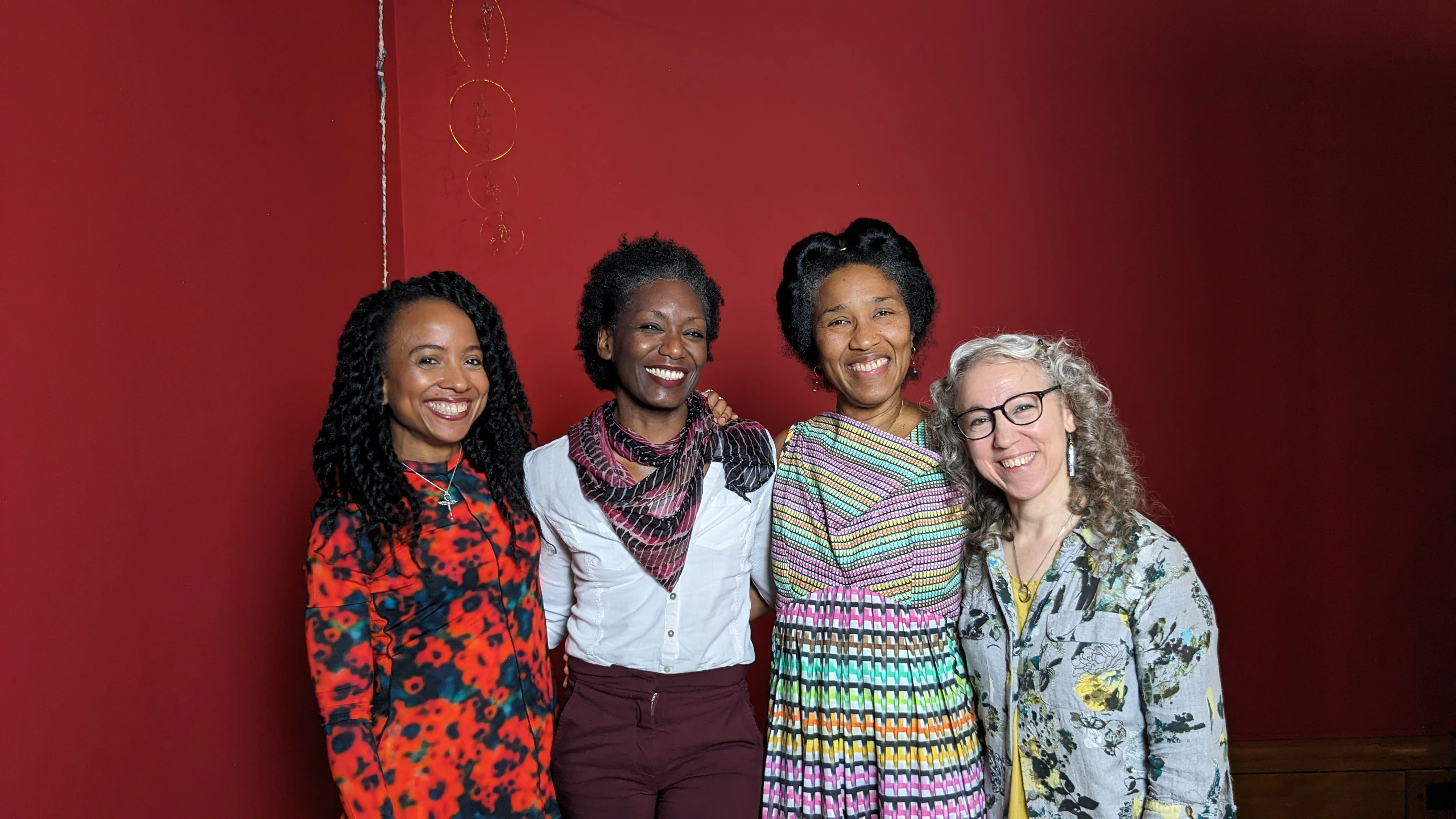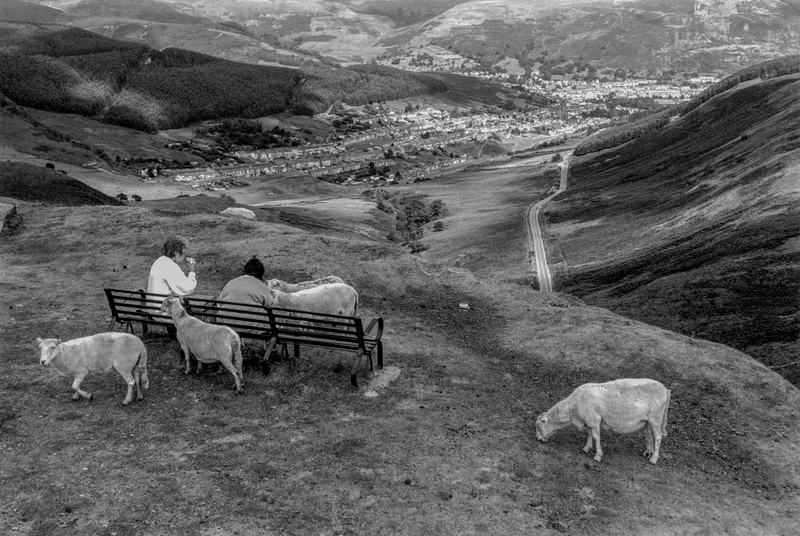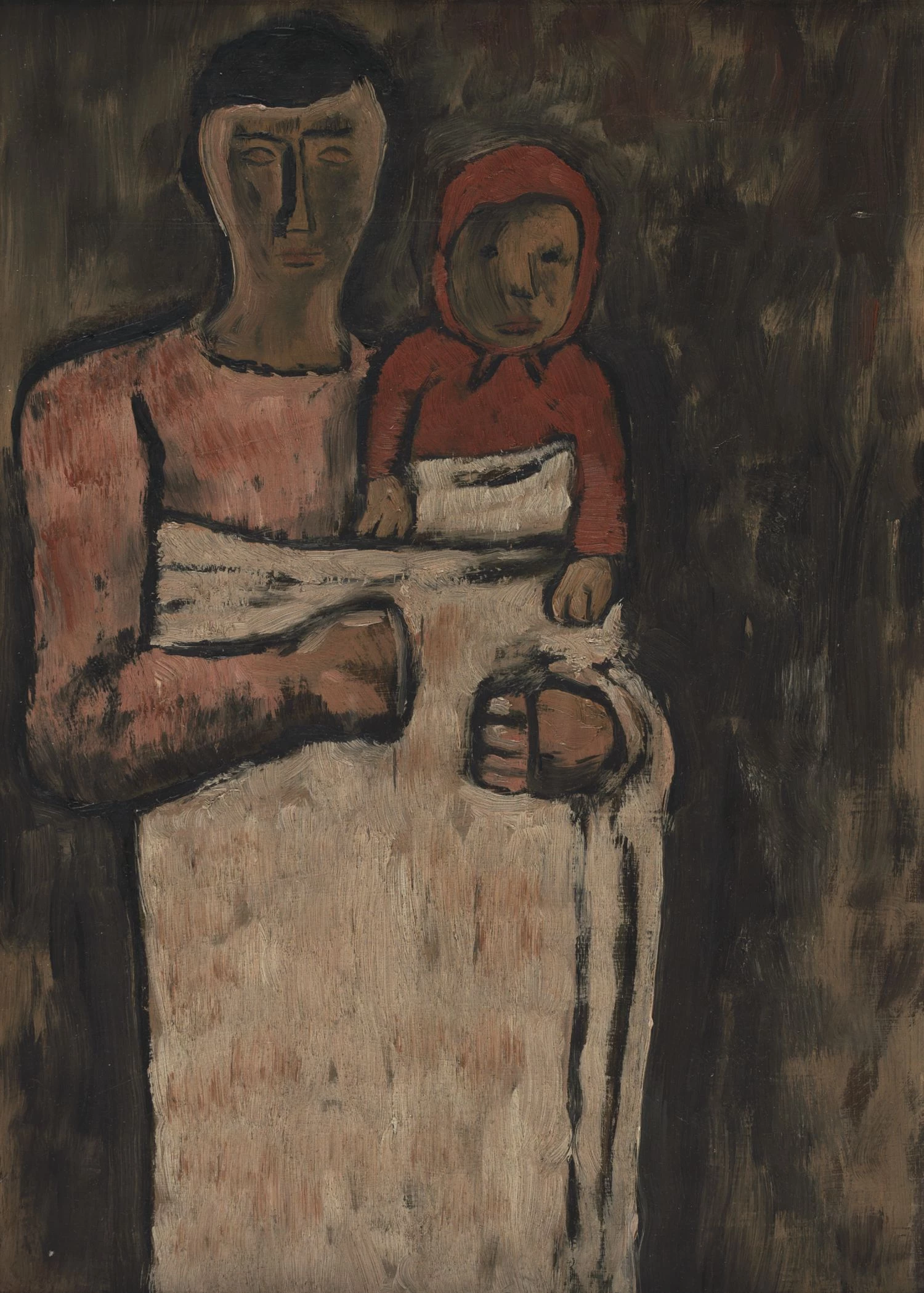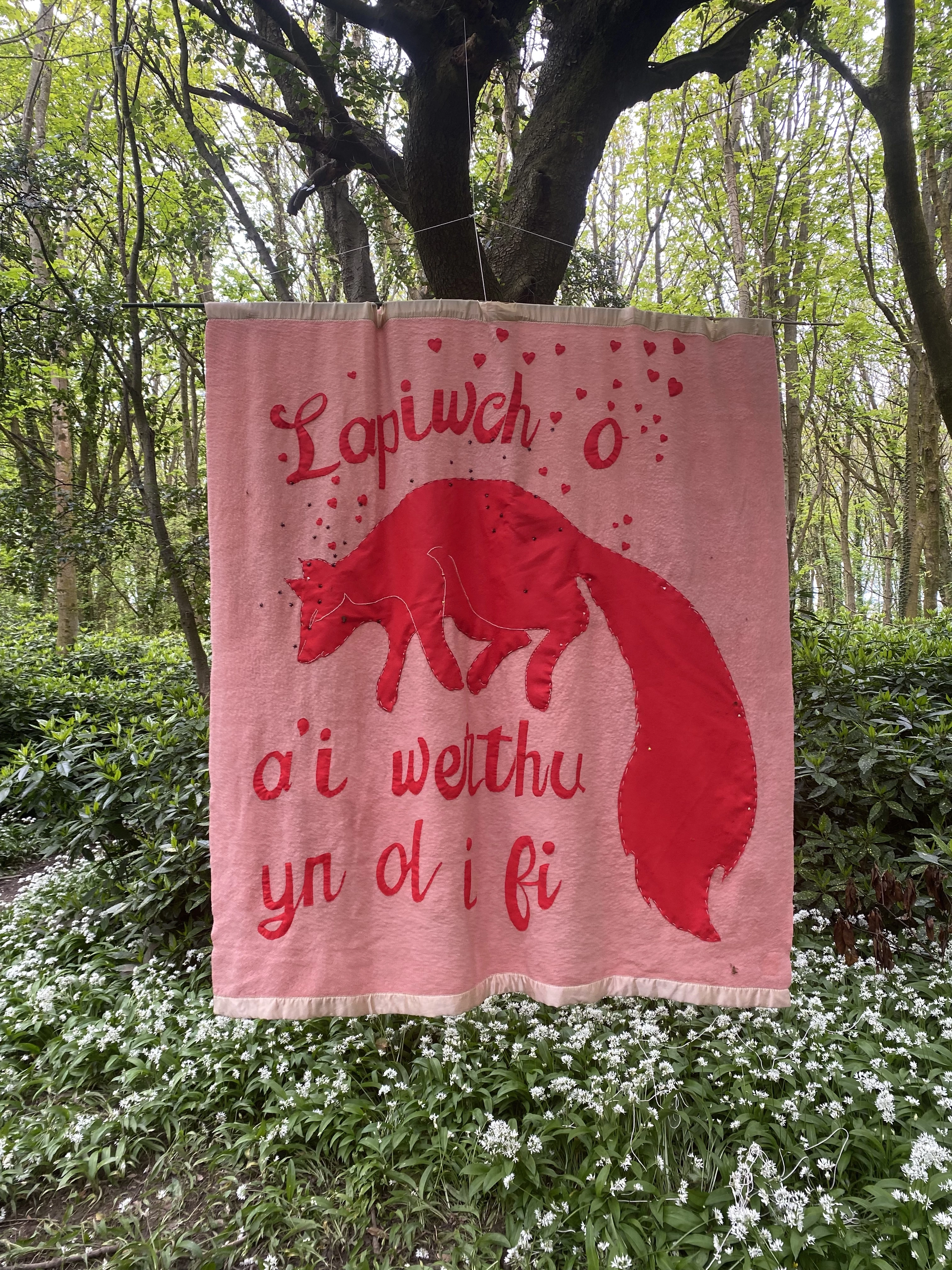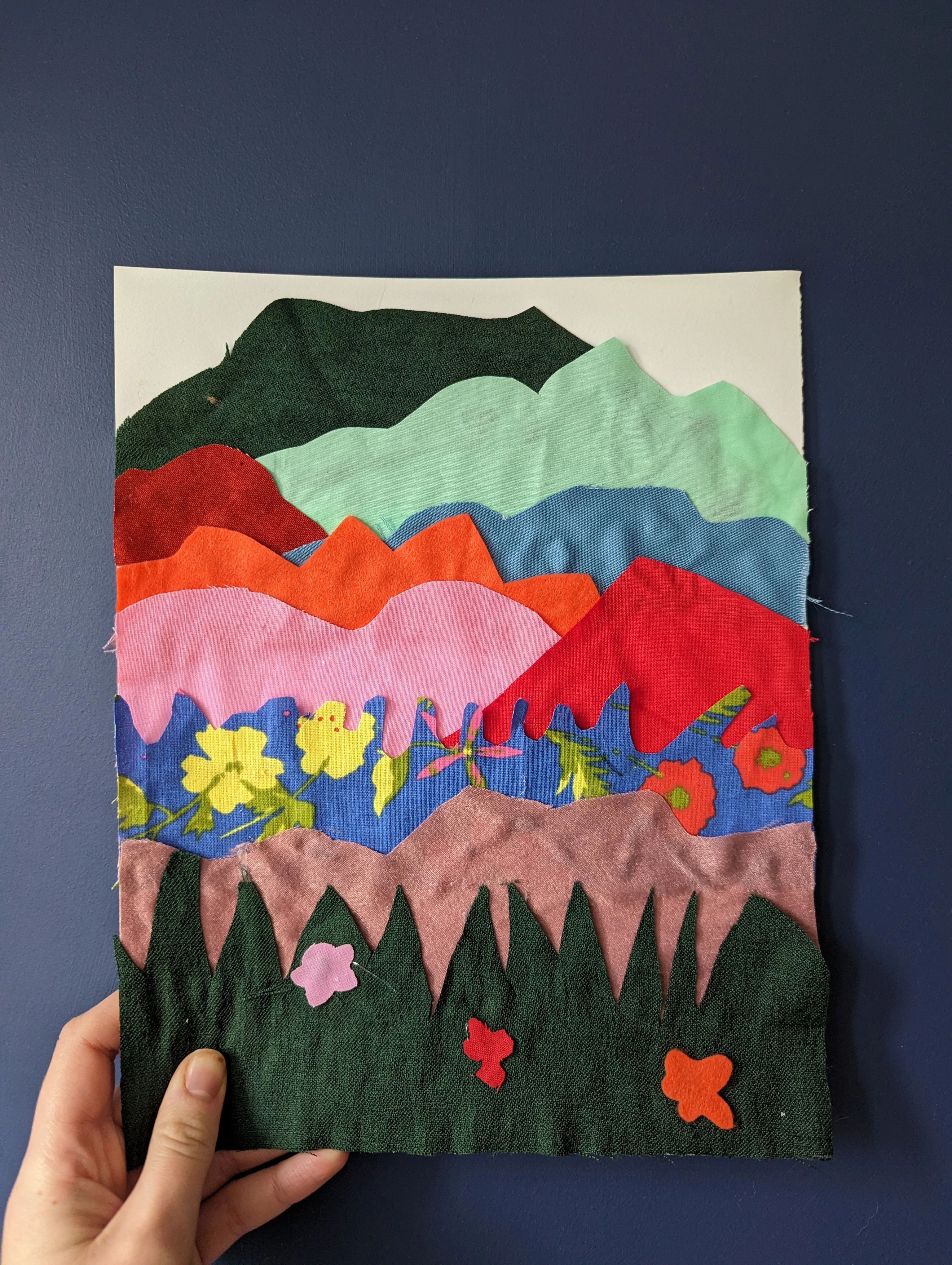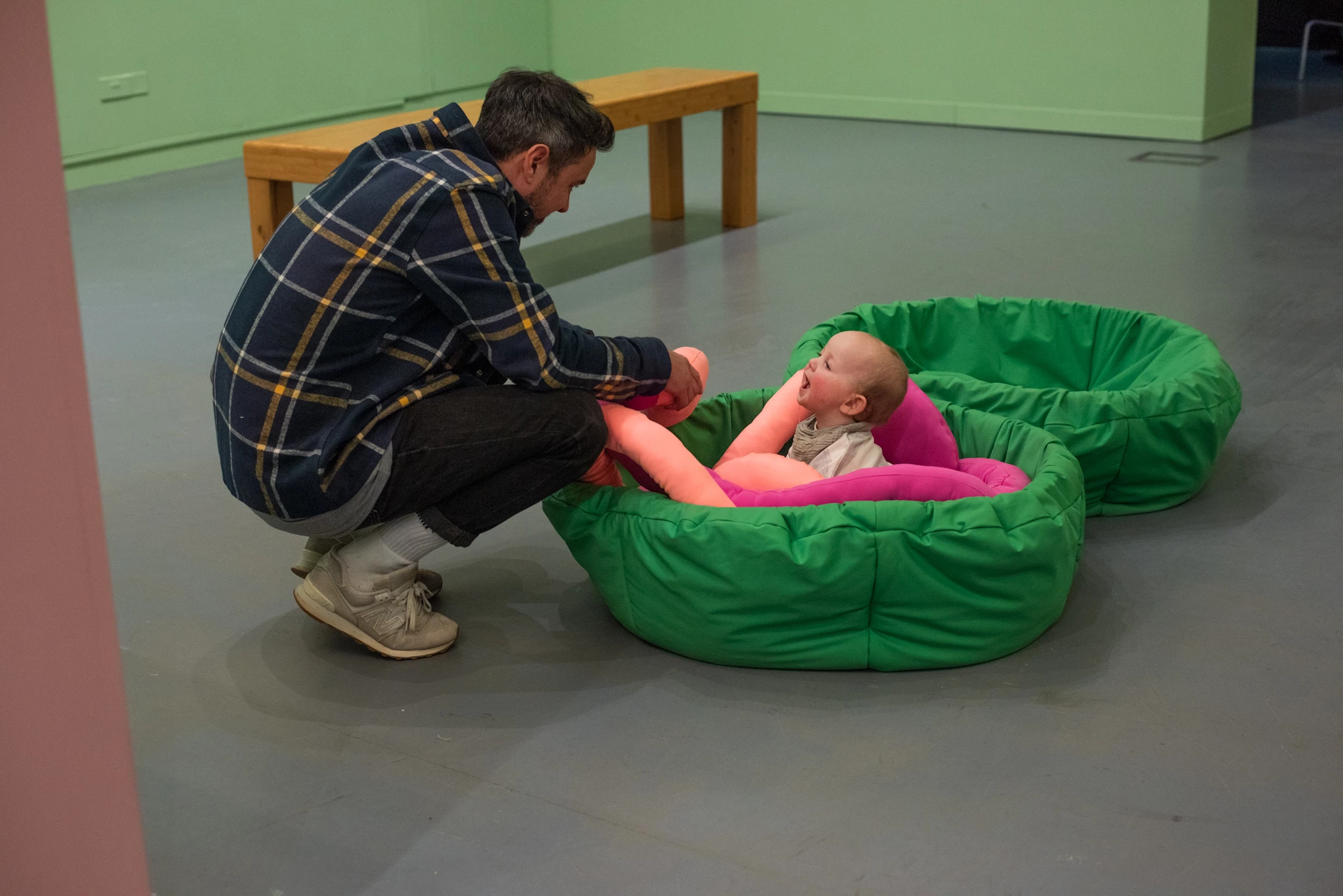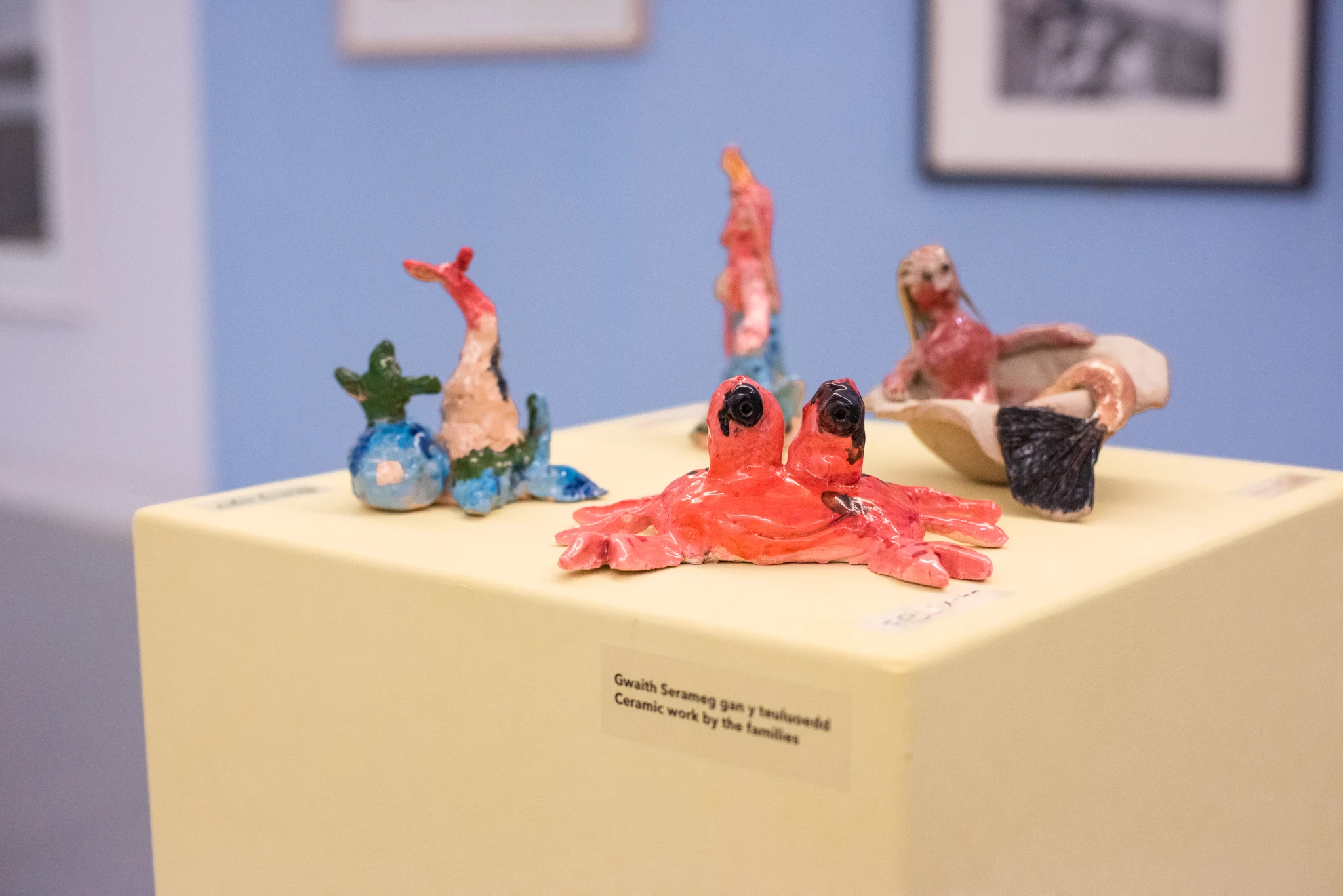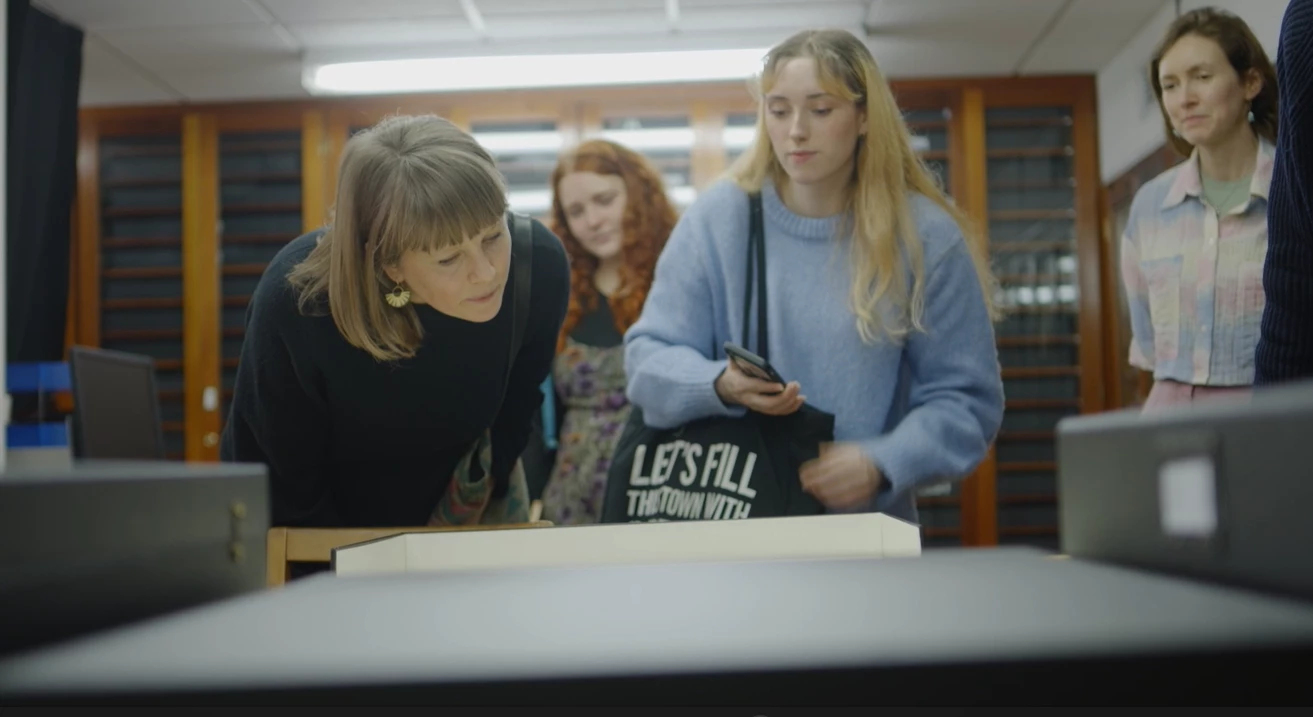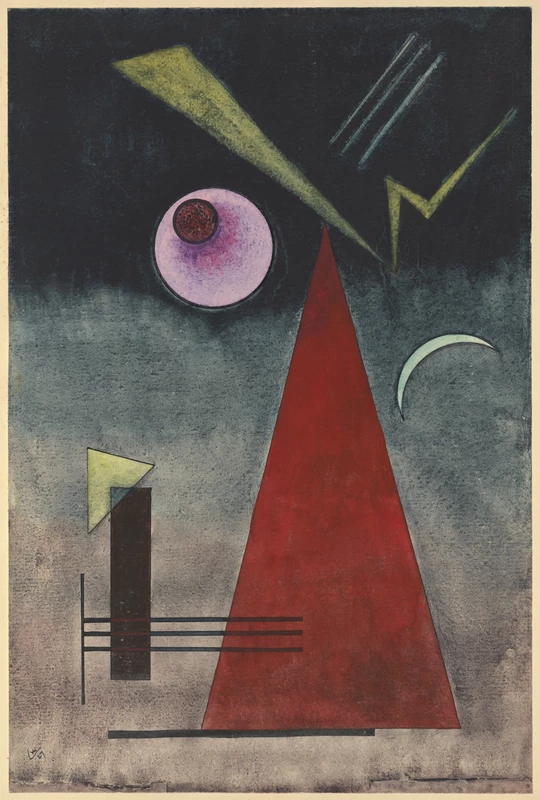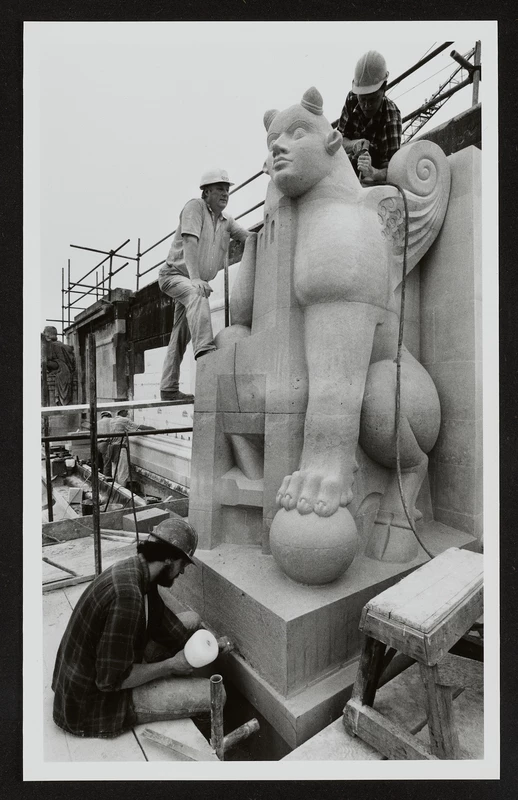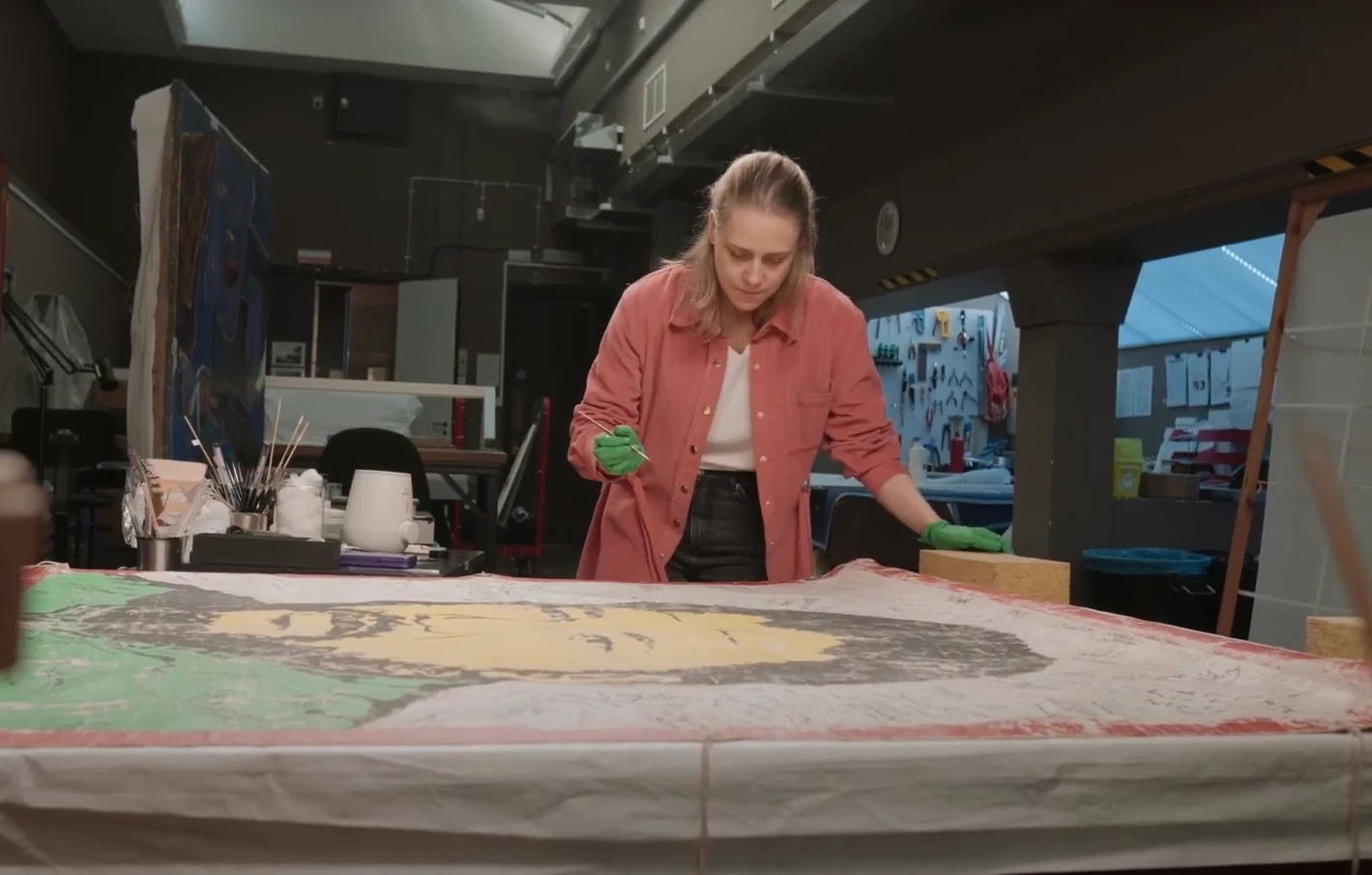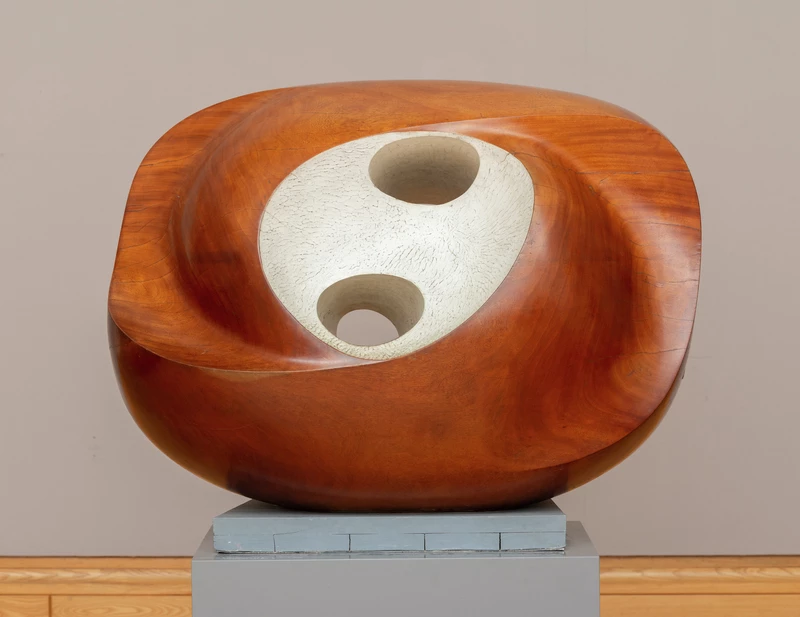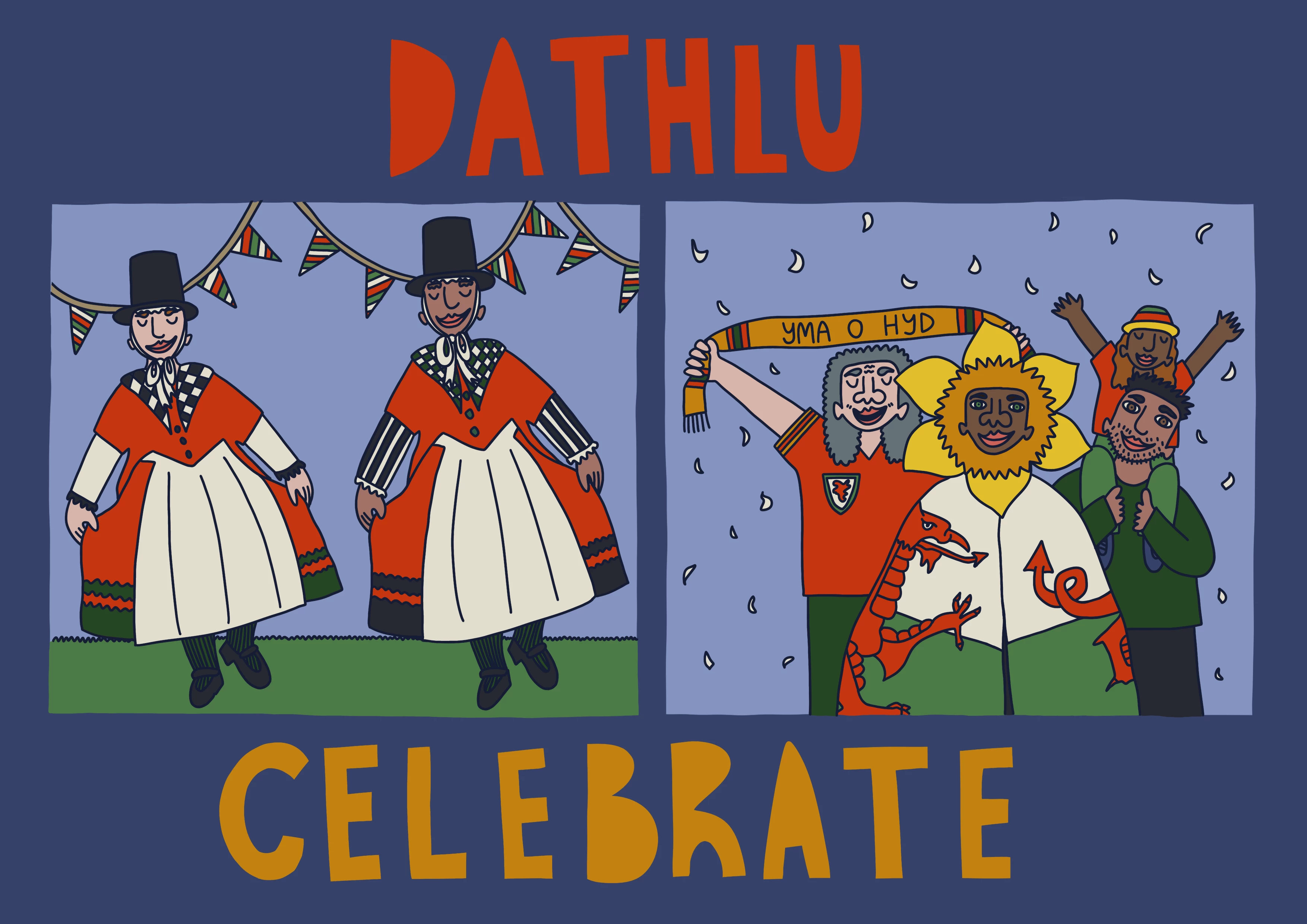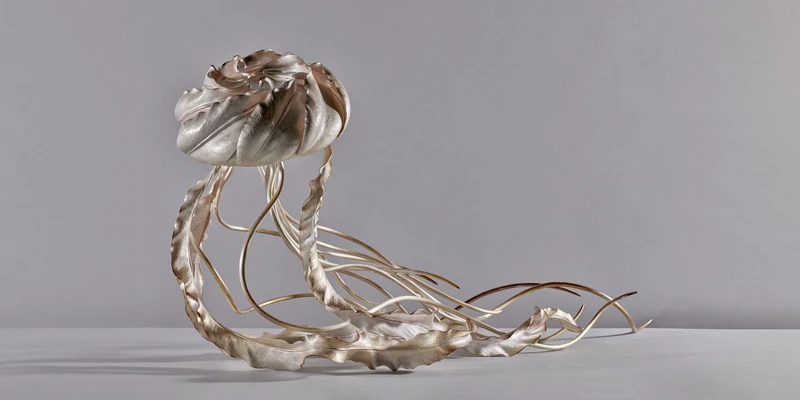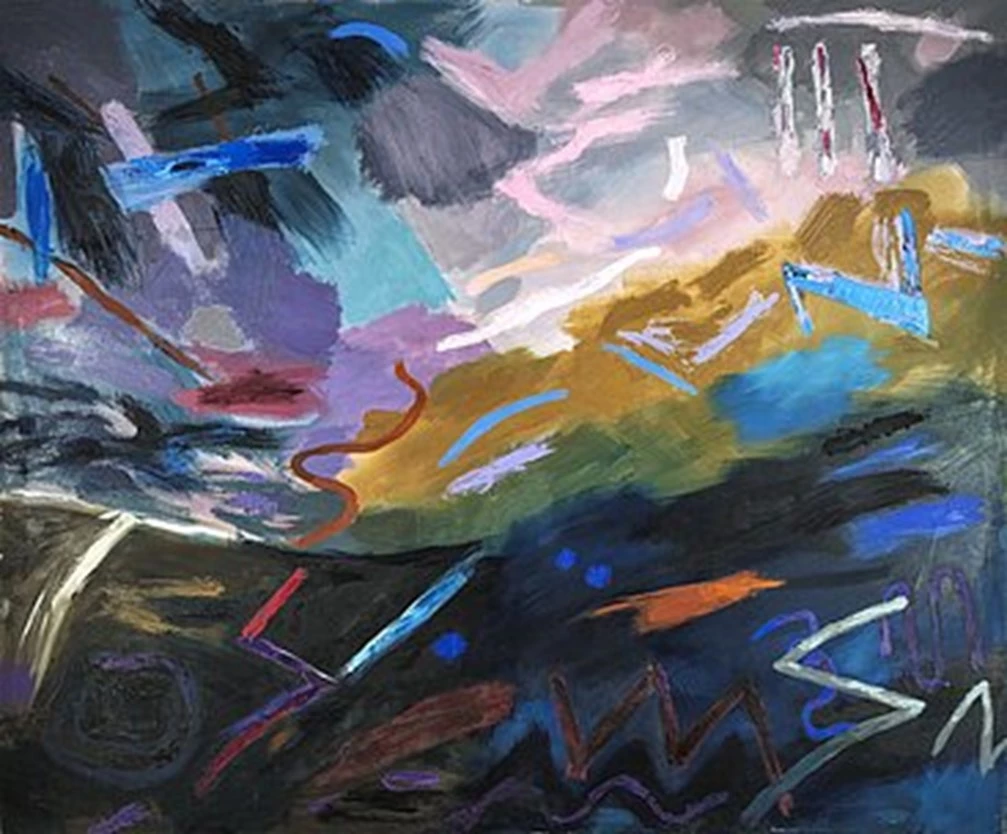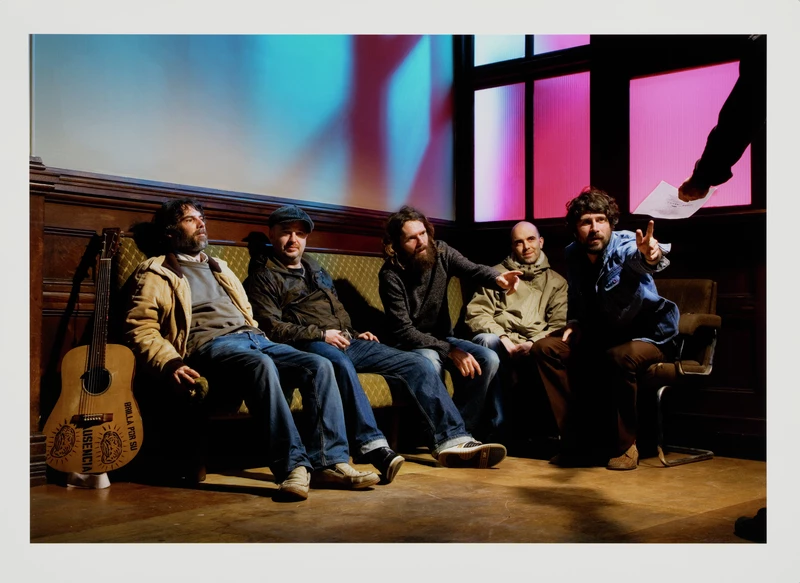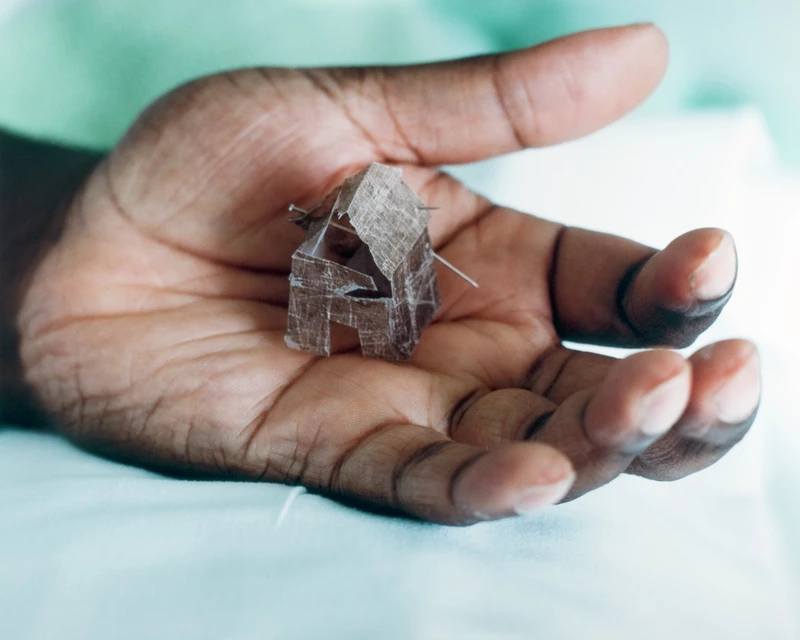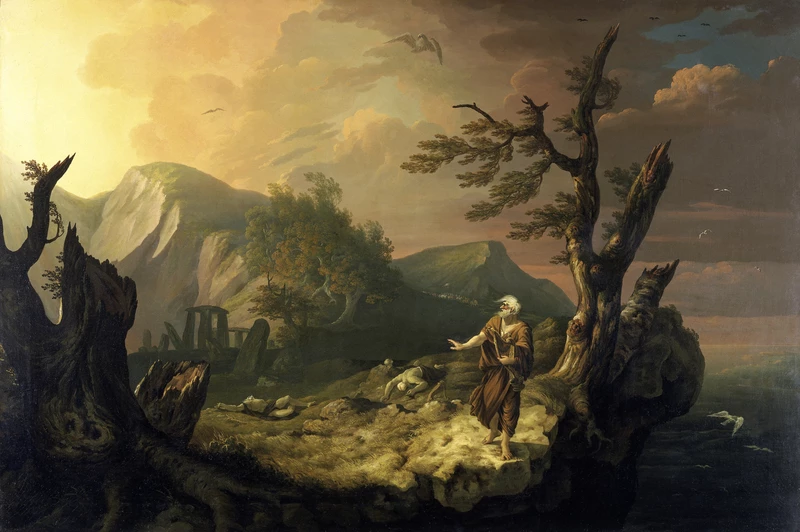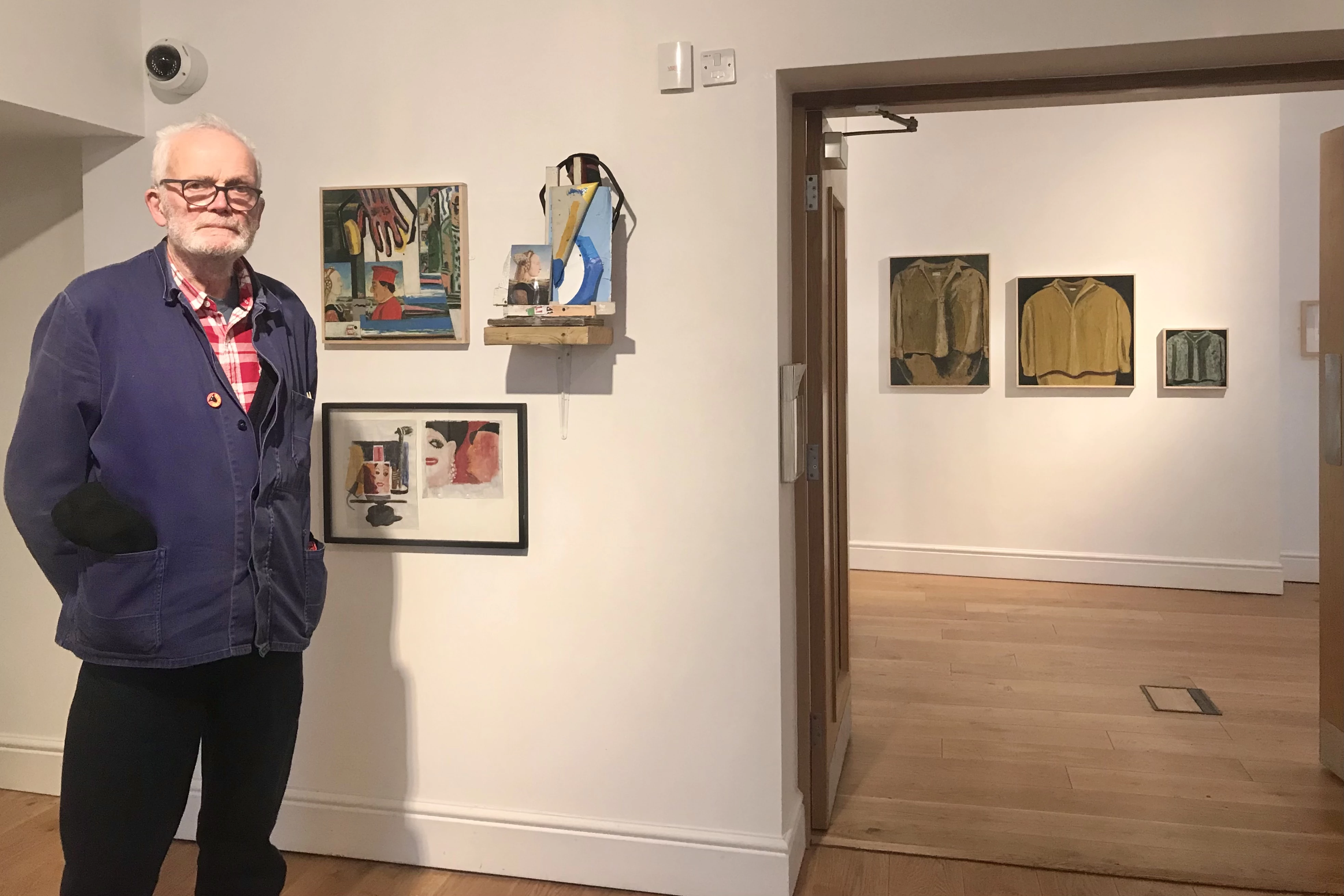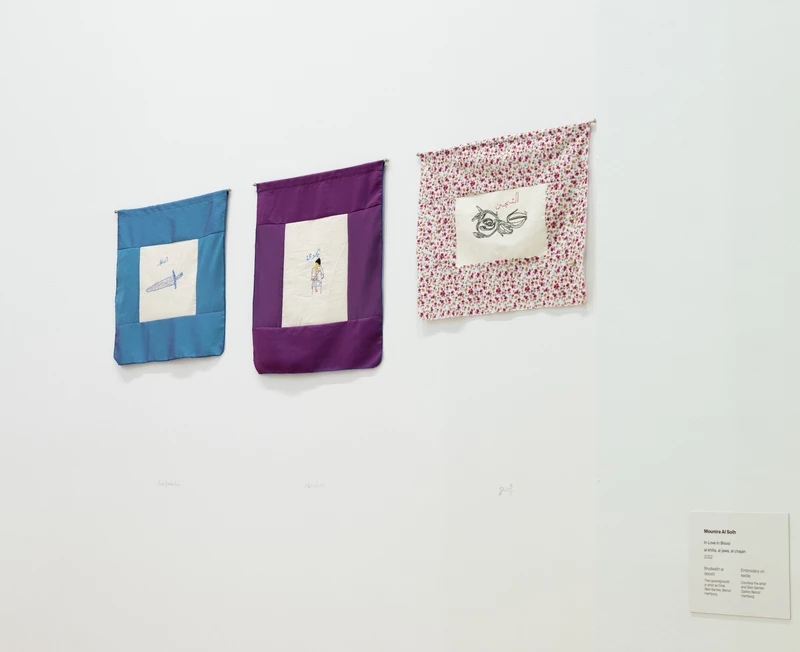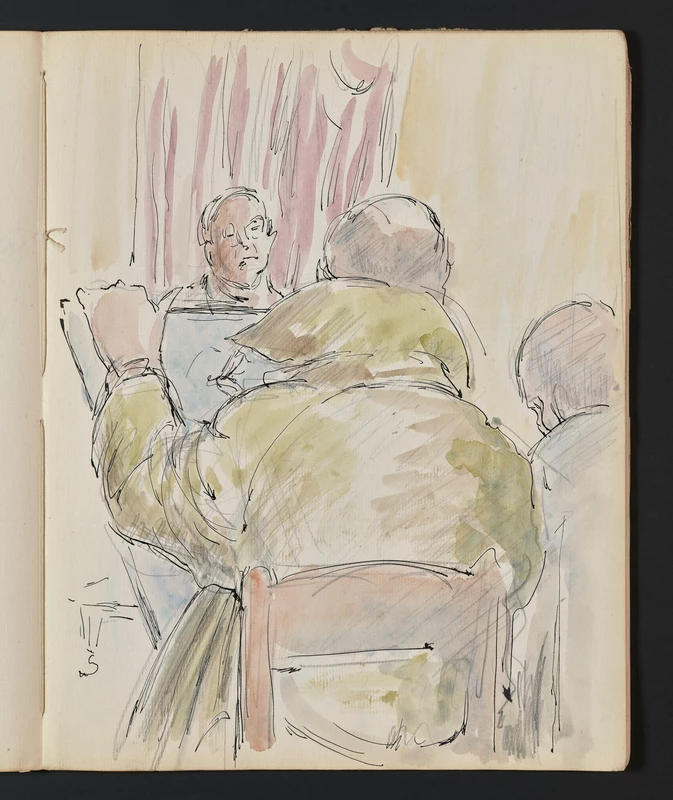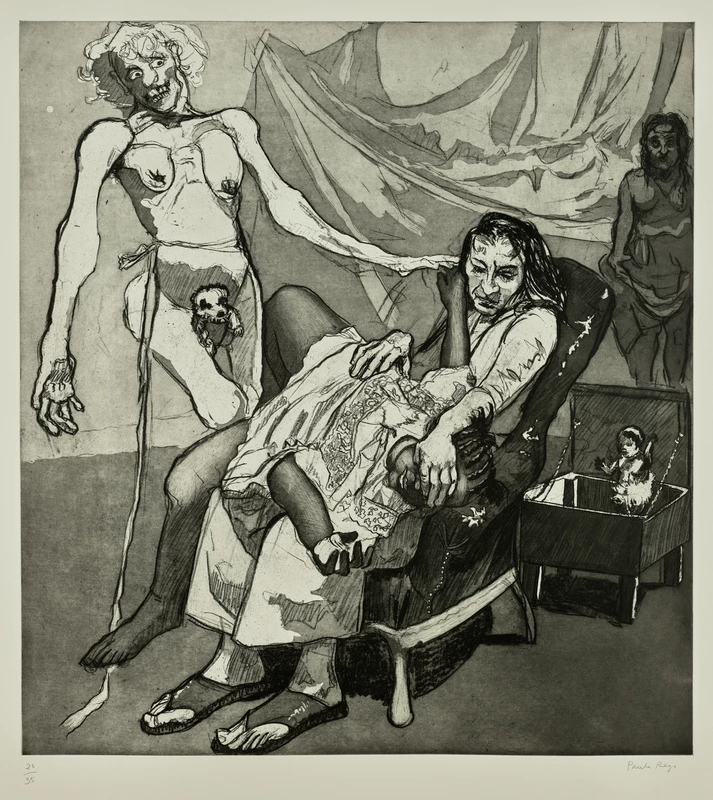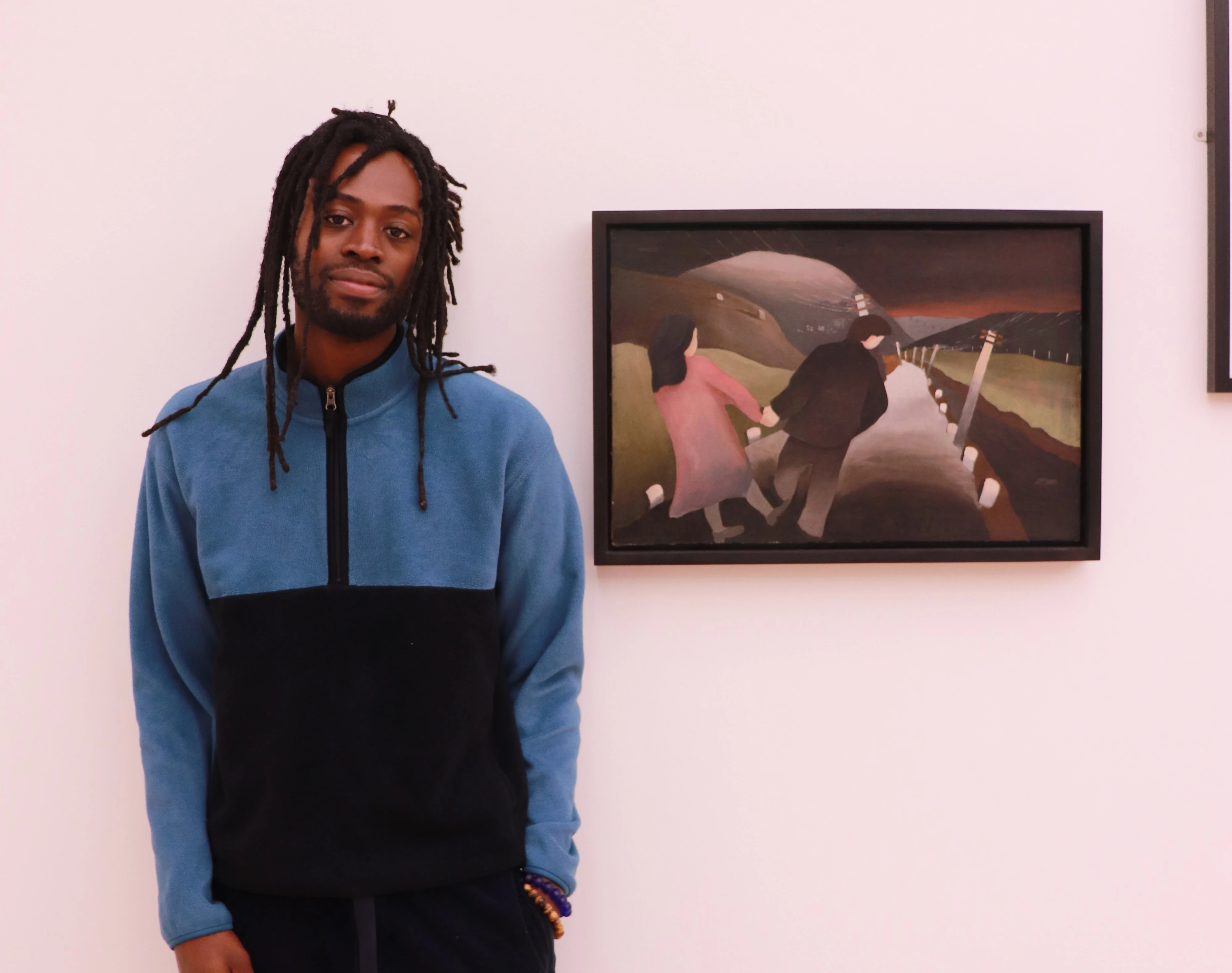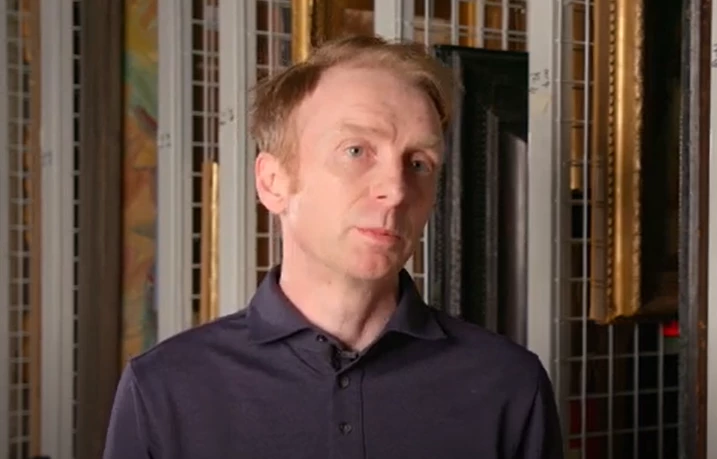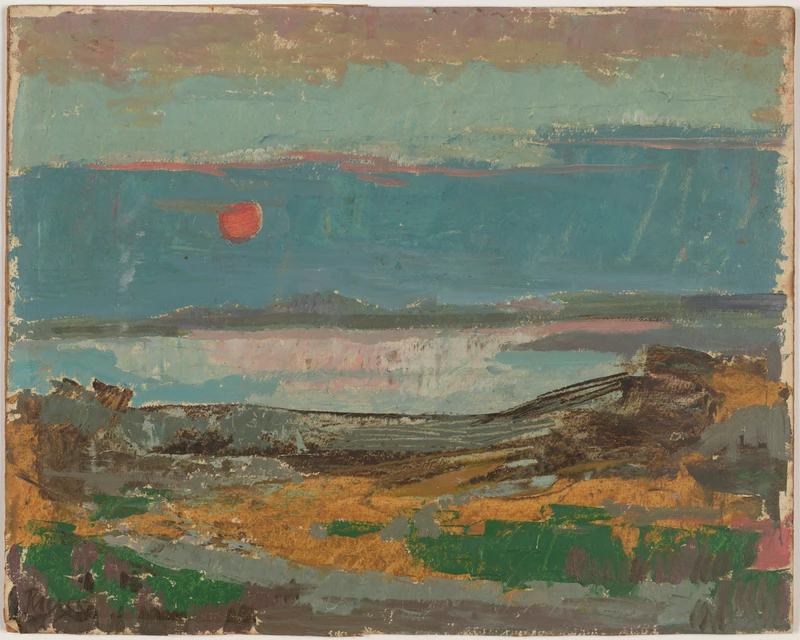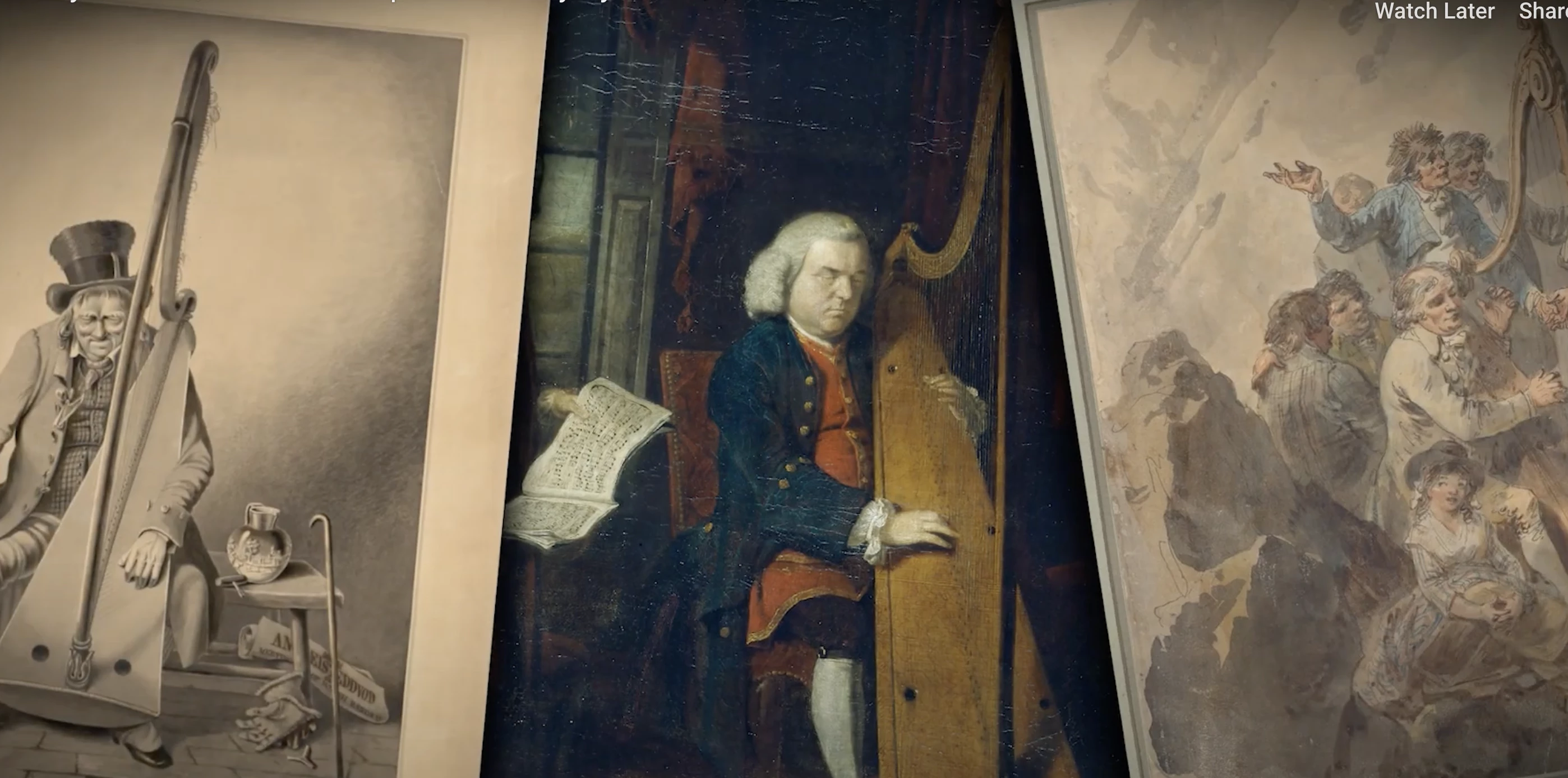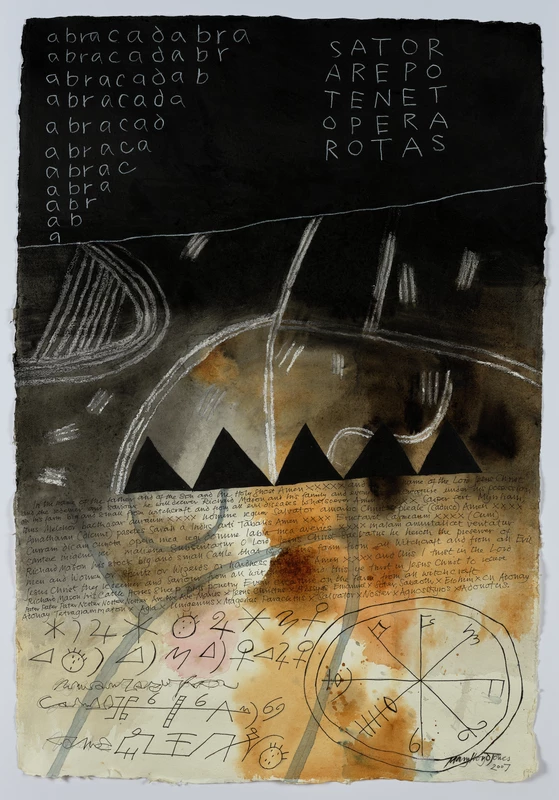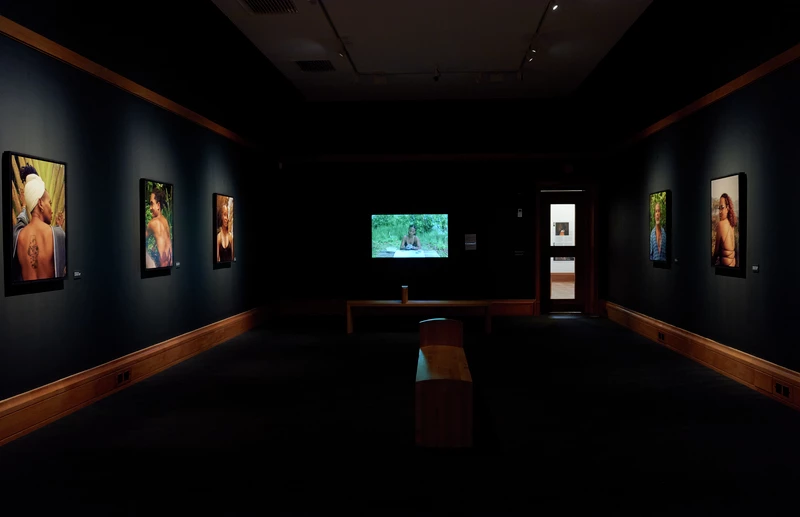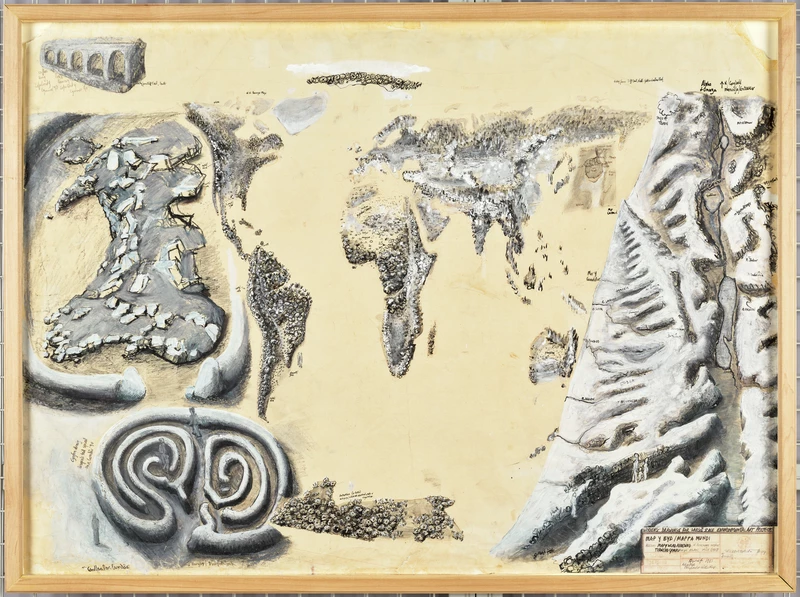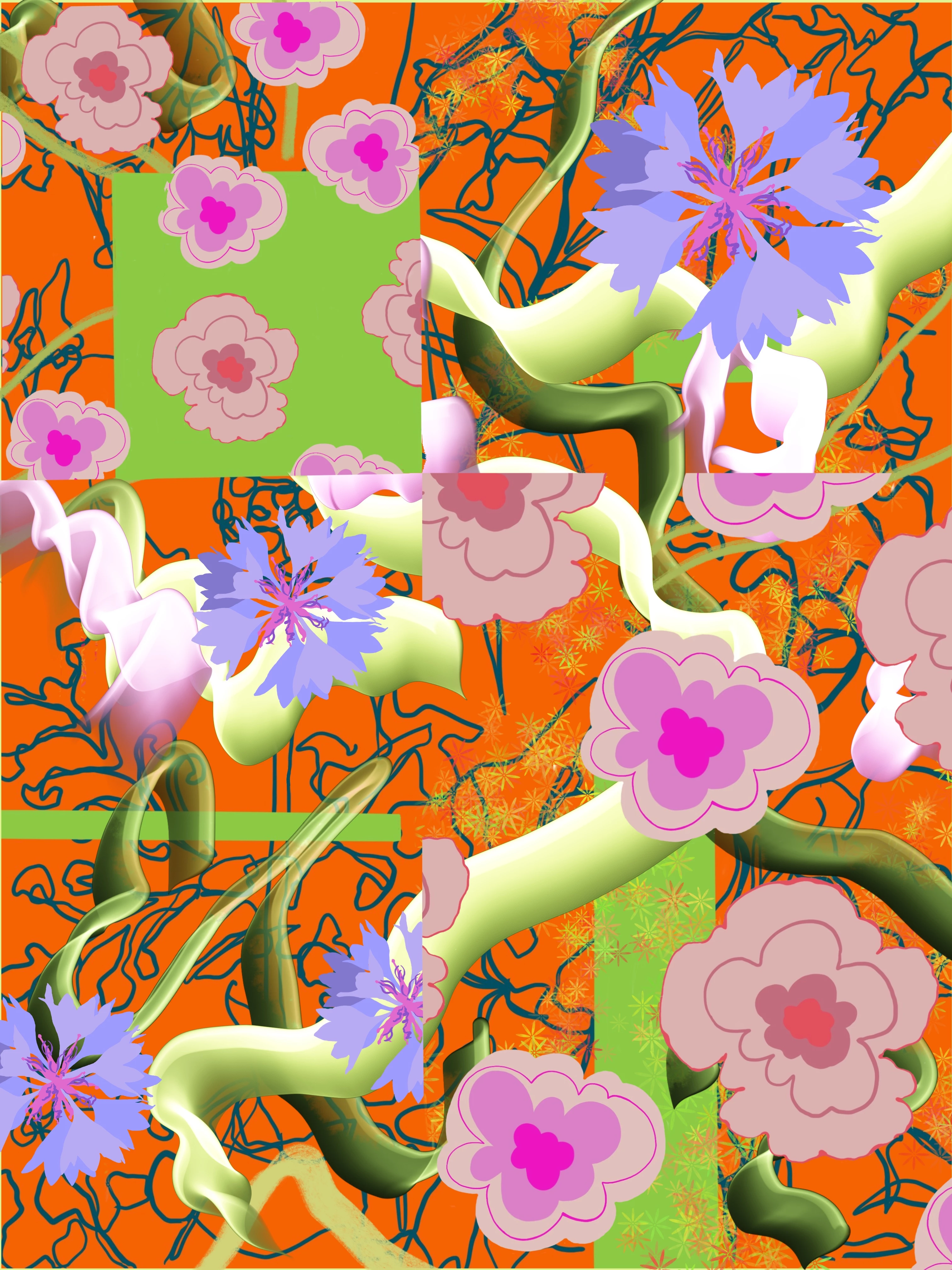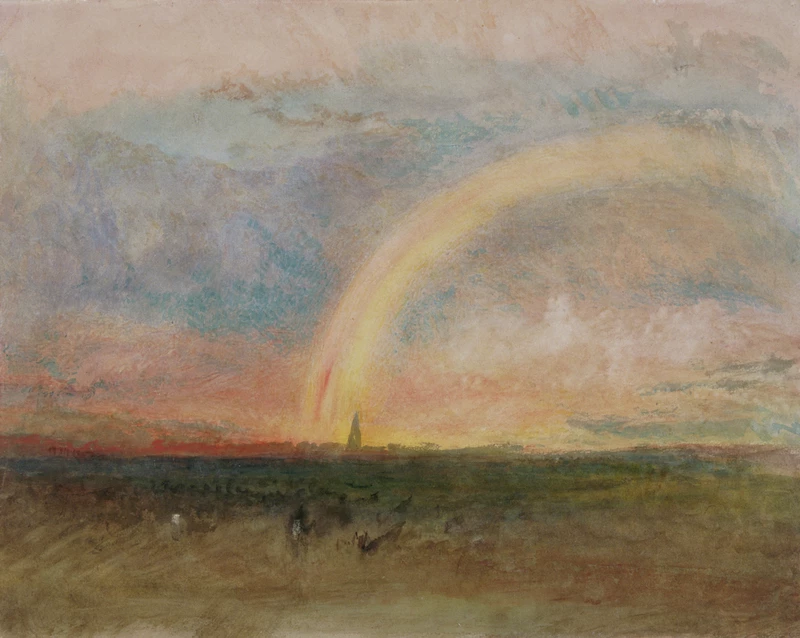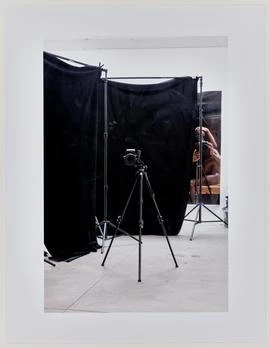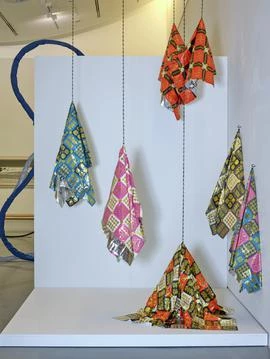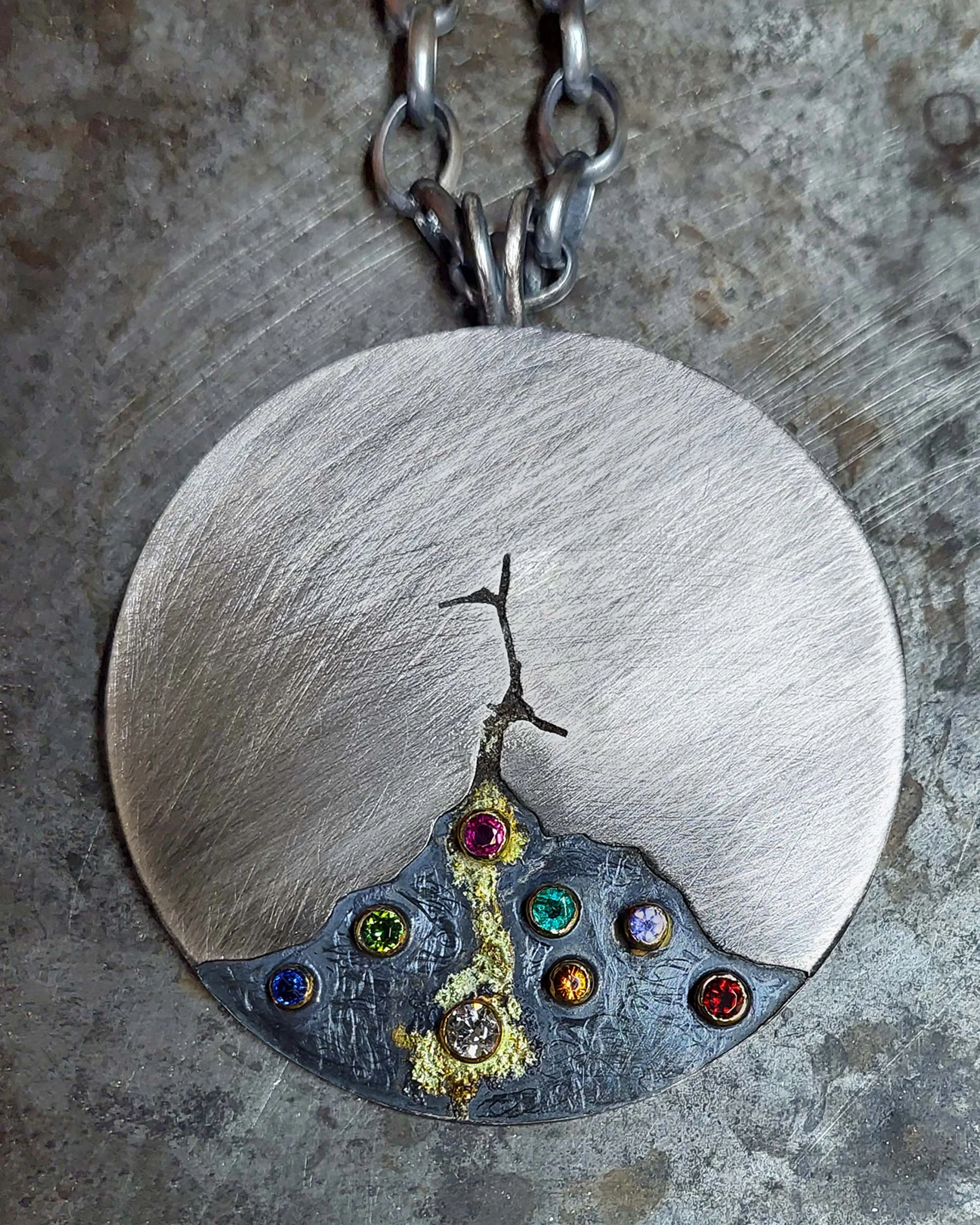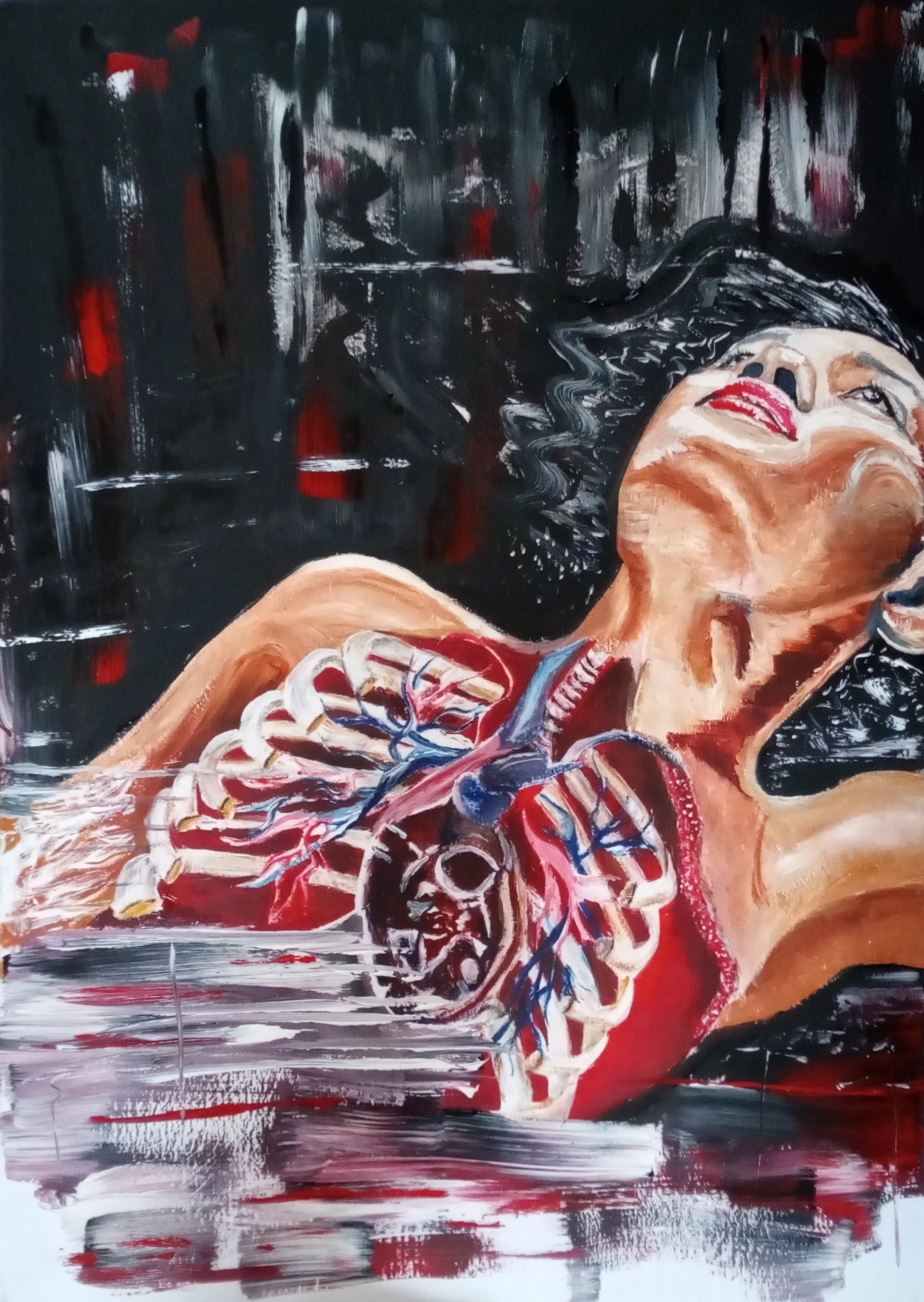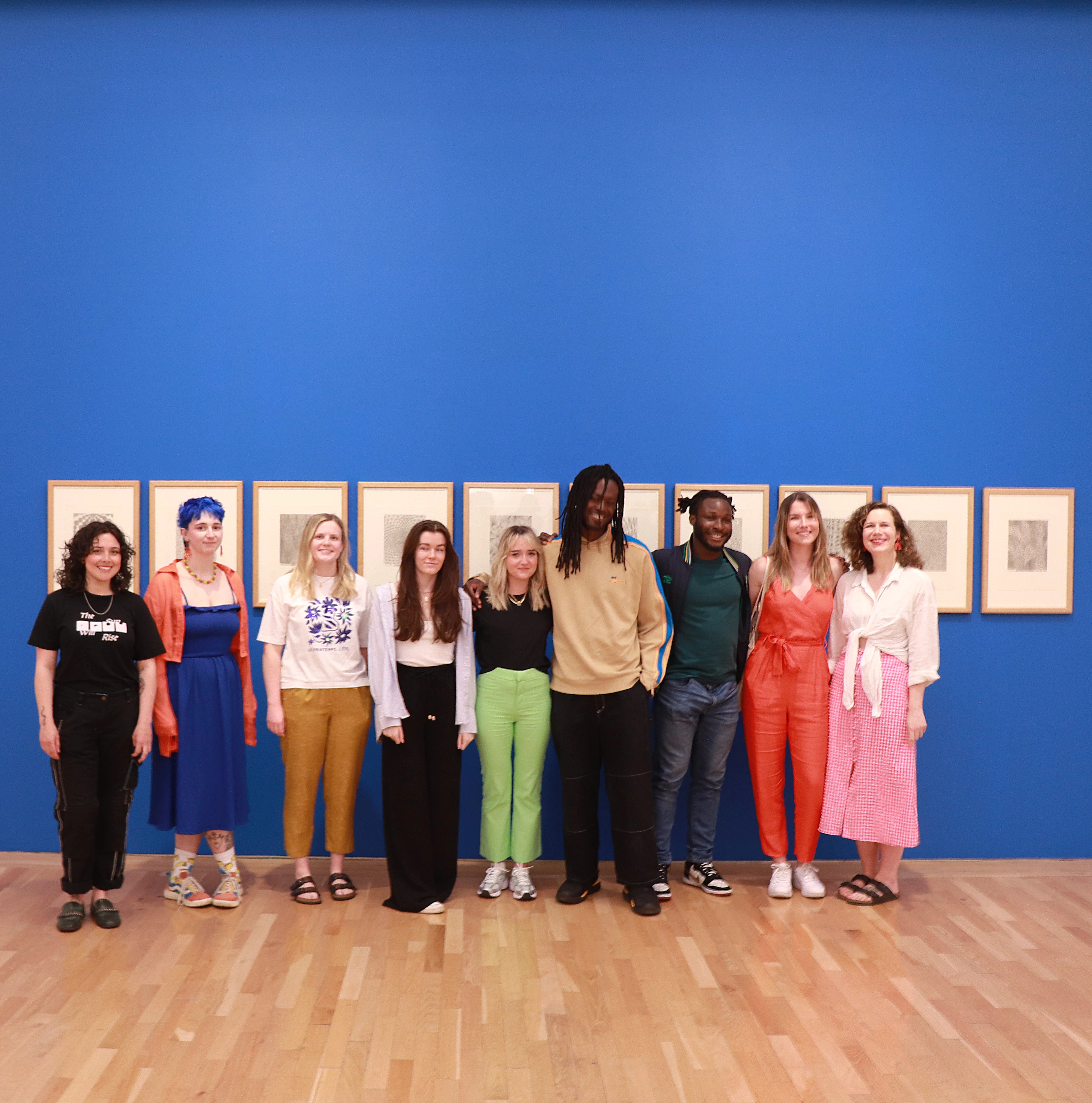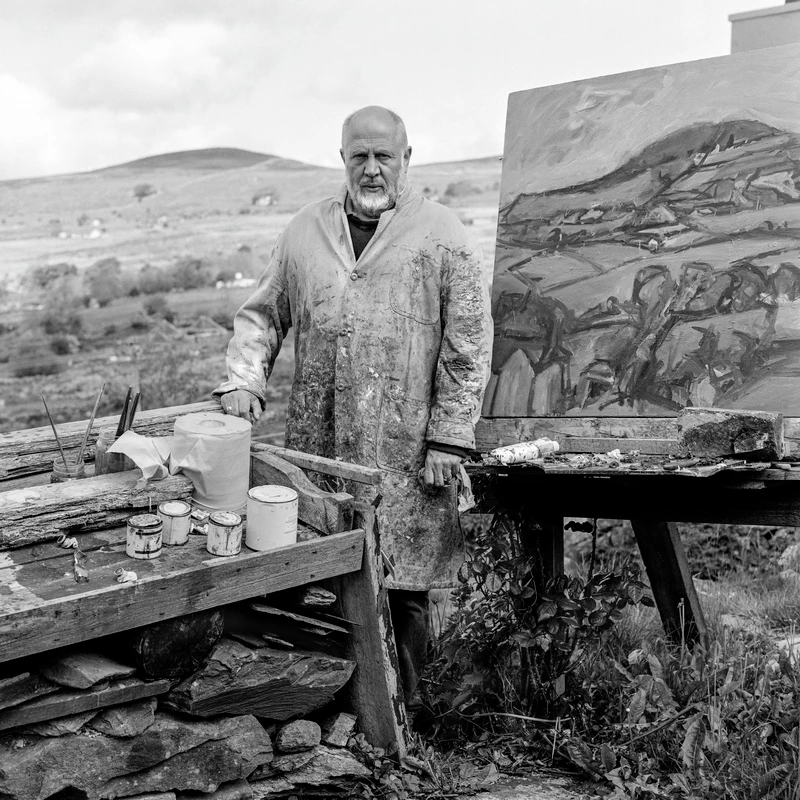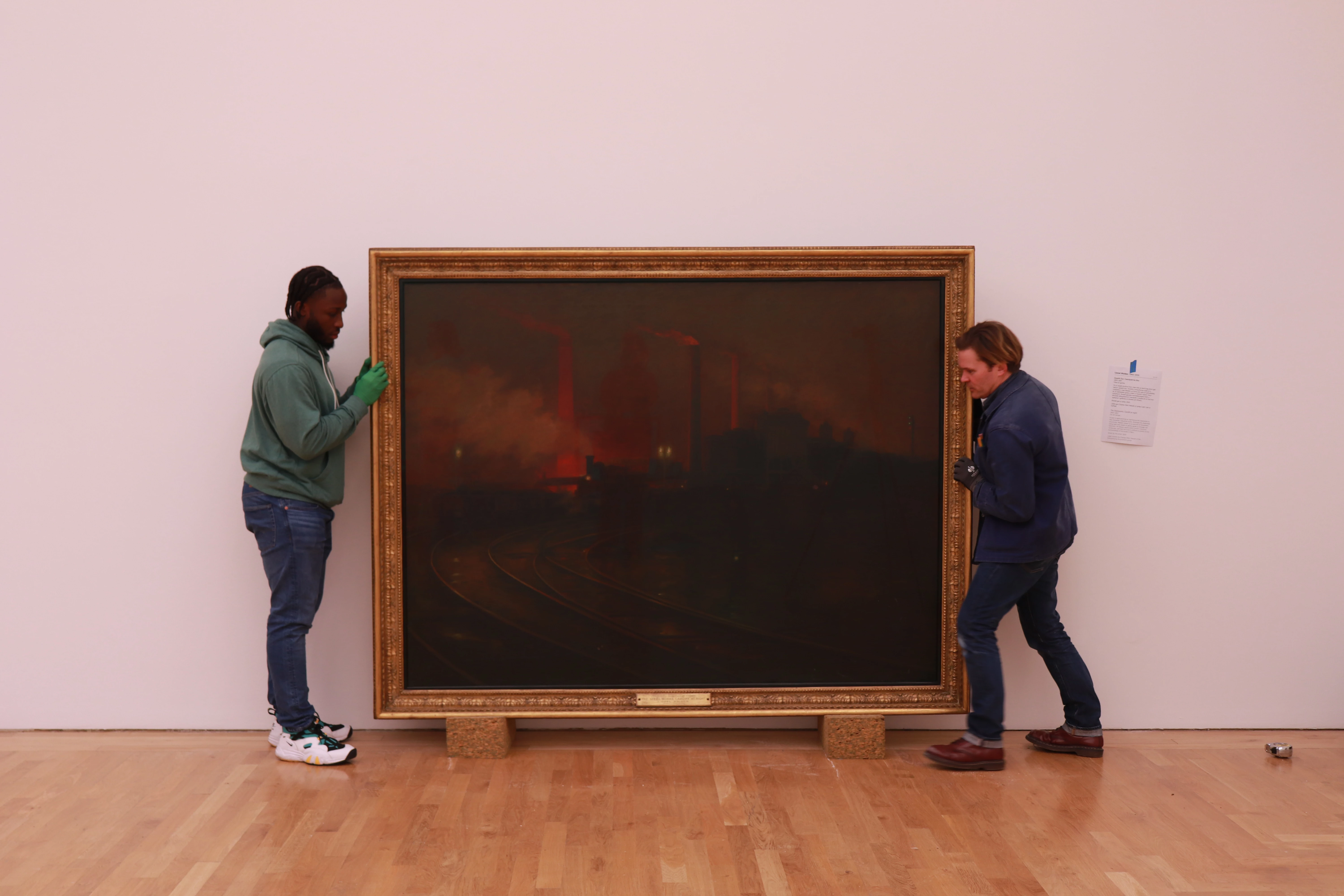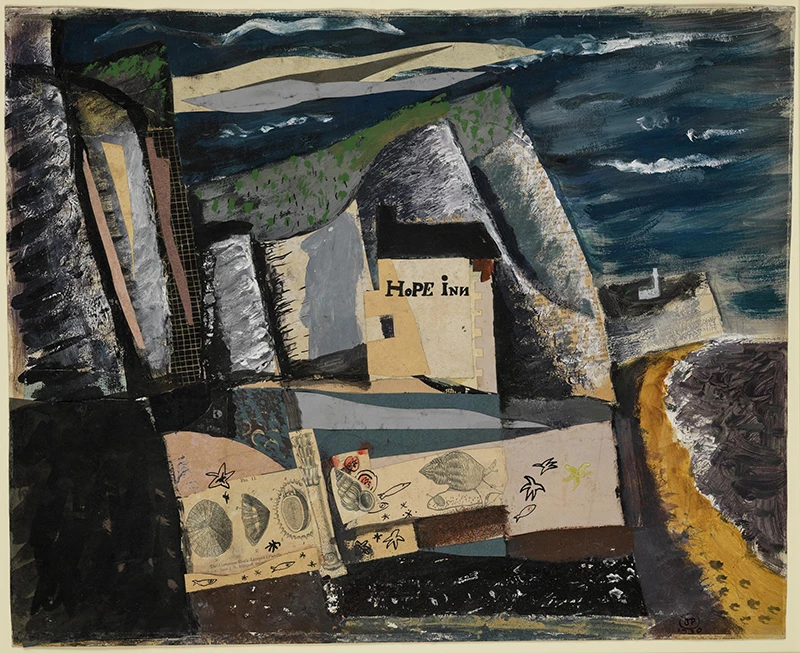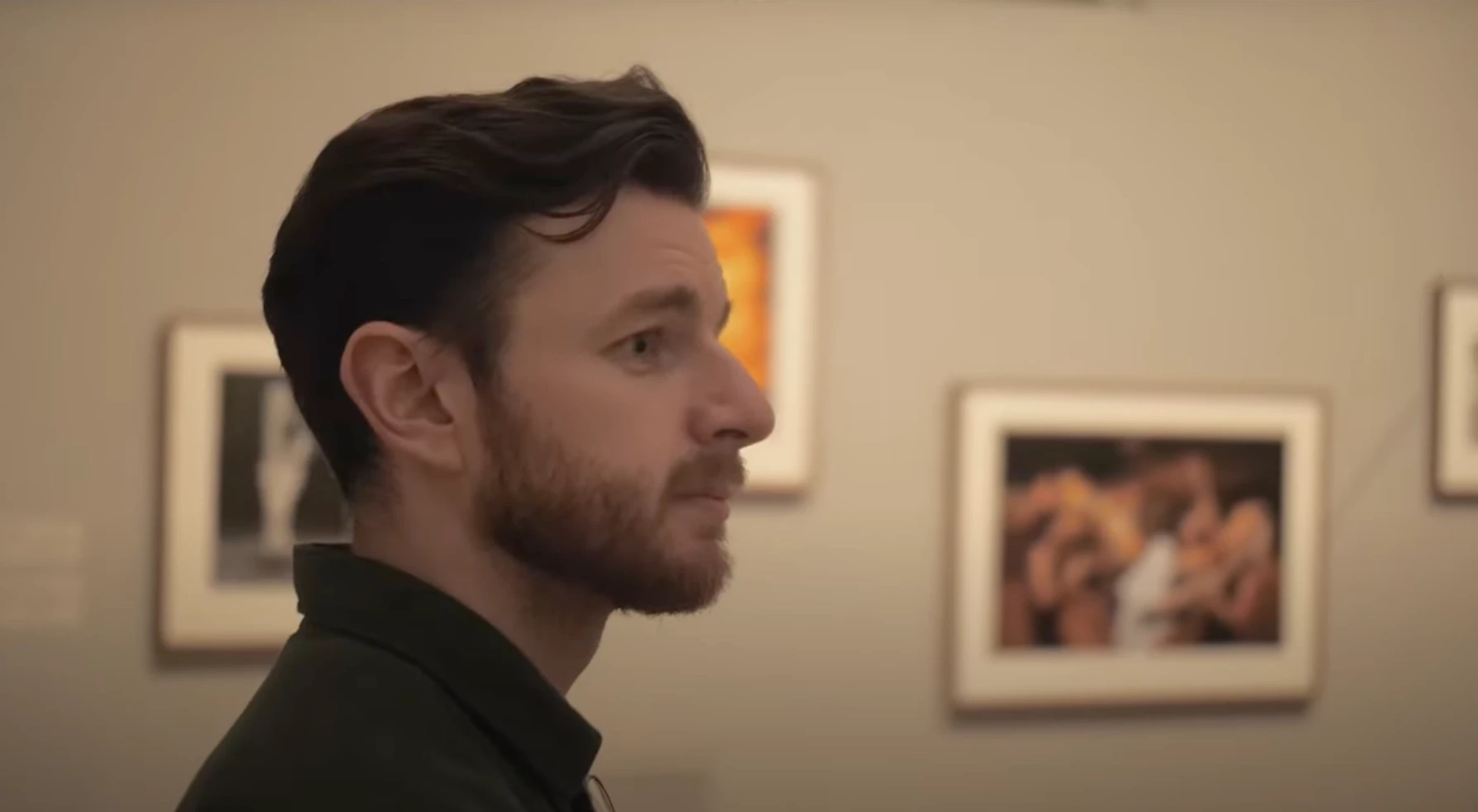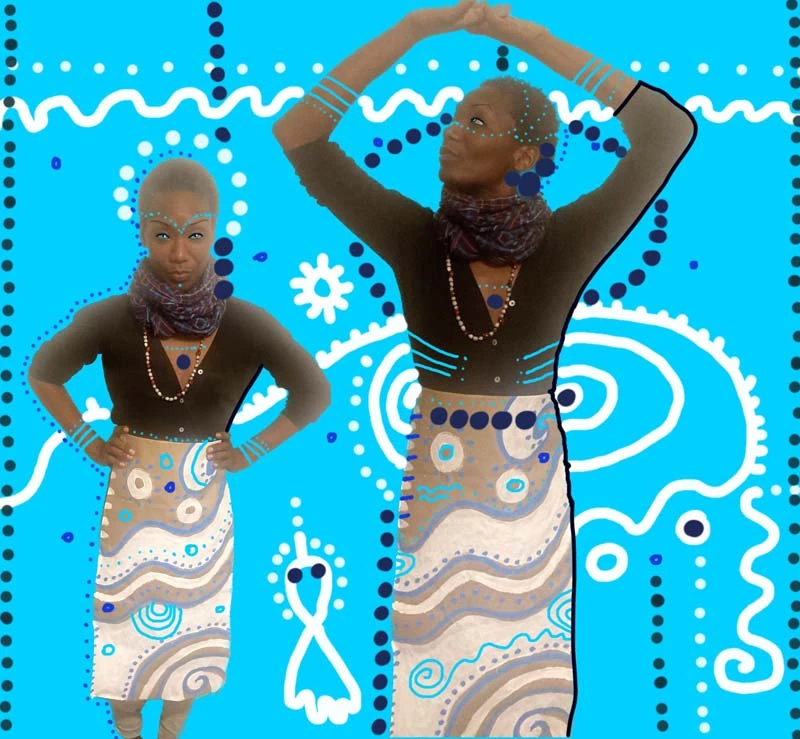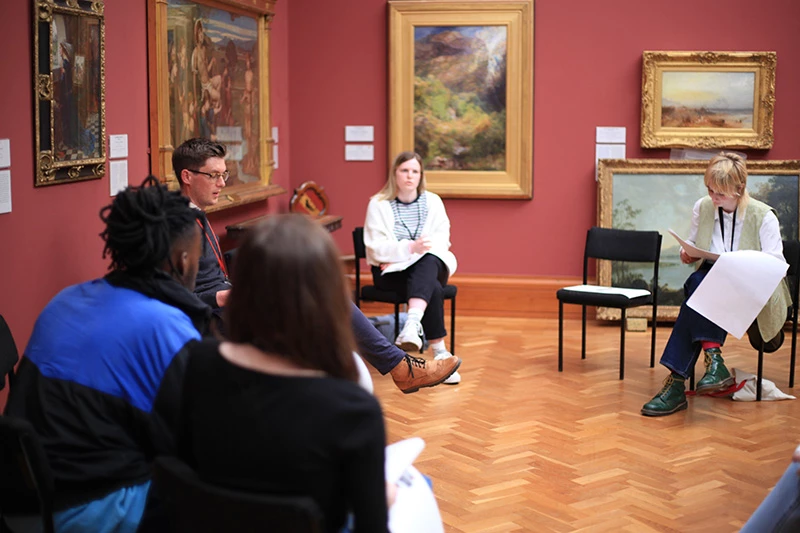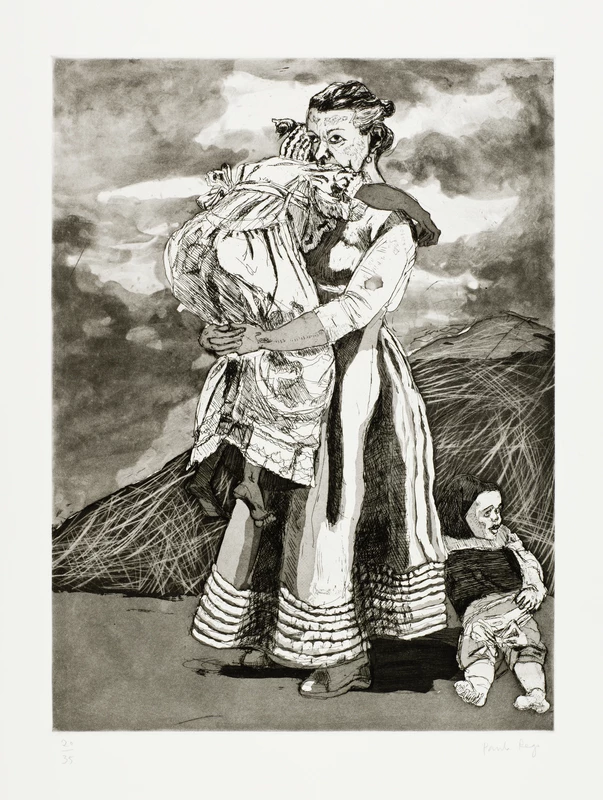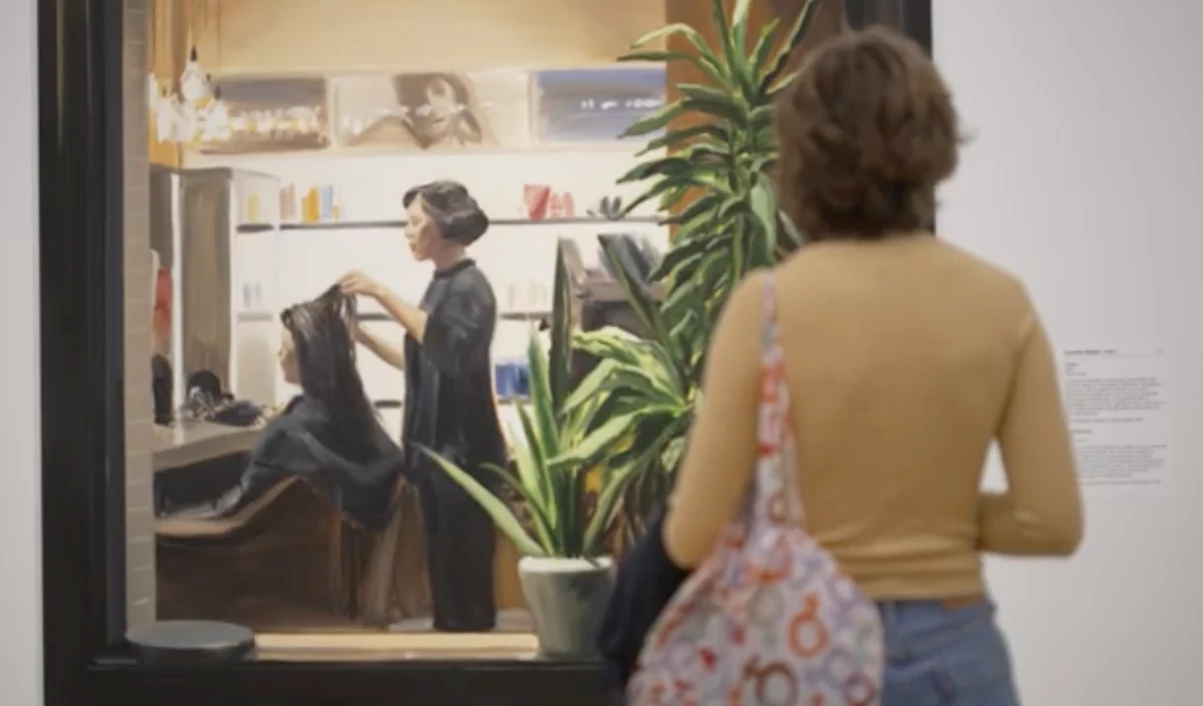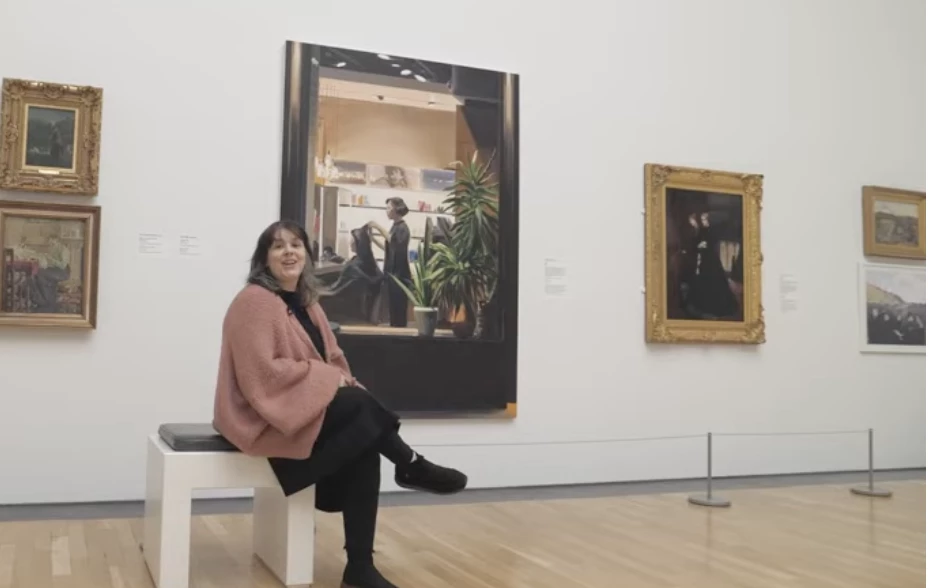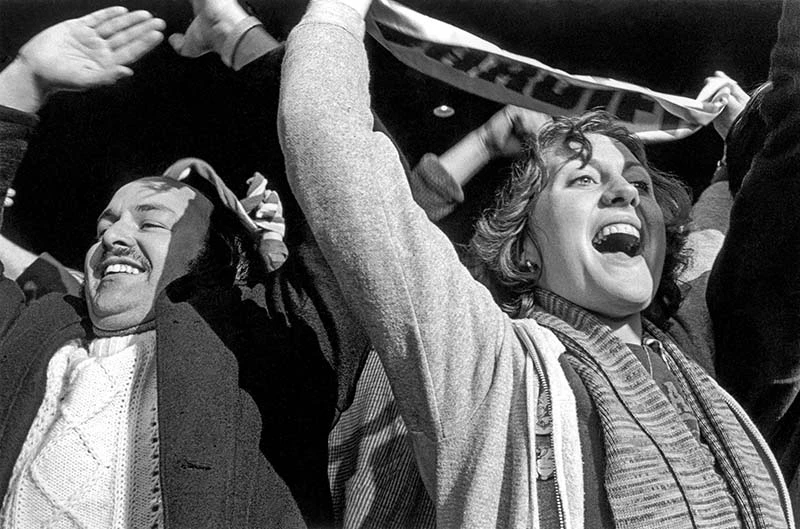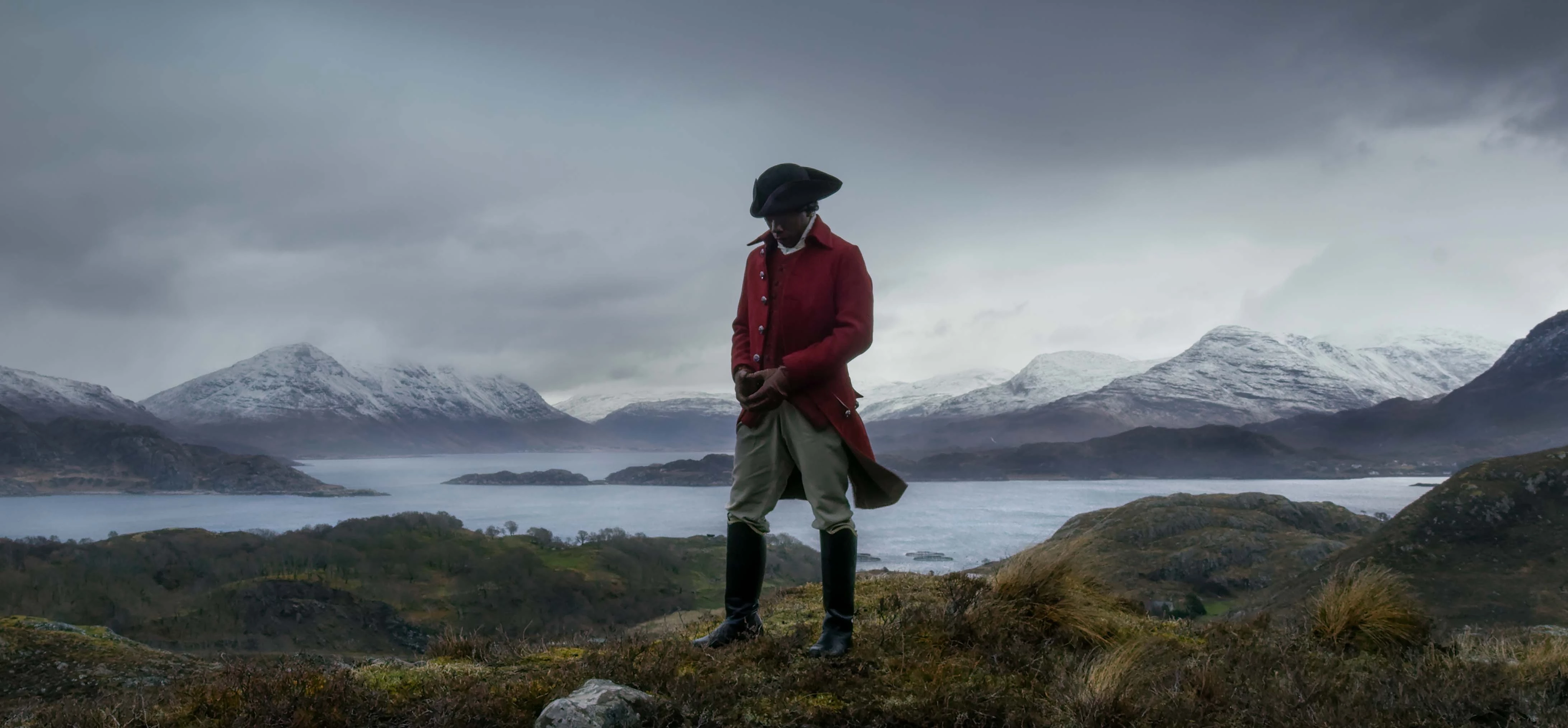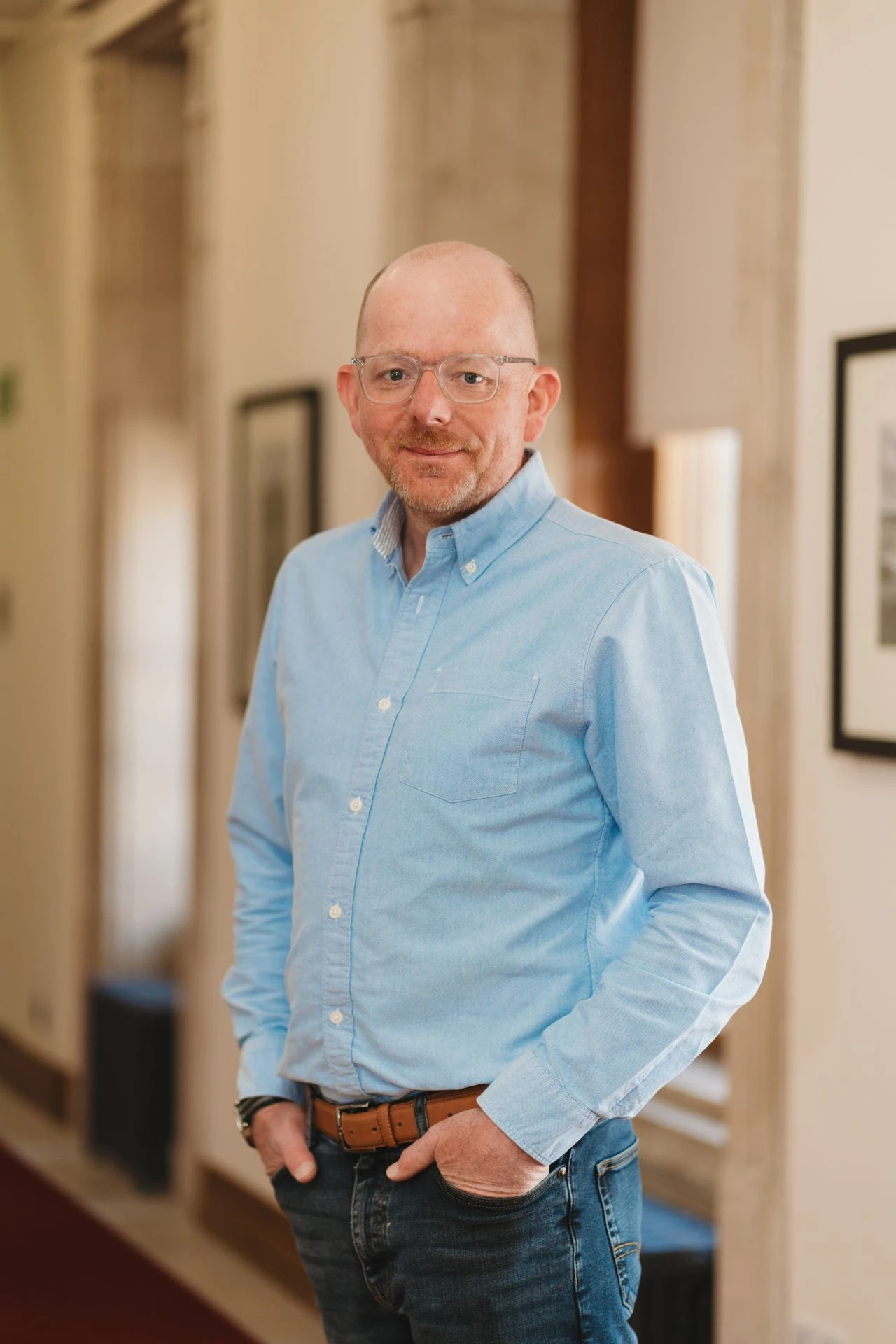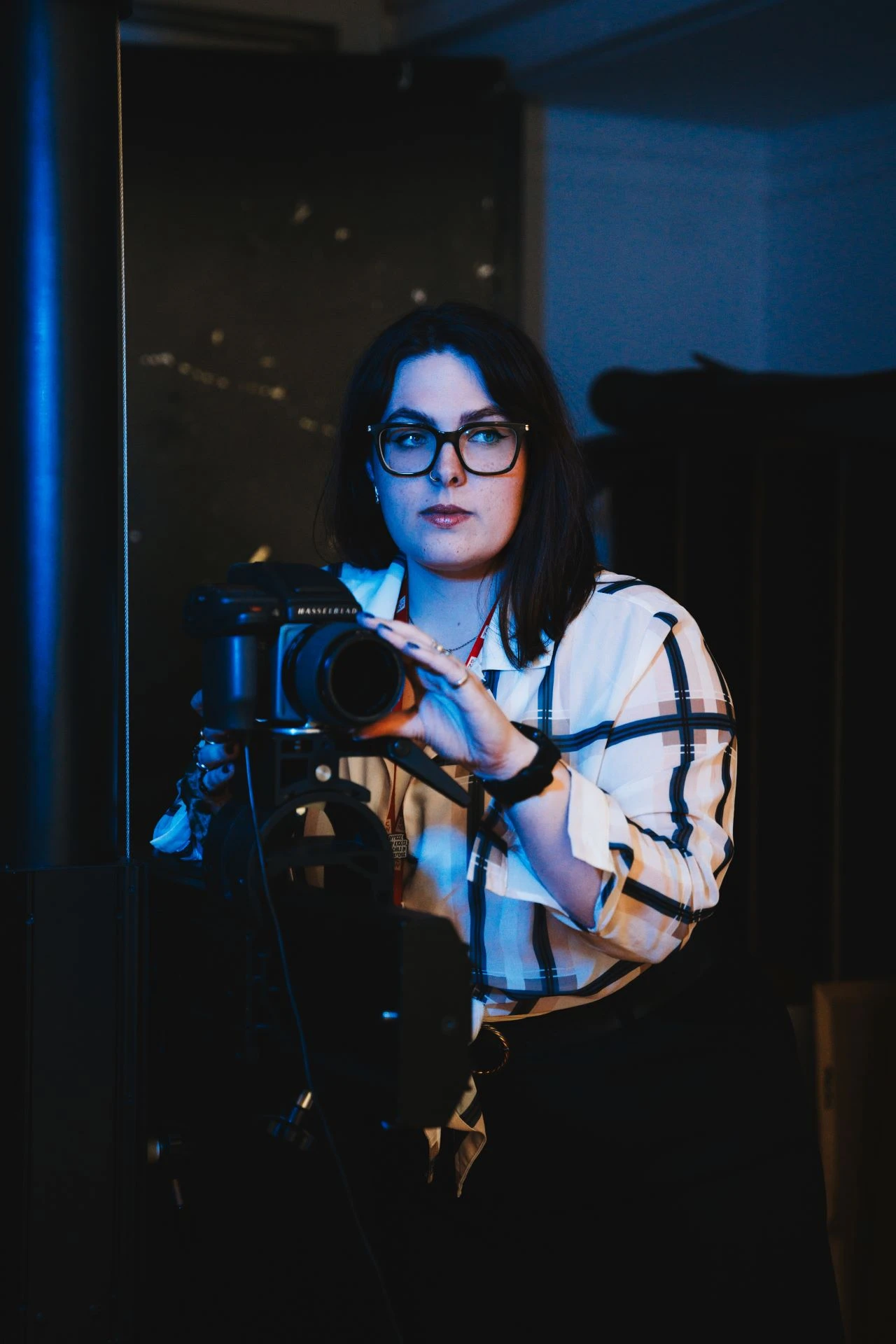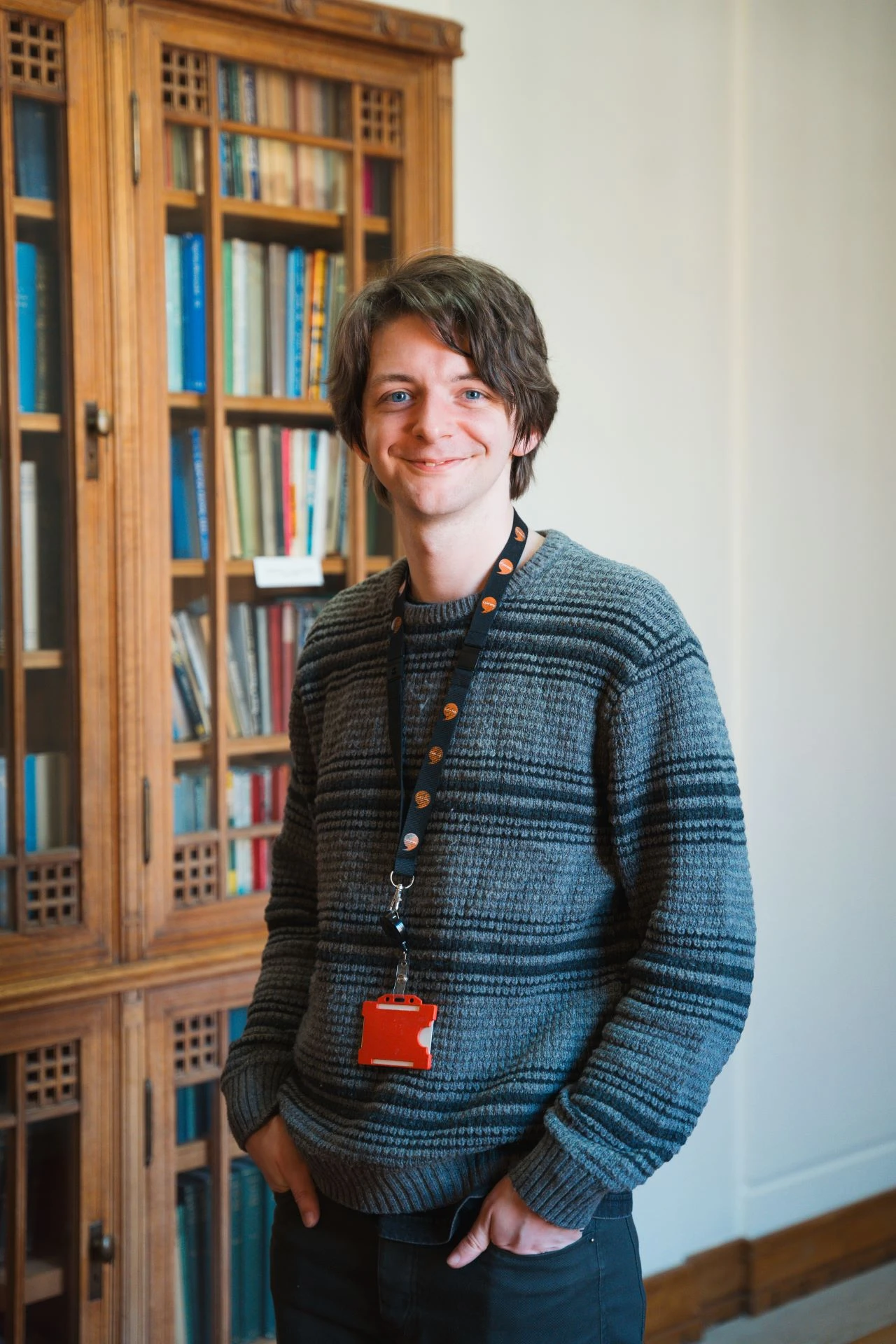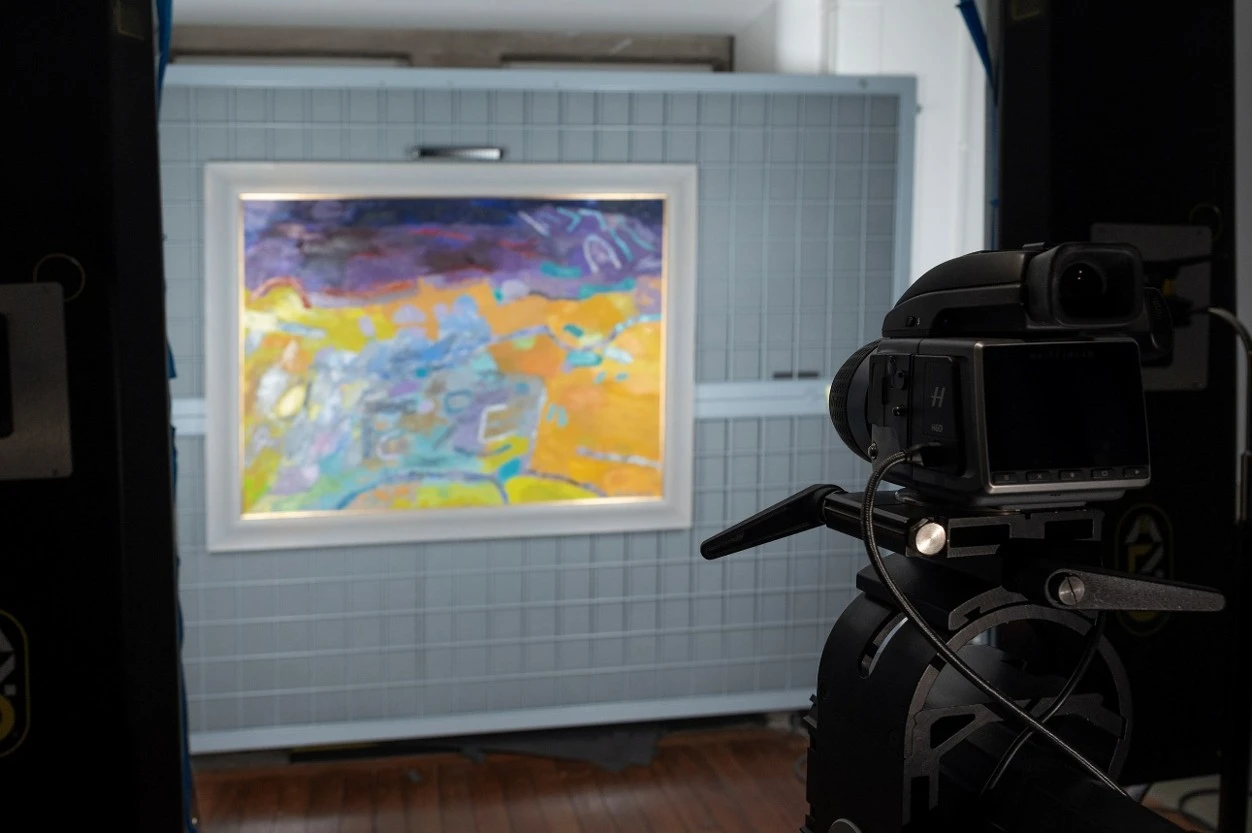10,000 artworks from the National Library of Wales’ contemporary art collection are now available to view online on the CELF website. Along with the collection at Amgueddfa Cymru - Museum Wales they make up the National Collection that belongs to everyone in Wales. Thanks to a recent extensive digitisation project, paintings, sketches, 3D artworks and photographs which could previously only have been seen by visiting the Library in person are now available online to browse and view in detail wherever you are.
Many people have contributed to this digitisation process, from choosing the works, photographing and categorising them, to getting them up online.
Morfudd Bevan, Art Curator, The National Library of Wales
Scott Waby, Head of Digitisation, The National Library of Wales
Courtney Evans, Imaging Technician, The National Library of Wales
Gethin James, Keywording Assistant, The National Library of Wales
Sian Jones, Copyright Officer, The National Library of Wales
Phoebe Murray-Hobbs, Community Loans Officer, The National Library of Wales
Read on to meet some of these individuals working at the National Library, find out more about their role within the operation, and their personal favourites from the newly digitised collection!
Morfudd Bevan
My role was to choose thousands of artworks from the Library’s contemporary art collection to appear on the CELF website, alongside the former head of our art unit, Lona Mason. I thoroughly enjoyed researching the collections and rummaging through the picture stores, knowing that these works would appear on the website in the future for all to enjoy. It has been fantastic to work with the National Museum in Cardiff on this project, bringing the national contemporary art collections of Wales together.
I also commissioned artists to create new artworks which were inspired by the Library’s contemporary art collection. These artworks will become a permanent part of our collections, to be enjoyed by all for generations to come. It has been a privilege to work with Bedwyr Williams, Isabel Adonis, Kyle Legall, Morgan Dowdall and Natalie Chapman on these commissions, and we are looking forward to sharing news about these works shortly.
It is very difficult to choose my favourite artwork from our contemporary art collection, but recently the Library has been fortunate to purchase the work ‘Rhitta Gawr’ by the textile artist Anya Paintsil for our collection, and it will be fantastic to see this work on the CELF website. Anya is a Welsh and Ghanaian textile artist who draws inspiration from her childhood in North Wales, and the Fante tradition of figurative textiles. She combines craft practices she was taught as a young child; rug making, appliqué, hand embroidery, and afro hairstyling techniques to create large-scale portraits. In this dynamic artwork, Anya re-imagines the mythical Wyddfa giant, Rhitta Gawr, through her use of wool, hair and colourful plastic clips.
The website will showcase how our collections are constantly evolving to reflect the richness of contemporary art in Wales.
Scott Waby
As Head of Digitisation at the National Library of Wales, I lead a dedicated team focused on digitising a wide range of materials from our vast and diverse collections. These include medieval manuscripts, archives, books, newspapers, paintings, and an array of audio-visual formats.
In the 25 years I’ve worked here, I’ve witnessed significant changes in how our readers interact with our collections. Today, digitisation is an important part of the institutions work, bringing the National Library’s collections to a global audience. One of the most rewarding aspects of my role is seeing once hard-to-access items—such as historic newspapers—transformed into easily searchable, freely available resources. The ability to search millions of pages in seconds has opened up new possibilities for research and discovery.

A particularly exciting initiative is the CELF project, which has made thousands of items from deep within our stores in Aberystwyth, more accessible than ever before. This project is a testament to the power of digitisation in preserving and sharing our cultural heritage. I have many favourites within the Contemporary Art collections, but I’m often drawn to the simple, unpretentious works of Christopher Hall. His paintings of people going about their business in small towns and villages in Wales manage to be both drab and idyllic at the same time - some have said he was like a ‘Welsh Lowry’. I wouldn’t disagree.
Courtney Evans
I have been working as an Imaging Technician for the project since October 2023. This has involved scanning and photographing hundreds of different works of art from a wide range of artists and photographers.
The role has involved working with new ways of digitisation that I had never experienced before. I had previously worked with the local town museum in photographing objects for their 50th anniversary before starting the position, so working within a studio wasn’t new to me, but the equipment used in the library was much more advanced at creating a more accurate way of digitising.
I’ve enjoyed working in the studios and capturing all these works that may have possibly been unseen by the public before. Having the chance to enable more people to see these artworks wherever they are in the country was an important part of the role to me.

It’s difficult to choose a favourite piece of work that I’ve digitised for the project, I’ve seen so many! But if I had to narrow it down, I would choose Jane Carpanini’s works, especially her artworks of streets, such as ‘B & B, Caernarfon’. I have a fond interest in street/buildings photography, which I took up during the Covid lockdown, so to see different streets captured in watercolour paintings was not only a real treat for me. It was also a great way of seeing how someone could document a location through something different than photography. I also enjoyed going through all the different sketchbooks, including the likes of Peter Prendergest and Brenda Chamberlain, getting to see how each artist’s mind and artistic styles work and change throughout their painting lives.
Gethin James
When I first started in the library working for the CELF project, it was as a Keywording Assistant. My primary role was to look at the body of work that the library digitising for the project and then apply keywords or “tags” to the works in question as metadata attached to their catalogue entries in the library’s content management system, ALMA. These keywords would then be used to improve the searchability of library works on the CELF website, so that users can easily find art covering themes relevant to their interests. I also regularly liaised with my counterpart in Amgueddfa Cymru to ensure that keywording was being applied consistently, and for us to see if new keywords needed to be added to capture any recurring themes or motifs that I noticed in the course of keywording the library’s collection of artworks.
My background is primarily in physics, I completed my undergraduate degree in Physics at Swansea University back in 2023 doing a final year project on Magnetic Resonance Spectroscopy (MRS). After that, I worked with my family’s plant hire company for a short time as a machine operator, driving dump trucks and telehandlers, et cetera, as well as a general labourer helping to operate a drill rig, so a job focused on art was certainly a change in pace, and quite a refreshing one at that.
I have always had an interest in art, though somewhat casual compared to someone with a formal education perhaps, and I always desired to work in the National Library as an institution that houses important Welsh cultural artifacts. The most interesting part of this job was getting to see the breadth and variety of works created by, for, or about Wales, particularly as the focus of the project has been on Welsh contemporary art, which I’m much more appreciative of now!
One of the challenges of the job has been navigating just how granular and particular to be with applying keywords to the artworks. When it comes to art, I’m sure many can agree it’s easy to disappear down a rabbit-hole trying to characterise a singular work, but the key thing to remember is that keywords aren’t there to characterise or analyse an artwork to the nth degree. Keywords are there as useful terms for the general public to be able to find works that they want to see, so it’s necessary to be a bit more broad or general rather than applying so many labels that the work shows up in almost any search!

There have been a few works that stood out to me working on this project, but the one sticks most firmly in my imagination has to be Clive Hicks-Jenkins’ Mari Lwyd Dancing. In it a naked male figure is carrying the traditional Welsh Mari Lwyd - a horse’s skull with a sheet hanging from it that drapes over the male figure and obscuring his head, while he holds the Mari Lwyd as if he were parading. The male figure stands in a surreal looking landscape, with washed out colours and a strange geometric structure beside him, with black clouds and a green-grey sky, and everything having a kind of wispiness and loose definition to it, that gives the image an ephemeral, dreamlike quality, the colour of the sky lending an almost stagnant air to it all.
Given the artist’s penchant for using the Mari Lwyd as a symbol for death, illness and fear, it seems likely this might be a depiction of some kind of nightmare or melancholy fantasy. This work has a calmer, less dramatic vibe compared to say, the Deposition series(link) of artworks by the same artist, so I have less of an inclination to claim that it is an entirely negative or fearful image, more one of resignation regarding such themes. The faceless nude male, parading under a spectre of death in a surreal landscape, almost makes think of the feeling of derealisation that might accompany a particularly upsetting or tragic personal event. Of course, this is all just my conjecture!
Sian Jones
I was the Copyright Officer for this project on behalf of the Library. This meant that I would search for the contact information for the artists, so that their permission could be obtained to digitise and display their work/works on the ‘CELF’ website. This meant that I very often would search for contact information on the internet; contacting the artists, family members, galleries, agents and also researched online newspaper archives.
Also, I was responsible for sending the Library’s copyright form either by e-mail or by post. In my experience, the artists reaction to the project was very positive, and they are very happy to see their paintings and/or drawings on a platform which will give access to everyone who wants to research and view the fantastic works we have in our collections.

My favourite work that has been digitised – there are so many, it is very difficult to select one! To be honest I like all of the works that will appear on this website. However, if I had to select one work, I would select something by Margaret D. Jones. I have been a big fan of her works since I was a child. Her series of romantic greeting cards, which include famous Welsh couples such as Macsen Wledig and Helen Luyddawc, Pwyll and Rhiannon and others are so full of detail, and I always discover something new, every time I look at them.
Phoebe Murray-Hobbs
I came in later to the CELF project at the Library, when the digitisation and keywording were in full swing. I haven’t been involved in the digitisation per se, but the work of the digitisation team has massively increased the scope of the work I am able to do for the CELF project with loans and engagement.
My role has been to co-ordinate loans of items in the Library’s contemporary art collection to the 9 other galleries within the CELF network. This means talking to curators about their upcoming exhibitions and then consulting with the art and photography teams here to see what relevant pieces the Library might have. The gallery will then request the artwork(s) they would like to borrow and we review the request at the Library – considering things like the condition of the artwork, how fragile it is, and whether we need it for any exhibitions or events at the Library. We always try to lend where possible. Once approved, logistics need to be organized – transport and insurance – before the work is loaned and goes off to feature in a new exhibition. This loans process was already happening in the Library - as it does in museums, libraries and galleries all over the world - but with the CELF project we are able to loan more of the National contemporary art collection to other galleries across Wales, so that more people can view these artworks.
Up until this point, there has been a lot of me taking snaps of art on my phone for curators to show what we have that they might like to borrow for their exhibitions. Now that the artworks have been photographed by Courtney, and are available online, the curators will be able to browse through high quality images of our collection. I’m really excited for them to be able to search through all these works at leisure, and to see the ideas for future exhibitions that come out of it!
Another part of my role has been to work with the team at Amgueddfa Cymru to organise commissions and content around the collection for the CELF website. We’ve done competitions, commissions and learning activities based around the national contemporary collection that you can see here, all made possible because of the digitised artworks.
I used to work as a languages teacher, first in secondary school, and later for adults. I am particularly interested in how visual art can be integrated into learning across the curriculum, and how exposure to artworks can support learning, research, wellbeing and creativity at all ages. Now the collection is up online and people can search based on themes and keywords that Gethin has added, the Library’s collection can be used by people all over the world to support research and learning, which I think is incredibly exciting!

It's very hard to choose a favourite artwork, so I will go with my first favourite that I saw when I started at the Library - Claudia William’s Greenham, Peace Vigil. I love the richness of the colours, the patterns and textures of the textiles in the scene, and the supportive, caring and joyful atmosphere evoked. The sketches that Claudia made when she was at Greenham Common have also been digitized, so you can see the artistic process from causal observations to the final painting. Many sketchbooks have been digitised which is rather special, because these objects aren’t often displayed, or if they are you can only see one page. Now you can flick through and see all the artists sketches, scribbles and annotations. It’s quite a personal connection with the artist as a person, which I think can be very inspiring, and it is a privilege to be able to do this from home!



